Recorder

“Go therefore and make disciples of all nations, baptizing them in the name of the Father and of the Son and of the Holy Spirit” (Matthew 28:19, RSV).



“Go therefore and make disciples of all nations, baptizing them in the name of the Father and of the Son and of the Holy Spirit” (Matthew 28:19, RSV).

At Pacific Union College, Emergency Management students gain real-world, hands-on experience that prepares them for any emergency. From swift water rescue training to local internships and firefighter volunteer opportunities, our students develop the critical skills needed to save lives and serve their communities.
puc.edu/experience admissions@puc.edu puc.edu • (800) 862-7080

Christ labored untiringly to accomplish the great work that He came to the world to do. His desire to save the lost race was manifest on all occasions. He went about doing good. It was his mission to help those in need, to seek the lost, to lift up the bowed down, to heal the sick, to speak words of sympathy and consolation to the sorrowing and the distressed. His heart was ever touched with human woe. How earnestly he worked for sinners! And how constant were his efforts to prepare his disciples to carry the gospel message to the ends of the earth!
—Ellen White, “Christ’s Example,” Review and Herald, Aug. 12, 1909
Publisher Ray Tetz
Editor Alberto Valenzuela
Assistant Editor Connie Jeffery
Design/Layout Stephanie Leal • Alberto Valenzuela
Printing Pacific
www.pacificpress.com
Adventist Health 916-742-0429
Kim Strobel strobeka@ah.org
Arizona
480-991-6777 ext 139 Jeff Rogers jrogers@azconference.org
Central California 559-347-3031
Justin Kim Communication@cccsda.org
Hawaii 808-595-7591
Miguel Manzo communicationsdept@hawaiisda.com
4 “Where Are They Now?”
8 Unity Through Christ
10 Adventist Pioneers in the West: Beginnings: Inventing a New Church Structure
14 What’s in a Day?
17 Ecclesiastical Deadlock: James White Solves a Problem That Had No Answer
21 Social Media in Evangelism: Advantages and Disadvantages
26 Arizona Conference
28 Central California Conference
32 Hawaii Conference 34 Holbrook Indian School
36 Adventist Health
37 La Sierra University
38 Loma Linda University Health 39 Pacific Union College 40 Nevada-Utah Conference
42 Northern California Conference
46 Southeastern California Conference
50 Southern California Conference
54 Community & Marketplace
60 Sunset Calendars
62 Zacchaeus Picks Up the Check
Holbrook Indian School 928-524-6845 x143
Kimberly Cruz kcruz@hissda.org
La Sierra University 951-785-2000
Darla Tucker dmartint@lasierra.edu
Loma Linda 909-651-5925
Ansel Oliver anoliver@llu.edu
Nevada-Utah 775-322-6929
Neat Randriamialison nrandriamialison@nevadautah.org
Northern California 916-886-5600
Laurie Trujillo Laurie.Trujillo@nccsda.com
Pacific Union College 951-809-6777
Gene Edelbach gedelbach@puc.edu
Southeastern California 951-509-2258
Taji Saleem taji.saleem@seccsda.org
Southern California 818-546-8400
Lauren Lacson Llacson@sccsda.org
Editorial Correspondents

here are they now?” Whether it’s a magazine or television special, many of us are interested in where those celebrities of the past have ended up today. Recently I read a story about Bobby Sherman, whose fame spanned the late 1960s and early 1970s. His music was on the radio, and his was a popular concert ticket. Most people have forgotten all about him. It turns out that as his fame faded, he become a technical reserve police officer with the Los Angeles Police Department. He was an EMT and was named LAPD reserve officer of the year. Bobby Sherman traveled a far distance from music stages and television screens. His story took a sad turn as it was announced recently that he suffers from stage 4 cancer.
“Where are they now?” isn’t just a question about celebrities though. It also applies to the people who are baptized as Seventh-day Adventists each year. I was struck by a statistic from the General Conference’s 2024 Annual Statistical Report.1 Going all the way back to 1965, over 45 million people have been members of our church. Of those, over 19 million have chosen

By Bradford C. Newton

to leave our fellowship. That is a net loss rate of 43%. If you are wondering why people leave our churches, there is research conducted by the General Conference that provides insights. 2 These are statistics—until it is our children, grandchildren, spouses, or friends who become one of these data points. It is then that we long for answers to the question, “What can we do better?”
We have a highly developed theology of mission as Seventh-day A dventists, rooted in the three angels’ messages and the Great Commission of Jesus. Our success stories are built around that theology: large evangelistic meetings that baptize thousands, city-wide
Our theology of retention is rooted in the very character of God Himself.

efforts that plant new churches, and recognition of congregations that year upon year add new members to their rolls. We rightly celebrate these blessings and should continue to do so.
Do we have a theology that informs and guides our efforts to retain the gains from those evangelistic efforts? I would suggest that if we do have anything at all it is quite informal in nature. Of course, we care. But my experience over decades of ministry is that talking about retention is a footnote to our main emphasis.
We measure what we value. In our denomination there are three principal measurements: 1) tithe, 2) membership, and 3) baptisms. Beyond these three pillars, all others jostle for the remaining slots. This is not a criticism but an observation that ought to call us to selfreflection. Is there more for us to consider as we are in the work of preparing a people for Jesus’ soon return?
There is a theology of retaining the gains of baptisms that begins at the dawn of creation. Ellen White writes, “When Adam’s sin plunged the race into hopeless misery, God might have cut Himself loose from fallen beings. He might have treated them as sinners deserved to be treated. He might have commanded the angels of heaven to pour out upon our world the vials of His wrath. He might have removed this dark blot from His universe. But He did not do this. Instead of banishing them from His presence, He came still nearer to the fallen race. He gave His Son to become bone of our bone and flesh of our flesh” ( God’s Amazing Grace , p. 176). The Bible tells us that “He chose us in Him before the foundation of the world” (Ephesians 1:4, NKJV) and that Jesus is “the Lamb slain from the foundation of the world” (Revelation 13:8, NKJV).
Our theology of retention is rooted in the very character of God Himself. When humanity rebelled, He had a plan. As all the innumerable created worlds remained faithful to Him and earth
was the only place where Satan’s charges against God found a home, He did not abandon us. His love compelled Him to come after the sons and daughters of Adam and Eve. John 3:16 says, “For God so loved the world, that he gave his only Son” (ESV) because His great heart of love would not leave us out of His family.
Our theology of retention is expanded through the teachings of Jesus. The great parables of the lost sheep, coin, and prodigal son in Luke 15 all speak to the desire of God to seek and save those who have been in the household of faith and departed. The call of Revelation 18:4, “Come out of her, my people” is not only a call to join God’s remnant church but is also a command to keep seeking even those who have slipped away from our fellowship. Embedded in the Great Commission in Matthew 28:19 are the words “make disciples,” which goes beyond a single decision to join the church. Jesus’ words speak of an investment by us in each person beyond the baptistry.
As an organization, we measure what we value. What might happen if at the close of each year our churches and conferences asked, “How many of those we baptized in the past 12 months remain with us today?” Just reporting the answer can lead us to have a detailed and intentional plan for each precious young person and adult who are baptized this year from “Sharing Jesus” and “Pentecost 2025.”
May the words spoken by Jesus be true for each of our churches as well, “Of those whom You gave Me I have lost none” (John 18:9, NKJV). By His grace let it be so.
Bradford C. Newton is the president of the Pacific Union Conference.
1“2024 Annual Statistical Report,” Office of Archives, Statistics, and Research, https://www.adventiststatistics.org/.
2Anthony Kent, “Leaving the Church: Why Some Seventh-day Adventist Members Leave the Church, and Why Some Come Back,” Adventist Archives, https://www.adventistarchives.org/why-did-they-leave.pdf.
By Vadim Dementyev
The unity described in the 14th fundamental belief resonates deeply with Jesus' prayer in John 17. Ellen White's counsel to “study prayerfully the seventeenth chapter of John” (Testimonies for the Church, vol. 8, p. 80) invites us to examine these profound words spoken as Jesus faced the culmination of His earthly ministry.
Jesus begins His prayer with “Father, the hour has come” (John 17:1), announcing a new era. This prayer—the longest recorded in the Gospels—though intimate between Son and Father, occurred in the presence of His disciples. We can imagine them listening intently, still processing the events of the Passover meal: Jesus washing their feet, the bread and wine taking on a deeper meaning. The Upper Room transformed everyday elements into profound symbols—a loaf of bread shared as the body of Christ, grape juice representing sacrificial blood, a king becoming a servant, danger giving way to hope, an apparent ending revealing a new beginning, and a simple table becoming a sacred space as the new High Priest inaugurated a new era.
This new era restored God's full glory on earth for the first time since Eden. That completeness became possible only through Jesus Christ (John 1:14). How did Jesus bring the full glory to God? It was through the perfect love between Father and Son, manifested in Jesus “finishing” (teleioō) the Father's work (John 17:4). The Greek verb teleioō conveys achieving a goal
perfectly—hitting the target's center. There appears to be a strong correlation between the fullness of God's glory and the perfect relational unity within the Godhead. To glorify God means to embrace Trinitarian unity (fundamental belief #2) and to invite creation to participate in the life of the Trinity, which Jesus accomplished through His incarnational ministry.
In this new era, people can grasp God's complete revelation only through Christ, and only through Christ can they experience fullness in their relationships with God and one another.
Jesus envisioned a world reflecting God's Triune nature. Just as Christ is our source of divine revelation (John 17:7-8), He must become central to all human social experiences (John 17:10). Dietrich Bonhoeffer emphasized Christ's essential role in understanding the social lives of Christians when he wrote, “Because Christ stands between me and others, I dare not desire direct fellowship with them. As only Christ can speak to me in such a way that I may be saved, so others, too, can be saved only by Christ himself.... Spiritual love recognizes the true image of the other person which he has received from Jesus Christ; the image that Jesus Christ himself embodied and would stamp upon all men.”1
Since we're examining unity in John's Gospel, it's fitting to connect Jesus' prayer with John 3:16, which emphasizes the inclusive nature of God's salvation. The terms “the world” (Greek: kosmos) and “everyone” (pas) indicate that divine redemption is available
to all humanity (John 17:1-2). Could Jesus's prayer for oneness transcend mere church unity? Initially, it seems Jesus was praying only for His followers' protection and unity (John 17:11), which would make sense given the hostile environment early Christians faced. Opposition from Roman culture could have served as a unifying force for believers.
Later in His prayer, Jesus returns to the theme of oneness in verses 20-21: “I ask not only on behalf of these, but also on behalf of those who will believe in me through their word, that they may all be one.
As you, Father, are in me and I am in you, may they also be in us, so that the world may believe that you have sent me” (NRSV). This passage prompts us to reconsider the relationship between believers and non-believers. Jesus may be addressing two aspects of unity: unity within the church provides divine protection, while unity between the church and the world completes God's glory.
Though having a common enemy often unites people, Jesus's prayer suggests that His followers should not unite against the world but for the sake of the world—requiring engagement rather than isolation. Jesus envisioned His church actively engaging the world with the gospel (Revelation 14:6), demonstrating unity in Him and His redemptive work. I witnessed such unity during the pandemic, when in-person gatherings were prohibited. While serving as a Community Engagement pastor at La Sierra University church, our food pantry distribution faced a crisis when most elderly church volunteers could no longer serve. Food shortages became evident in our community, with hundreds of families seeking help. I contacted Dr. Cheryl-Marie Osborne Hansberger, chief of staff for Riverside's mayor—a connection made possible through Senior Pastor Chris Oberg's relationship with the mayor's office. Within hours of the city's announcement, over 100 volunteers from diverse backgrounds contacted me, united by the common goal of service. During those challenging weeks of isolation, neighbors and church members united with unprecedented unity and joy.
If unity is about connecting with others for the sake of glorifying God's name, it makes sense that welcoming strangers and caring for foreigners was one of the strongest imperatives and spirituality tests in the Bible (Exodus 23:9; Leviticus 19:33-34, Deuteronomy 10:18-19; Zechariah 7:9-10; Romans 12:13). Welcoming outsiders creates transcendent unity that is not based on human-determined classifications such as race, nationality, gender, or class but is oriented toward the categories of the kingdom of God—acceptance and care for all humans. The unity for which Jesus prayed meant fostering a deeper sense of belonging, which is a universal need for all people. One can never be fully human or find fulfillment without belonging to communities of other humans.
I believe intentionally cultivating a sense of belonging might be a litmus test of unity and vice versa—unity fosters belonging. Jesus' prayer for unity was both the attribution of the fullness of glory to God and the subversion of earthly tendencies toward division and rejection of those who do not belong to our social groups. Bringing a sense of fulfillment and belonging to humanity in categories of the heavenly kingdom creates a unity that transforms people in the likeness of Jesus.
In conclusion, to prepare the world for Christ's return and give God full glory, we must recognize the essential connection between Trinitarian theology and the church's incarnational presence in the world through Christ's power. In this new era, the church finds unity not by withdrawing from the world but by engaging it, transforming it through the good news of Jesus Christ in word and service and by welcoming all in the name of the Father, Son, and Holy Spirit.
Vadim Dementyev is associate director of The Center for Community Change at the Seventh-day Adventist Theological Seminary at Andrews University.
1Dietrich Bonhoeffer, Life Together (London: SCM Press, 1954), pp. 21-22.

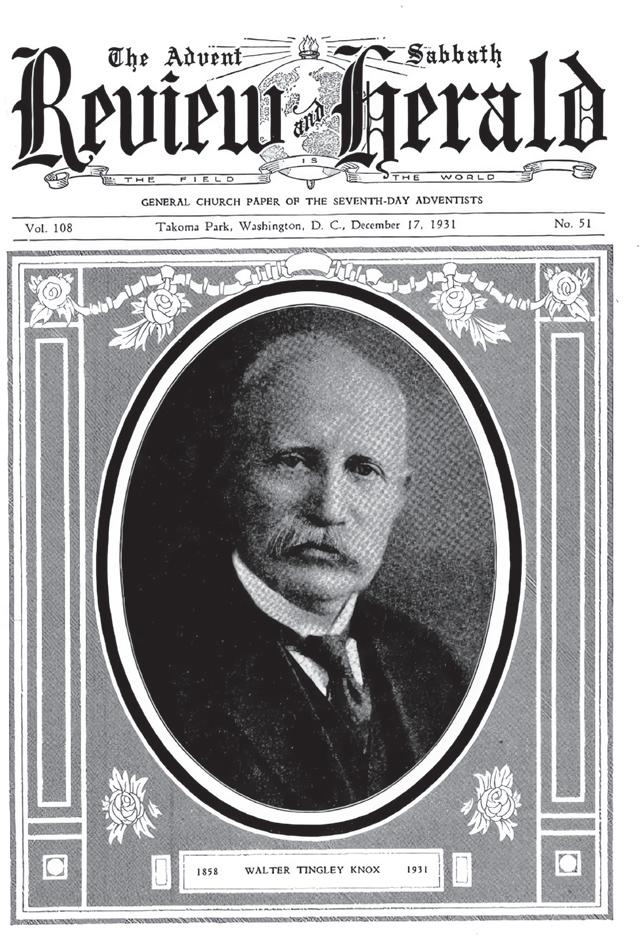
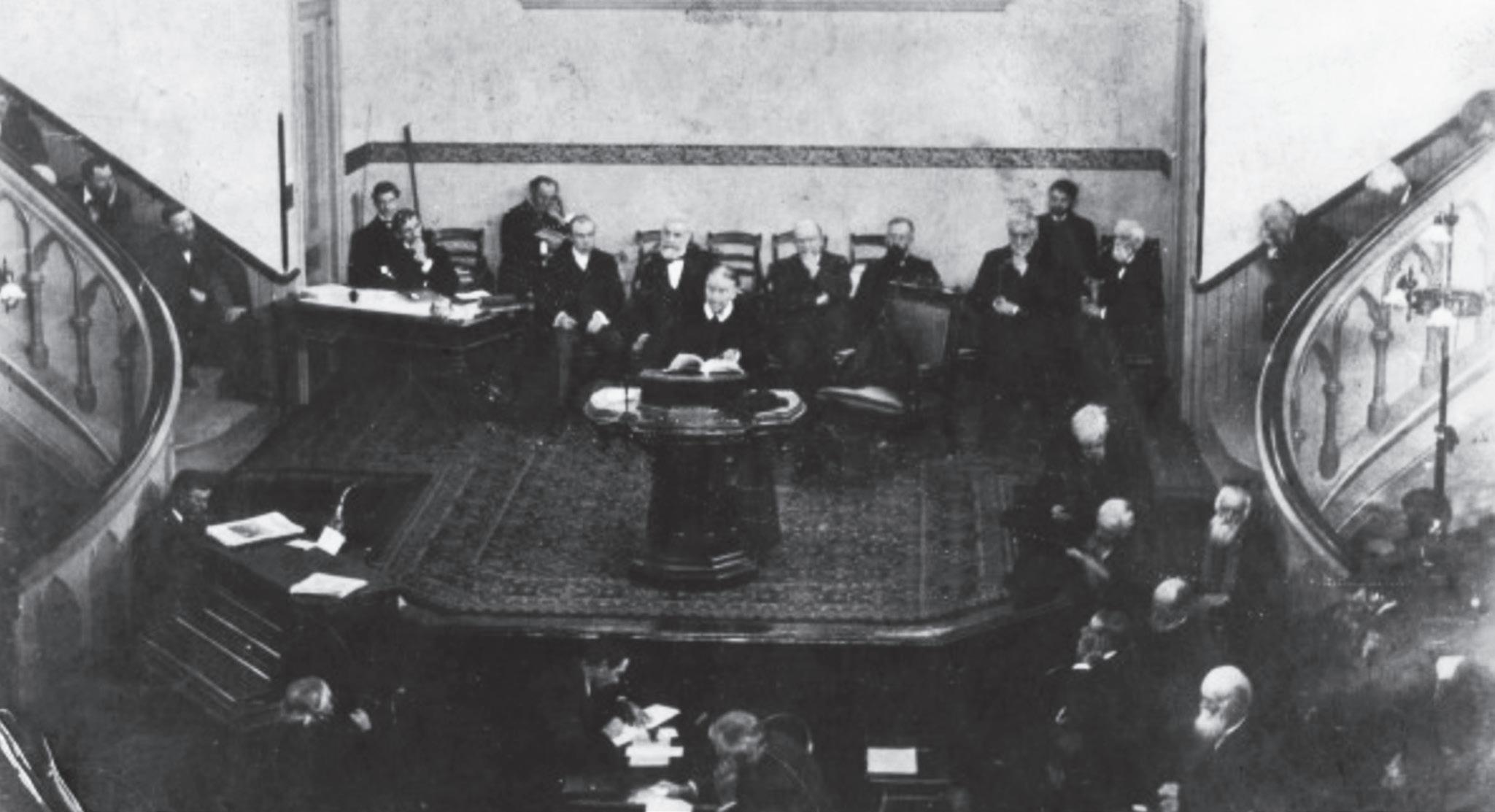

By the Recorder editorial staff
While Adventism in the West was already showing a distinctive character that embraced new methodologies, it was the increasingly cumbersome church structure that needed change.
In 1900, Ellen White returned to California from Australia and found a home at Elmshaven, just outside of St. Helena and down the hill from the Sanitarium. While Elmshaven would become her home for the rest of her life—the place where she prepared some of her most popular and important books and wrote hundreds of articles and messages—it was also here that plans were made for a new church structure.
That she had recently been in Australia had highlighted many of the problems. A long way from Battle Creek headquarters, it could take months for important letters to go back and forth between Australia and the U.S. Sometimes instant decisions were needed locally, but with authority vested in the General Conference this was impossible. Consequently, leaders in Australia had started experimenting with a more distributed system of church organization that did not require all decisions to be taken by a central body located thousands of miles away.
Until 1901, all Seventh-day Adventist churches in the world were administered by local conferences (as now), and all the conferences in the world were administered by the General Conference, then headquartered in Battle Creek, Michigan. But in her opening address to the delegates at the General

Conference session in Battle Creek, April 2-23, 1901, Ellen White pled vigorously for a completely new church organization that would dramatically diminish what she called the “kingly power” of the leaders in Battle Creek and transfer that power to leaders closer to the local level.
As part of the resulting reorganization of 1901, local church conferences were grouped into union conferences. After April 1901, the local conferences would deal with union leaders, not with General Conference leaders. This enabled local churches, schools, and missions to receive much quicker responses when they needed support or approvals, it created a mechanism for world policies to be
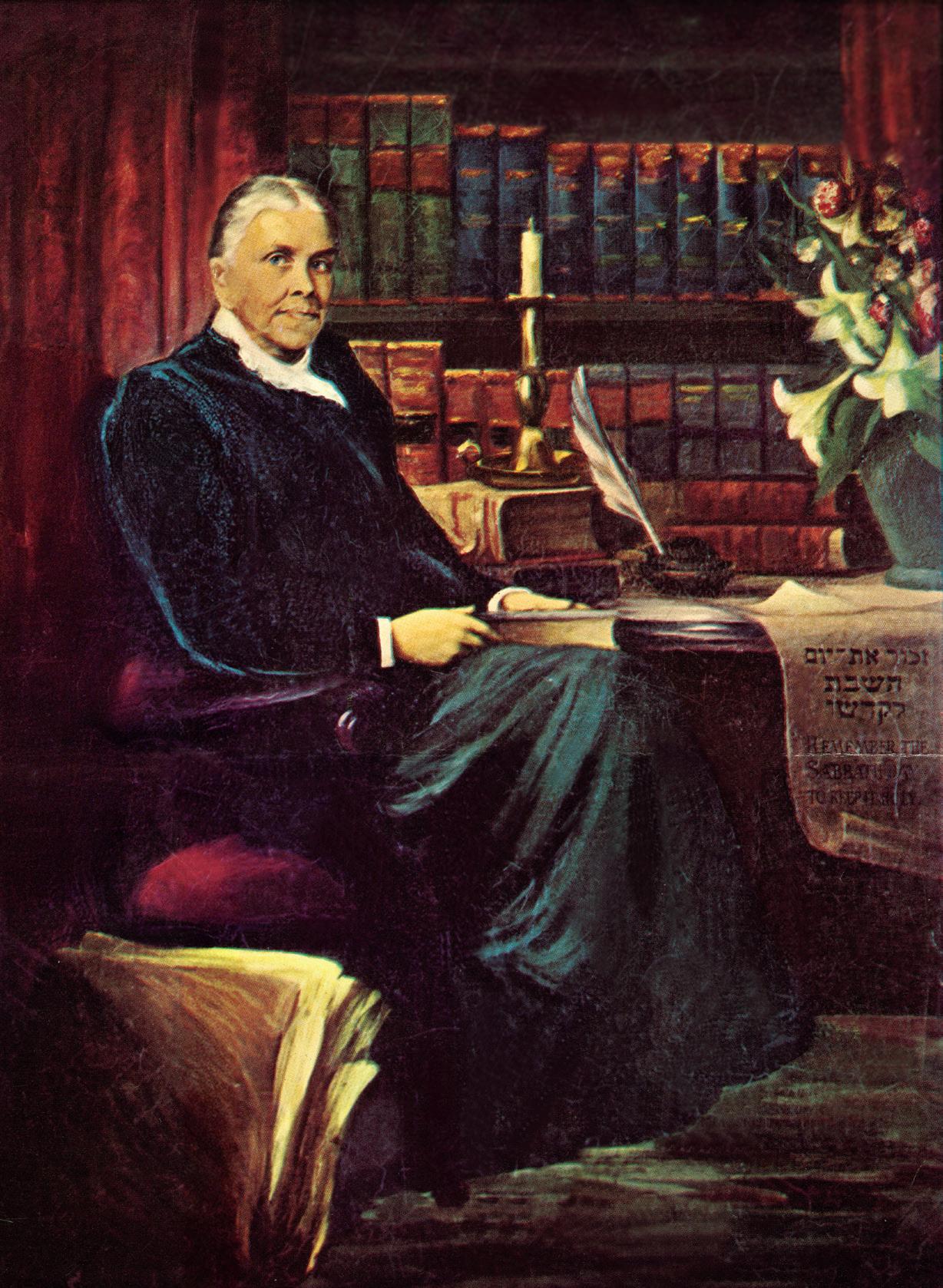
adapted to local structures, and it created a wide base of representatives to participate in world church decisions—union presidents from around the world. In the 21st century, the union presidents remain the most influential decision-makers in the worldwide church.
According to the "Constitution of the Pacific Union Conference," which was published in the very first Pacific Union Recorder (dated Aug. 1, 1901, subscription rate: 50 cents annually), “This

Conference shall comprise the states of California, Oregon, Washington, Idaho, Montana, Utah, and Nevada, the Province of British Columbia, the Territory of Alaska, and such other territory as may hereafter come under its supervision” (p. 4). The Arizona and Hawaii territories were also assigned to the Pacific Union by the General Conference.
While this rearrangement may appear to be only of interest to church historians, its impact is still with us today. Not only did it form the system of church governance that we still have, it demonstrated a commitment to the importance of local decision-making over a centralized bureaucracy that hampered the church’s mission. In particular Ellen White warned about the consolidation of power in the hands of a few men as being contrary to God’s will:

“I was told that I must lift my voice in warning against this.... We were not to be guided by men who want their word to be the controlling power. The development of the desire to control has been very marked, and God sent warning after warning, forbidding confederacies and consolidation” (Pacific Union Recorder 3, no. 8, [Nov. 19, 1903], p. 2).
“It has been a necessity to organize union conferences, that the General Conference shall not exercise dictation over all the separate conferences” (Christian Leadership, p. 26).
“The division of the General Conference into
The creation of the Pacific Union Conference in 1901 brought many important aspects of the work under local control.

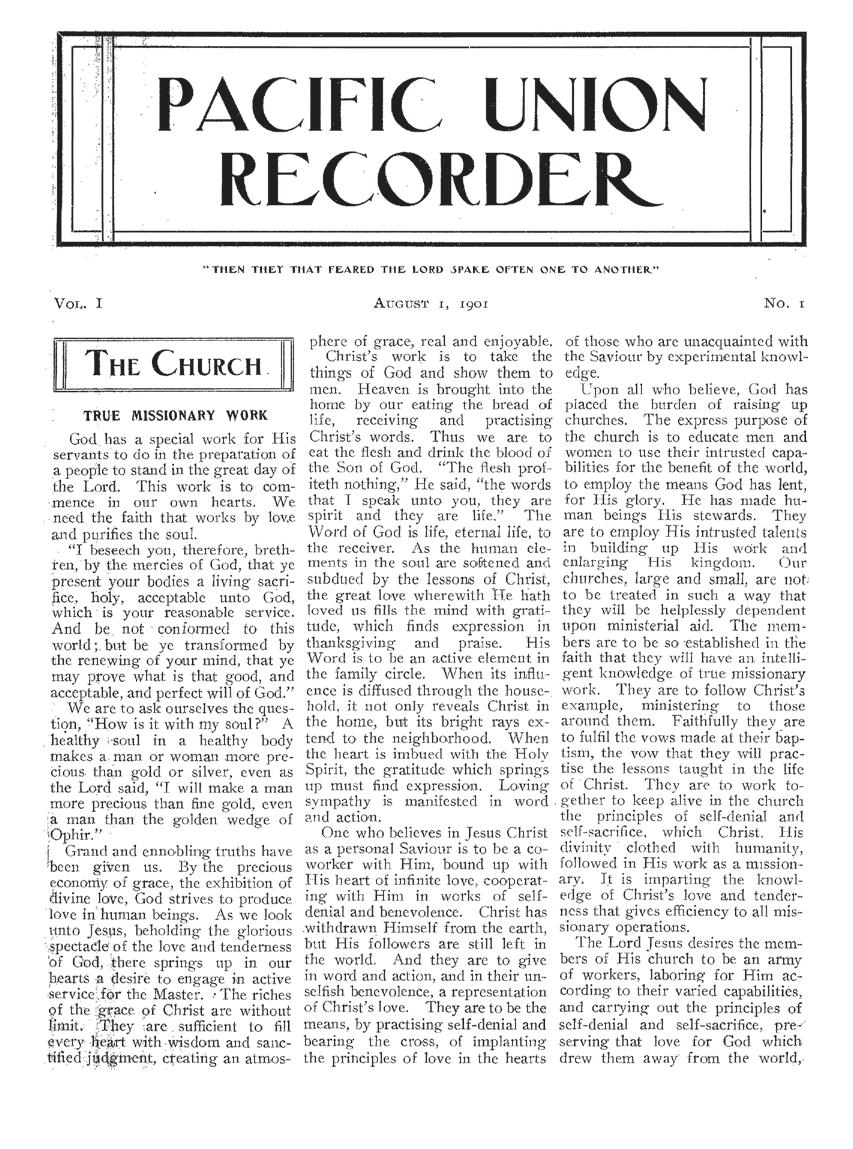
District Union Conferences was God's arrangement. In the work of the Lord for these last days there should be no Jerusalem centers, no kingly power. And the work in the different countries is not to be bound by contracts to the work centering in Battle Creek, for this is not God's plan.... The kingly power formerly revealed in the General Conference at Battle Creek is not to be perpetuated” (Principles for Christian Leaders, p. 108).

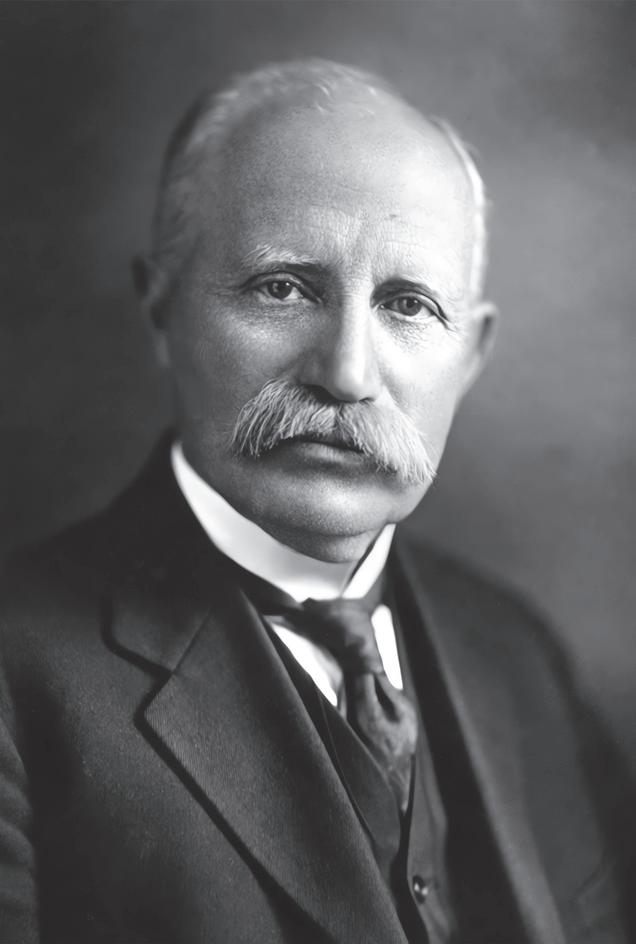
Her conclusion after the reorganization was, “At the last General Conference [1901] the work of organizing union conferences was well begun. This work, carried forward till a thorough and efficient organization is perfected, will prove a great blessing” (Pacific Union Recorder 1, no. 5, [Sept. 26, 1901], p. 1).
The creation of the Pacific Union Conference in 1901 brought many important aspects of

the work under local control. This provided the opportunity for creative ministries and innovative evangelism—as has been shown in a number of the articles that have been printed recently in the Recorder in this “Beginnings” series.
The West became an important “test bed” for new approaches and programs, not limited to direct outreach but also including medical work, health promotion, community service, education at all levels—and later, media ministries such as radio programs and TV broadcasts.
It is not an exaggeration to say that because of the wisdom of decentralizing the church’s structure, many important experiments involving the church and its activities became possible, with the Pacific Union being very much an integral part of such innovations. Today the Pacific Union continues to hold this philosophy in helping to develop new ways of outreach and service to the many communities that make up this leading area of God’s work.

By Mila León
In our modern, fast-paced society, where time is money and every second counts, it's easy to forget the simple value of a day. Businesses operate 24/7, self-worth is often reduced to net worth, and happiness is sold in the form of little pills. For many people, even worship is now more of an academic topic than a lived experience. In such a world, the concept of Sabbath rest—a day set apart from work and worldly concerns—feels distant, even foreign.
But what is a day, really? And what happens when we intentionally stop our constant striving for more and simply pause? Why should we take time to rest, when lost time seems to mean lost money? What could this kind of pause offer us physically, mentally, and spiritually? Why should we bother with it—and why does God bother with it? These are the kinds of questions we’ll be exploring here as we look more closely at the concept of the Sabbath—a tradition established at the beginning of Creation, maintained for over 6,000 years by the Jewish faith, and yet nearly forgotten in today’s world. Is there a way to recapture the original beauty of the Sabbath? More importantly, does it still have relevance in our lives today?
For many people, the idea of Sabbath is closely tied to legalism—rigidly observing rules and regulations. Modern Christians, especially, often dismiss
the notion that one day can be holier than another. Dedicating an entire day to God seems unnecessary in a culture that views attending a Sunday morning service as more than sufficient. In a world where work and financial success dominate, the Sabbath is frequently viewed as a hindrance rather than a gift. An entire morning at church is already seen as an obligation, so how can we justify setting aside even more time when there is so much else to do?
Three major objections to the Sabbath come up frequently in our society today. The first is the length of time involved: a full 24 hours. In an era where our entertainment and information come in bite-sized chunks—22-minute TV shows, 5-minute news updates—a whole day of rest feels excessive, if not absurd. What if something important happens during that time? What if a boss or colleague needs to reach us? What if deals fall apart or sales are lost? In a world that values productivity above all else, setting aside a day for rest feels almost reckless.
The second objection is boredom. What on earth are we supposed to do for an entire day with no

work, TV, Facebook, TikTok, or shopping? Even if we attend church services for a few hours in the morning, what comes next? Our culture has trained us to expect constant stimulation—background noise from the TV, music in the car, kids glued to their smartphones. We crave entertainment from the moment we wake up to the moment we fall asleep. The idea of spending a full 24 hours without these distractions is not just daunting—it’s downright terrifying for some.
The third issue is the one of authority. Many of us have a natural resistance to being told what to do, and this resistance only grows when it comes to our free time. During the workweek, we follow instructions from bosses and meet the demands of daily life. The government sets regulations we have to follow—even on the road, we adhere to speed limits and traffic laws. After a week of obligations, the last thing we want to do on our weekend is follow yet another set of rules. The idea of observing a day of rest, dictated by religious tradition or even God, feels like just another layer of

authority we’re not interested in submitting to.
At first glance, the Sabbath seems completely out of touch with modern life. It feels like an outdated relic, much like horse-drawn carriages or corsets— charming to look at in history books but impractical and irrelevant in the present day. It's all too easy to rationalize dismissing the Sabbath as something that simply doesn’t fit into our busy lives. But in doing so, are we missing something important?
When we pause to take a closer, quieter look at the Sabbath, the picture begins to change. The day that God set apart as holy transforms from an archaic burden into something much more beautiful—something desirable. Yes, the Sabbath is ancient. It was instituted over 6,000 years ago, at the very dawn of creation. And yet, its significance stretches far beyond time. Isaiah 66:23 tells us that the Sabbath will continue into eternity, in heaven. If this is true, and God Himself established the Sabbath, then surely it must hold some deep wisdom and lasting value.
So what happens when we begin to glimpse that value? We start to see that our modern, hurried
view of the Sabbath has missed its true essence. The Sabbath isn't about rigid rules or pointless restrictions. It’s about rest—real, soul-refreshing rest. It’s about stepping away from the frantic pace of the world and reconnecting with something deeper, something eternal. It’s a gift, not a burden.
In our world of non-stop activity, the Sabbath offers a chance to breathe, reflect, and recharge. Physically, it provides a much-needed break for our overworked bodies. Mentally, it gives us the space to slow down and quiet the constant noise of modern life. And spiritually, it allows us to reconnect with God in a meaningful way—away from the distractions that so often pull us away from Him.
Perhaps the Sabbath, far from being irrelevant, is exactly what we need in today’s world. It’s not just about taking time off from work—it’s about taking time for ourselves, for our relationships, and for our relationship with God. When we begin to see the Sabbath for what it truly is, we may find that it’s not an inconvenience, it’s a blessing.
Mila León is a freelance writer from Tucson, Arizona.
The Sabbath isn’t about rigid rules or pointless restrictions. It’s about rest—real, soul-refreshing rest.

By George R. Knight
Church organization was among the most challenging issues in early Adventism, spanning nearly two decades. The resolution not only established aspects of church order absent in Scripture but also provided a key hermeneutical principle for addressing other ambiguities in the Bible. This transformation enabled Seventh-day Adventism to evolve into a global movement, avoiding the stagnation of other Millerite branches.
In 1844, George Storrs declared that “no church can be organize d by man’s invention but what it becomes Babylon the moment it is organized.”1
This resonated with many Millerites, including James White and Joseph
Bates, who came from the non-hierarchical Christian Connexion. Ellen White, despite her Methodist background, also saw organization as oppressive after her family was disfellowshipped in 1843 for their beliefs.
The fledgling Sabbatarian movement distrusted centralized structures, associating them with persecution and “Babylon.” However, by the 1850s, disorganization created confusion—a second biblical definition of Babylon. James and Ellen White began emphasizing this point, realizing that structure was essential for growth and unity. Even Bates, initially anti-organization, argued that restoring biblical church order was necessary before Christ’s return, linking it with the restoration of the Sabbath.
The core issue wasn’t recognizing the need for organization but finding biblical justification for it. Sabbatarian leaders, steeped in a literal interpretation of Scripture, initially insisted that every aspect of church structure be explicitly detailed in the Bible.
James White, Joseph Bates, and others initially promoted gospel order at the congregational level. By the mid-1850s, they implemented practices such as ordaining deacons, elders, and pastors. Bates defined “church” as a local congregation, reflecting the prevailing focus on local, rather than broader, organization. However, practical challenges—property ownership, paying and assigning preachers, transferring membership, and inter-congregational relations—highlighted the need for a more comprehensive structure.
By 1859, James White began advocating for systematic organization to address these issues
and extend missionary efforts. He openly criticized the fear of organization as Babylonian, arguing that rejecting biblical order made the Adventist movement more deserving of the Babylon label.
James White’s shift in hermeneutics was pivotal. Initially, like others, he believed church structure had to be explicitly outlined in Scripture. By 1859, however, he argued for a more pragmatic approach: “We should not be afraid of that system which is not opposed by the Bible, and is approved by sound sense.” 2 This shift enabled creative solutions to organizational challenges.
White contrasted his position with literalists like R.F. Cottrell, noting that practices such as publishing a weekly paper or building worship spaces weren’t explicitly commanded in Scripture but were necessary for the church’s mission. He urged Sabbatarians to balance prayer, Bible principles, and common sense. 3
This new hermeneutic also reframed the concept of Babylon. No longer limited to persecution, Babylon also symbolized confusion, which White argued was impeding the church’s mission to preach the three angels’ messages.
In 1860, James White proposed incorporating church property to ensure legal ownership and protection. This sparked opposition from literalists like Cottrell, who saw no biblical precedent for such actions. White responded by reiterating his principle: if a practice advanced the church’s mission and didn’t contradict Scripture, it was permissible.
At a pivotal conference in October 1860, delegates debated these issues. White successfully argued that church property should be legally held, asking opponents to provide
White’s hermeneutical shift and pragmatic approach to organization were crucial for the church’s global mission.
a single biblical text proving this was wrong. Unable to do so, the opponents conceded, and incorporation was approved.
The conference also addressed the need for a formal name, ultimately adopting “Seventh-day Adventist.” This marked a turning point in the movement’s identity and organizational structure. 4
White’s hermeneutical shift and pragmatic approach to organization were crucial for the church’s global mission. A rigid literalism would have left the movement ill-equipped to adapt and grow. His leadership ensured that the church could balance biblical principles with practical considerations.
Several concerns directly relate to James White finding the hermeneutical key to issues not conclusively settled in the Bible, particularly those related to women in ministry and the ordination of women. The first is that there is no biblical text or texts on either side of the discussion that conclusively settle the issue of ordination. If there were, the debate would be over.
Of course, some put forward the male headship argument as the conclusive answer. But that is a disastrous approach for those who take the Bible seriously. After all, the Bible is clear that Christ is the only head of the Christian church and that all Christians are brothers and sisters in the body of that church (Ephesians 1:22-23; 4:15-16; Colossians 1:18). The Bible puts forth no intermediary position between Christ as head and believers as the body. Male headship theology may be at the heart of Roman Catholic ecclesiology, but it has never been so in Adventism, which has traditionally advocated the New Testament’s teaching on the priesthood of all believers (1 Peter 2:9). The Bible’s teaching regarding male headship is framed in terms of family relationships rather than ecclesiastical (Ephesians 5:22-25; 1 Corinthians 11:3). 5
Another attempt to find a biblical answer to
issues related to the ordination of females is to appeal to such texts as 1 Timothy 2:11-15 and 1 Corinthians 14:34-35 as the final answer. However, such an appeal not only has its own exegetical issues but is very problematic for

Seventh-day Adventists. I demonstrate in another connection that such argumentation merely proves that Ellen White is a false prophet. After all, she spoke publicly all over the place and most certainly had “authority over men.”
The natural fallback argument to that logic is that Ellen White was a prophet rather than a pastor. But that response contains the seeds of its own destruction in that it violates the plain words of Scripture, which says “woman” rather than “every woman except a female prophet.” Here we must ask the question of just how much violence against the Bible is allowed in our attempt to defend a certain, preferred reading of a text.
Given Ellen White’s prominence in Adventism, passages such as 1 Timothy 2:11-12 and 1 Corinthians 14:34-35 had to be addressed early on and continuously in the denomination’s history. Up until the time when the ordination of women issue arose, the Adventist response had been consistent. Namely, that the counsel given about women was rooted in the custom of time and place and was not to be woodenly applied in a world in which conditions had changed. Thus, as The Seventh-day Adventist Bible Commentary puts it:
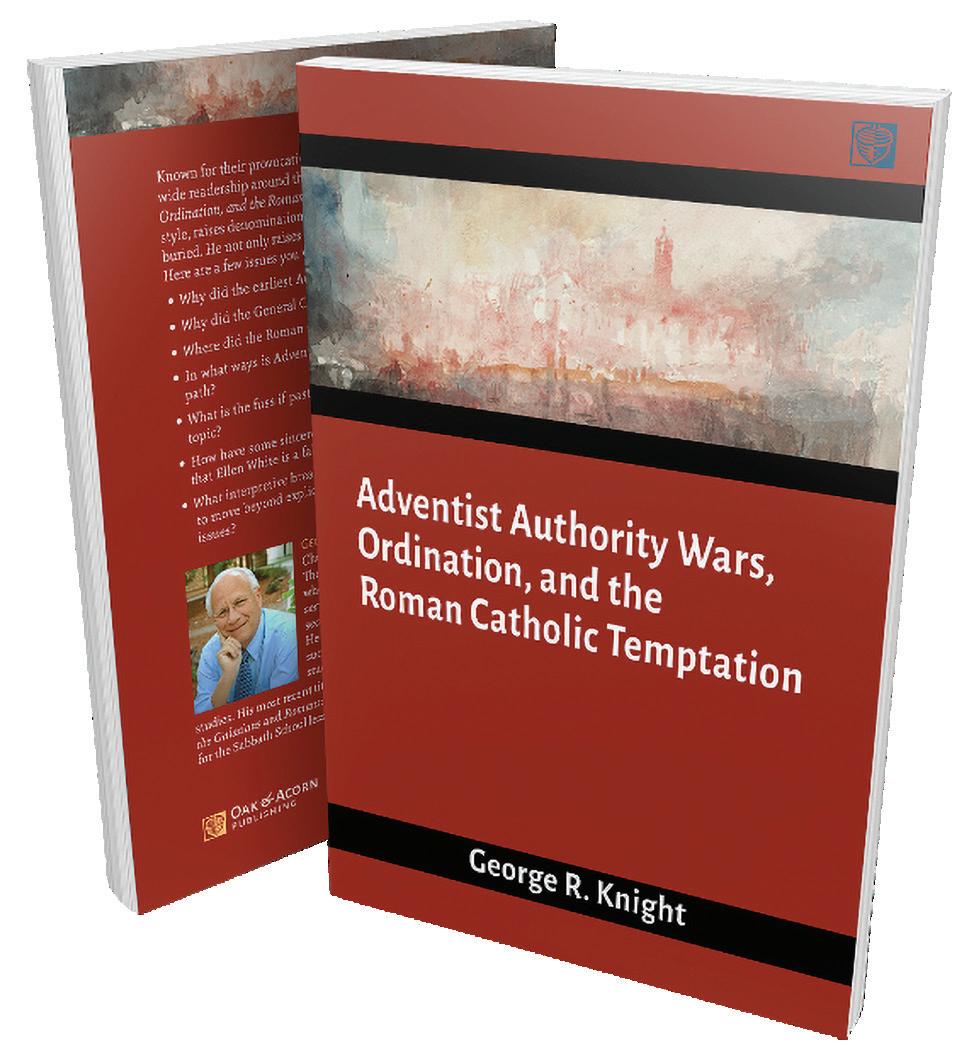
“Because of the general lack of private and public rights then accorded women, Paul felt it to be expedient to give this counsel to the church. Any severe breach of accepted social custom brings reproach upon the church.… In the days of Paul, custom required that women be very much in the background.” 6 The Adventist unanimity on the cultural interpretation of the passages, of course, hit a brick wall when the agenda of supporting the validity of Ellen White’s ministry ran head-on into the agenda of keeping women “in their place.” As might be expected, the new agenda of some has led to some interesting exegetical exercises that would have been strange fire indeed to James White, J.N. Andrews, J.H. Waggoner, and the other early Adventists, who consistently supported the cultural understanding of the disputed passages. 7
This article is an abridgement of Chapter 6 in George Knight’s book Adventist Authority Wars, Ordination, and the Roman Catholic Temptation (Westlake Village, CA: Oak & Acorn Publishing, 2017), pp. 147-158.
George Knight is a leading Seventh-day Adventist historian, author, and educator. He is emeritus professor of church history at Andrews University.
1George Storrs, “Come Out of Her My People,” The Midnight Cry (Feb. 15, 1844), p. 238.
2James White, “Yearly Meetings,” Review and Herald 14, no. 9 (July 21, 1859), p. 68.
3White, “Yearly Meetings.”
4James White, in “Business Proceedings of B. C. Conference,” Review and Herald 16, no. 22 (Oct. 16, 1860), p. 170.
5See “On the Headship of Christ in the Church: A Statement of th e Seventh-day Adventist Theological Seminary, Andrews University, ” in John W. Reeve, ed., Women and Ordination: Biblical and Historical Studies (Nampa, ID: Pacific Press Pub. Assn., 2015), pp. 39-45.
6Francis D. Nichol, ed., The Seventh-day Adventist Bible Commentary (Washington, DC: Review and Herald Pub. Assn., 1957), vol. 7, pp. 295-296.
7Denis Fortin, “What Did Early Adventist Pioneers Think About Wo men in Ministry,” Digital Commons , Apr. 8, 2010, https://digitalcommons. andrews.edu/cgi/viewcontent.cgi?article=1019&context=mml. See also Theodore N. Levterov, “The Development of the Seventh-day Adventist Understanding of Ellen G. White’s Prophetic Gift, 184 4-1889” (Ph.D. dissertation, Andrews University, 2011), https://digital commons. andrews.edu/dissertations/83/.

By Alberto Valenzuela
Statements like these have moved many an evangelist and preacher to come up with creative ways to share the gospel. Dr. J. Wayne McFarland, a Seventh-day Adventist health advocate, co-developed the Five-Day Plan to Stop Smoking, which drew millions to seminars in the 1960s1 —perhaps one of the most creative programs we’ve had as a church. In the 1990s, while working at ADRA, I was involved in Global Village, an interactive exhibit designed to increase awareness of impoverished living conditions in the world. Global Village was so effective that it was featured on national television and in major newspapers like The Washington Post and The Los Angeles Times. 2
“The gospel invitation is to be given to the rich and the poor, the high and the low, and we must devise means for carrying the truth into new places and to all classes of people” (Ellen G. White, Medical Ministry, p. 312).
“Whatever may have been your former practice, it is not necessary to repeat it again and again in the same way. God would have new and untried methods followed” (Ellen White, letter 13, 1897).
Our church leaders—at the local, conference, and union level—have utilized different new ways to share the Adventist message of hope to communities in the territory of the Pacific Union Conference. Reports about some of their efforts have appeared in the Recorder as well as in All God’s People, our biweekly video program.
In the modern digital age, social media has transformed the way people connect, share information,

and communicate across the globe. The Seventh-day Adventist Church, like many other religious organizations, has recognized the potential of social media as a powerful tool for spreading the gospel. As society increasingly shifts online, Adventist evangelism faces both opportunities and challenges in harnessing the potential of social media. I want to consider how using social media could benefit our mission to share the Good News, but I also want to point out possible disadvantages of relying on that tool.3
One of the most significant advantages of social media is its ability to reach a global audience. Platforms like Facebook, YouTube, Instagram, and Twitter allow Adventist evangelists to share their messages with people from different countries and cultures, transcending geographic boundaries. Through social media, the gospel can be accessible to individuals in areas where traditional missionary work may be difficult or restricted. This global accessibility means that Adventist evangelism is no longer limited to local communities but can reach even the most remote parts of the world.
Traditional evangelism methods, such as print media, TV, or large public meetings, often require significant financial investments. Social media, on the other hand, offers a cost-effective alternative for spreading the gospel. Creating and sharing content on platforms like YouTube or Instagram can be done with minimal resources, making it accessible to smaller Adventist churches or individual members who are passionate about sharing their faith. Paid advertising options on platforms like Facebook allow for targeted outreach without breaking the bank.
Social media enables real-time engagement with audiences. Adventist evangelists can interact with followers, answer questions, offer prayer, and foster faith discussions. This interactive dynamic encourages deeper connections and can lead to greater interest in the church and its teachings. Live streaming services and Bible studies on platforms like Facebook Live or YouTube allow for immediate responses to viewers’ needs and concerns.
Social media platforms offer advanced targeting tools, allowing Adventists to reach specific audiences based on demographics, interests, and behaviors. This targeted approach helps ensure that the message is seen by people who may be seeking spiritual guidance or those interested in Christian content. Rather than using a one-size-fitsall approach, targeted outreach allows for more tailored messages that resonate with different groups of people.
Unlike traditional evangelism events that occur at specific times, content shared on social media remains available around the clock. Sermons, devotionals, testimonies, and Bible studies can be accessed at any time, allowing individuals to engage with spiritual content at their convenience. This 24/7 availability caters to people with different schedules and time zones, making it easier for them to engage with Adventist teachings. This became particularly apparent during all those months when we had to be sequestered due to covid. My cousin, a pastor in Las Vegas, transmitted a message every night for several months. It was a way to unite not only his church members but also our family in Mexico.
Social media is inherently visual, offering Adventist evangelists the opportunity to create visually compelling content that captures attention. Videos, infographics, and photos can communicate messages in engaging and creative ways. Platforms

like Instagram and YouTube are especially well-suited for visual storytelling, allowing evangelists to share testimonies, spiritual reflections, and church activities in a visually captivating manner.
Social media provides a platform for building faith-based online communities. Adventist churches can create groups or pages where members and non-members alike can participate in discussions, share testimonies, and support one another. These communities foster a sense of belonging and spiritual growth, even for those who may not be physically present at church. This virtual fellowship can be especially beneficial for people in regions where there are few Adventist churches.
While social media provides a wide reach, the nature of the platform often leads to shallow or fleeting engagement. Users may scroll past content without fully absorbing the spiritual message. Likes, shares, and comments may not always reflect meaningful interaction or genuine spiritual growth. The fast-paced nature of social media can make it difficult to cultivate deep, longlasting relationships or discipleship, which are essential for nurturing faith.
Social media is filled with diverse content that can compete for attention. From entertainment to political debates, users are constantly bombarded with various messages that can dilute the impact of faith-based content. Churches may find it challenging to capture and maintain attention in a space where countless other influences are vying for user engagement.
While social media allows for interaction, it lacks the personal touch of face-to-face evangelism. Physical meetings, Bible studies, and church services often provide a deeper sense of community, connection, and accountability. Evangelism efforts online can feel impersonal, and it may be harder to foster close,
spiritually nurturing relationships in the absence of in-person interactions.
Communication through social media is often brief, which can lead to misunderstandings or misinterpretation of spiritual messages. Without the ability to gauge tone, body language, or context, users may misinterpret biblical teachings or evangelistic content. Additionally, complex theological ideas—themes like the sanctuary, justification, and dietary concepts—may be oversimplified for social media, leading to potential confusion.
Social media algorithms often show users content similar to what they have previously engaged with. This can create echo chambers where evangelistic content primarily reaches those who are already religious or interested in spiritual matters. While this can help deepen faith among existing believers, it may limit the reach to non-believers or those who are not actively seeking religious content.
Evangelism on social media may face cyberbullying, negative comments, or even attacks from individuals hostile to religious messages. This can be disheartening and may deter some from engaging in online evangelism. Additionally, privacy concerns and the potential for misuse of personal information are valid risks that churches must consider when using these platforms.
Many social media platforms monetize user engagement, which raises ethical questions about the commercialization of religious content. Some may question whether the gospel message should be shared on platforms that prioritize profit and often promote sensational or divisive content. There are also concerns about data privacy and the exploitation of user data by social media companies,
which could complicate the ethical use of these platforms for ministry.
Social media offers remarkable opportunities to reach a global audience, engage interactively, and share the gospel in creative and cost-effective ways. However, it also presents challenges, including superficial engagement, distractions, and the lack of personal connection that traditional evangelism often provides. The key to successful Adventist evangelism on social media lies in leveraging its advantages while addressing its challenges with wisdom and intentionality.
To be effective, we must create content that resonates with both seekers and believers, fostering meaningful interaction and spiritual growth. When used responsibly, social media can be a powerful tool in fulfilling the Great Commission, spreading the message of Christ to the ends of the earth. “If you are true disciples of Christ, you will consecrate every talent, and be able to reach out for the unconverted, by ways and methods, that will be effective” (Ellen White, “Walk in the Light,” The Signs of the Times, May 29, 1893).
Alberto Valenzuela is associate director of communication and community engagement of the Pacific Union Conference and the Recorder editor.
1“Evolution of Smoking Control Strategies,” National Cancer Institute, https:// cancercontrol.cancer.gov/sites/default/files/2020-08/m01_2.pdf.
2Abid Aslam, “Culture: Life in a Global Village,” Inter Press Service, https:// www.ipsnews.net/1998/04/culture-life-in-a-global-village/#google_vignette; “Global Village Exhibit to Open on the Mall,” The Washington Post, https:// www.washingtonpost.com/archive/local/1998/04/02/global-village-exhibitto-open-on-the-mall/e5cc6817-4e26-4ee6-9ea1-9d6f12000f07/; Stephanie O’Neill, “At Home in the Third World: La Sierra University’s Recreated Dwellings Offer Viewer Sobering Insights,” Los Angeles Times, https://www. latimes.com/archives/la-xpm-1992-10-25-re-761-story.html.
3“Church and Social Media: Dangers and Benefits of Social Media for the Church,” Ministry Brands, https://www.ministrybrands.com/church/ management/social-media.
To be effective, we must create content that resonates with both seekers and believers, fostering meaningful interaction and spiritual growth.
PERFECT FOR PASTORS, EDUCATORS, HEALTH PROFESSIONALS, AND ANYONE PASSIONATE ABOUT SPIRITUAL AND ECOLOGICAL WHOLENESS.


Edited by Melissa J. Brotton, Sigve K. Tonstad, Ross E. Winkle, and Roy A. Benton
Discover a powerful collection of reflections exploring the intersection of faith, ecology, and global crisis. Drawing from the Adventist tradition, scholars and professionals grapple with our role in creation care and what it means to live faithfully in a disrupted world.
This thought-provoking volume brings together a diverse group of Adventist scholars, theologians, and medical professionals to examine the profound connections between ecological responsibility and spiritual witness in the wake of the covid pandemic. Through essays that range from biblical reflections to public health insights, the book challenges readers to reconsider creation care not as optional but as integral to faith. With timely discussions on zoonotic disease, climate change, AI, and theology, World Disrupted, World Revealed offers a compelling and necessary contribution to ecotheological discourse. A must-read for those seeking to engage faith with the crises of our time.
Get ready for an inspiring and spiritually filled experience at the Arizona Conference Camp Meeting, taking place from June 6 to 14, 2025, at Camp Yavapines in Prescott, Arizona. This year’s theme, “Ambassadors for Christ,” emphasizes the call for Seventh-day Adventist Christians to live as representatives of God’s kingdom, sharing His love and truth in their daily lives.
This nine-day gathering will feature powerful messages from dynamic guest speakers, uplifting musical performances, and a variety of seminars designed to strengthen your faith and equip you for ministry. In addition to the programs taking place in
the main pavilion, separate dynamic programming is planned for Young Adults, Youth, and children of all ages.
The opening weekend features Calvin Watkins Sr., vice president for the North American Division, and musical guest Jaime Jorge. Each evening, Neil Nedley, MD, is presenting a program entitled “Ambassadors for Healing.” The final weekend features S. Joseph Kidder, professor of pastoral theology and discipleship at the Seventh-day Adventist Theological Seminary and musical guest Chayah Miranda.
By Jeff Rogers
Navy veteran Ralph Morales grew up running with the wrong crowd in Glendale, Arizona. Now, his heart runs on the love of Jesus. As a young man, Ralph figured God was angry and distant, like his parents. After he lost his father when he was 12, his mother worked multiple jobs, often leaving her six kids alone.
“My mom beat me and my older sister,” Ralph recalled. “She didn't seem to like us or herself.”
In search of acceptance and comfort, Ralph turned to partying and fighting. The years that followed were unfortunately filled with pain. After he joined the military, a fall from faulty scaffolding resulted in a broken spine. The emotional losses piled up, too, as he lost two siblings and later a grandchild from a gun accident. His daughter, Christina, was one of the few remaining family members who gave him hope and joy.
His ongoing search for a larger family of love and hope led Ralph through the doors of the Phoenix Glendale church in 2016 after he saw a "Keys to Prophecy" banner. Inside, Pastor Myles Reiner’s 28 fundamentals class led to his baptism in 2017.
“The best decision I made was attending this church and participating in a Bible study,” Ralph said. “Secular

stuff doesn’t interest me anymore. I now have a lot of church family.”
Ralph’s family grew immensely at the church, where he now serves as a greeter and is known for having a smile for everyone. His testimony is another example that a church is more than four walls and a roof. It is a place to find family.
By Tennille Feldbush
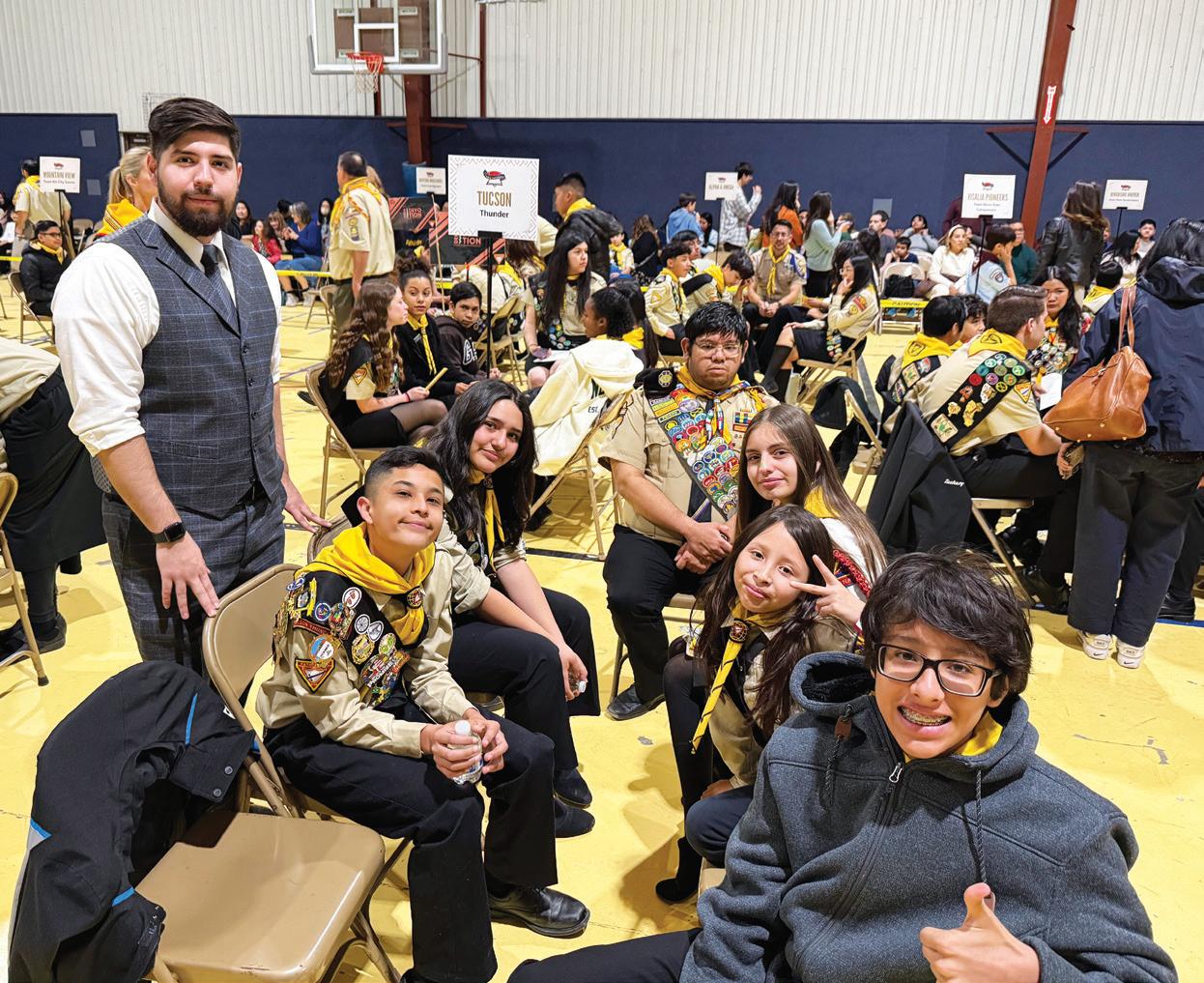
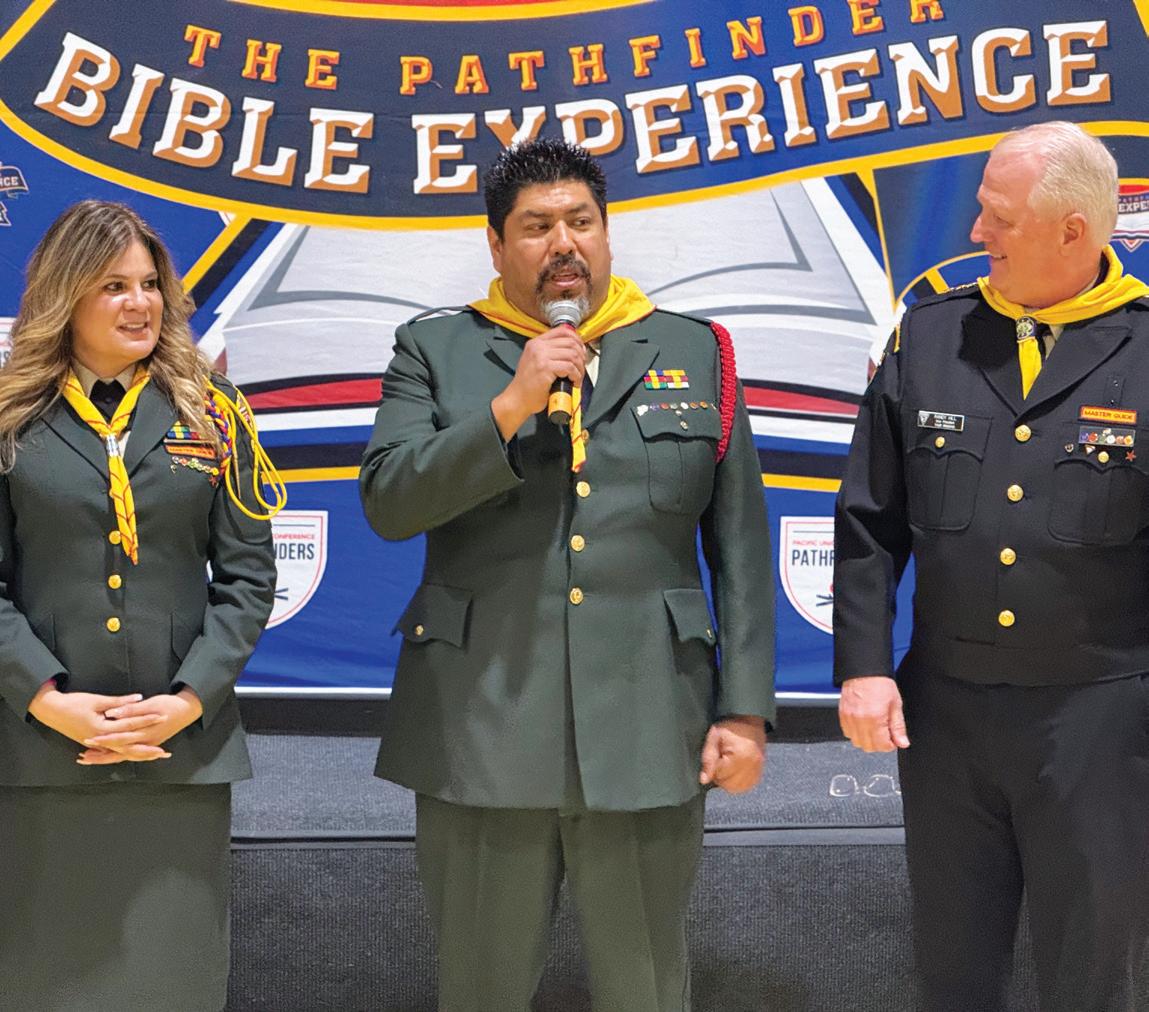
Pathfinders from across the Pacific Union gathered for the union-level Pathfinder Bible Experience (PBE) on March 22 at Camp Yavapines in Prescott, Arizona. This annual event brought together teams of dedicated young people who had spent months studying and memorizing Romans and 1 Corinthians in preparation for this high-level competition.
Six teams from Arizona qualified to join the other 25 teams from around the union that participated in the event. Two teams from Hawaii participated in the event via Zoom. The event is more than just a competition—it is an opportunity for young people to grow spiritually, support one another, and celebrate their achievements in studying the Bible. Teams that scored high enough earned a first-place finish and secured the opportunity to advance to the North American Division PBE event, taking place in Battle Creek, Michigan, on April 25-26. The Shalom Spanish Church Pathfinder Club team from Phoenix joined several clubs from Nevada and Southern California in
finishing in first place.
With Arizona serving as the host, the Arizona Conference Club Ministry team and Pathfinder area coordinators assisted as readers and judges for the event. The Pathfinder Bible Experience remains a powerful tool for spiritual growth, underscoring the significance of Scripture in the lives of young people.
By Jeff Rogers
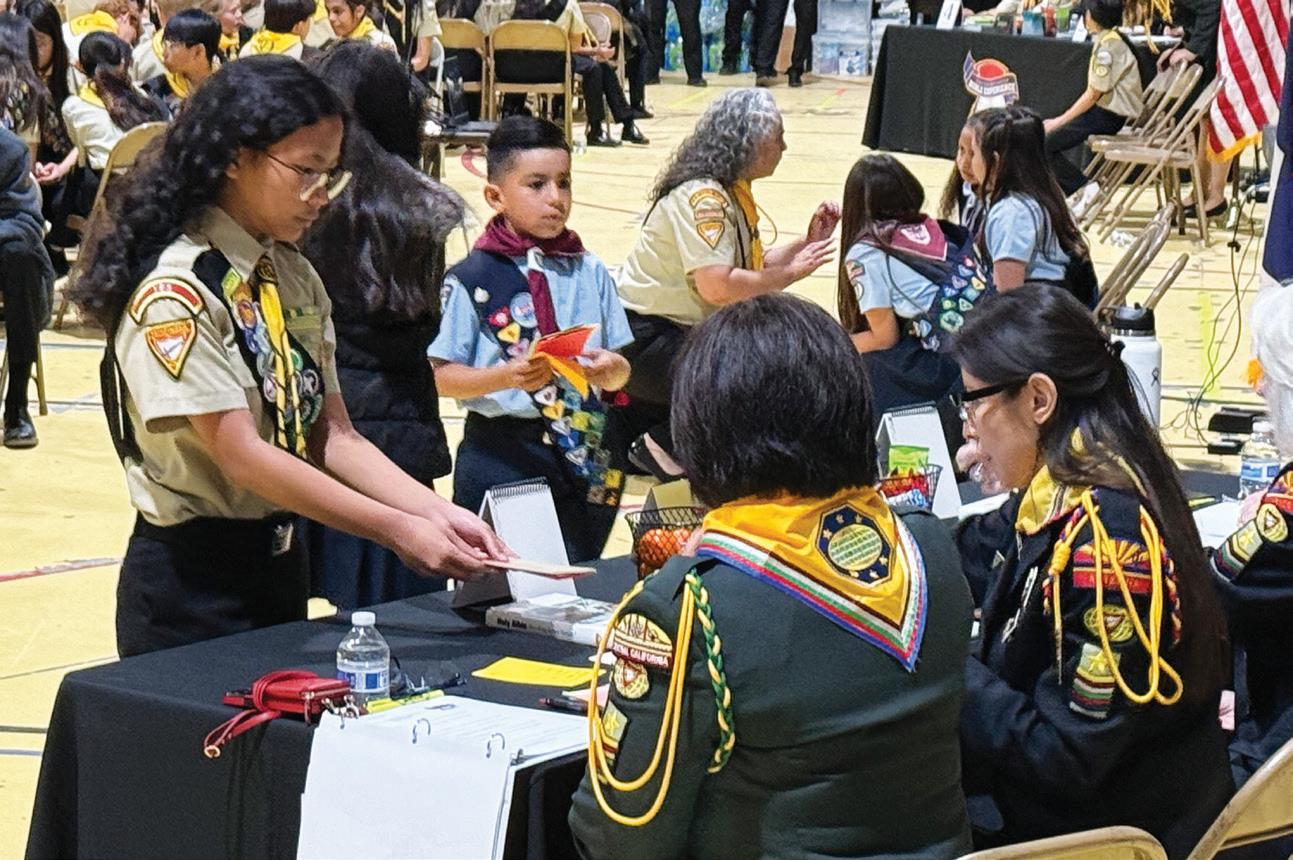
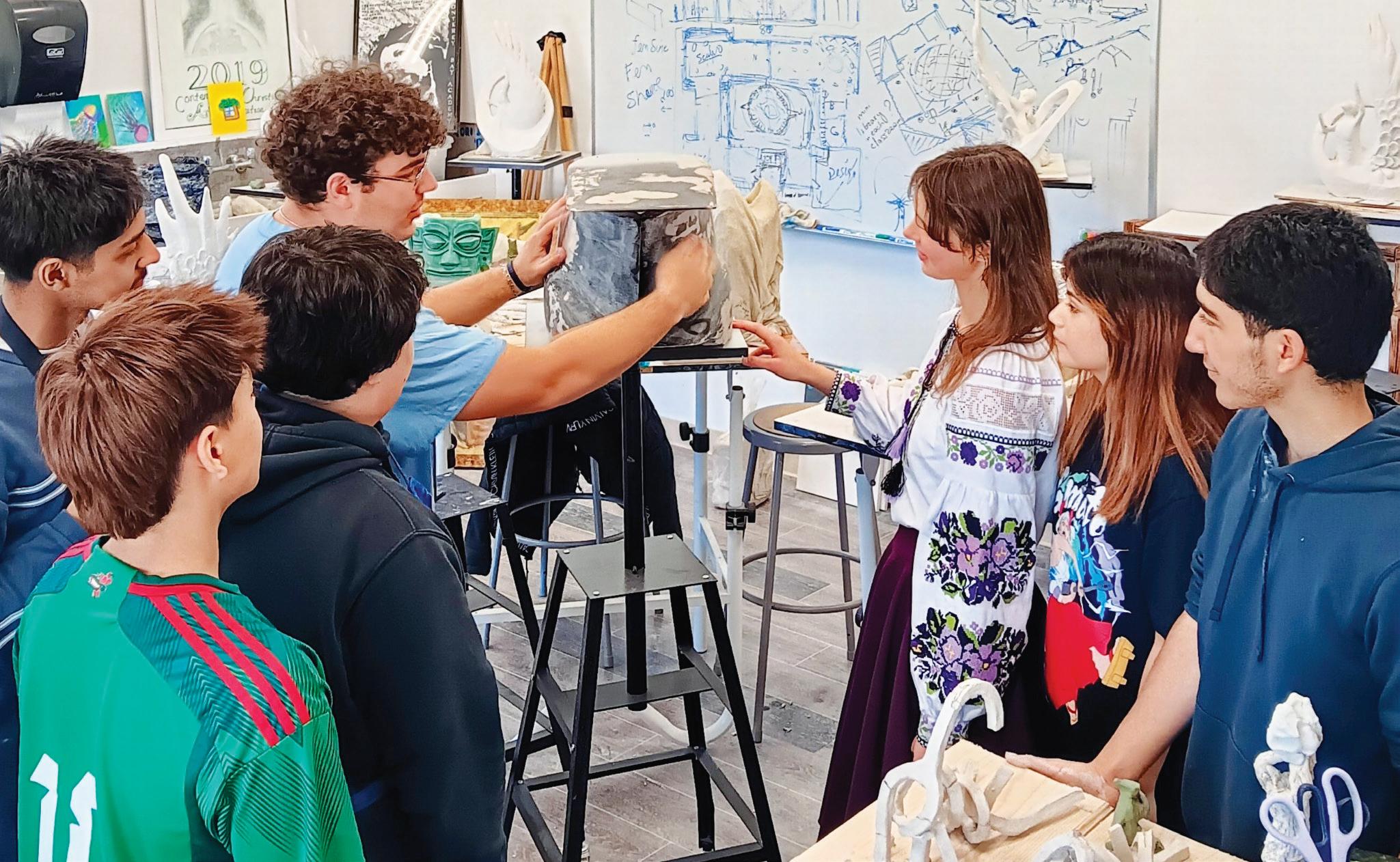
The Gospel of John, chapter 15, records a conversation between Jesus and His disciples. In verse 19, He says, “If you belonged to the world, it would love you as its own. As it is, you do not belong to the world, but I have chosen you out of the world” (NIV). As Christians, we believe that Jesus is telling us that we are called to be “in the world” but not “of the world,” but what does this mean? When someone is “of the world,” it means they accept the world’s values, beliefs, and conduct as their own. But John records Jesus’ reminder to His followers that we are called to something else—that through our words and actions we are to represent Him to a sick and hurting world.
Monterey Bay Academy (MBA) takes this commission seriously, and we want to instill it into the hearts and lives of our students. Our desire is to educate MBA students in more areas than just the three Rs. We want to introduce them to possible career paths that are “of the world” while training them to infiltrate the workforce as ambassadors for Christ and giving them skills they can use to call others out of the world as Jesus has taught us to do. Two exciting classes that MBA offers do just that.
The Exploring Aviation & Ground School program challenges and inspires our students to work toward earning a pilot’s license. Classroom work is based on the Gleim University coursework, including the Private Pilot Handbook, Private Pilot Test Prep system, and Remote
Pilot Test Prep. At course completion, students should be able to pass the Federal Aviation Administration (FAA) written exam for both Private Pilot and Remote Pilot Ground School certificates and the Remote Pilot license.
Book and computer learning, classroom discussion, and on-site airplane demonstrations are strengthened by three state-of-the-art interactive Gleim University flight simulators. These simulators allow students to pre-fly and post-fly their “in-the-plane” flight lessons. This can not only significantly reduce the cost of earning a pilot’s license, it also offers a way for students to become proficient with the special hands-on skills needed for competent and safe flight. Each year, through a special relationship we have with a local non-profit based at the Watsonville airport, several of our students actually begin to accrue the in-plane flight hours needed to earn their private pilot’s license.
Project Shop is another exciting class students can take at MBA. By fusing industrial design, aerospace physics, engineering, and advanced manufacturing techniques, this program allows students to begin experimenting with their hands on complex tasks. Their work this year focuses on cutting-edge vertical takeoff and landing (VTOL) aircraft. The Monterey Peninsula is the West Coast center for innovation in the field of aviation and aeronautics, and mentoring our students in this program are some of the leading minds
in the region. Students will acquire a comprehensive understanding of what it takes to design, engineer, and manufacture a prototype for the new and expanding field of manned vertical takeoff aircraft.
An exciting aspect of this program is that the students enrolled in these classes, as well as the students in Art class, team up together to define the requirements and lay out the configuration for the aircraft. Once the concept and configuration are defined, students in Exploring Aviation and Project Shop participate together in the construction of the design prototype. By collaborating on this cuttingedge design and prototype program, students develop creative skills and gain tangible firsthand experience in industrial design, aerodynamics, engineering, and fabrication. Our goal is to introduce the project aircraft at the world’s largest airshow held in Oshkosh, WI, in July of 2025.
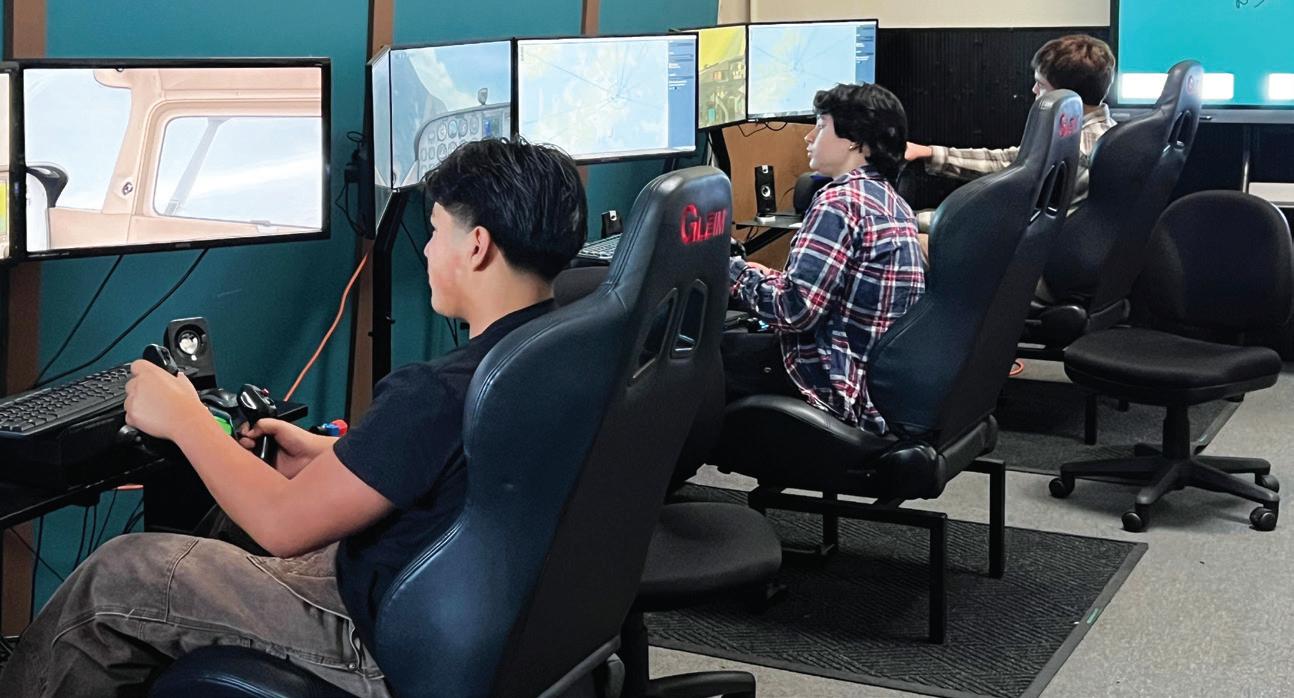
experience and knowledge to enter the workforce to represent Christ to others.
Years ago, Elder Leal V. Grunke, Monterey Bay Academy founder, stated it well, “I believe God selected this site by the sea for a boarding academy.… Take a boy or girl from ordinary pursuits, teach them faith and confidence in God, and they will go from MBA and do extraordinary things in God’s name.” As our students graduate and go out into the world, they go having been taught of God and equipped with
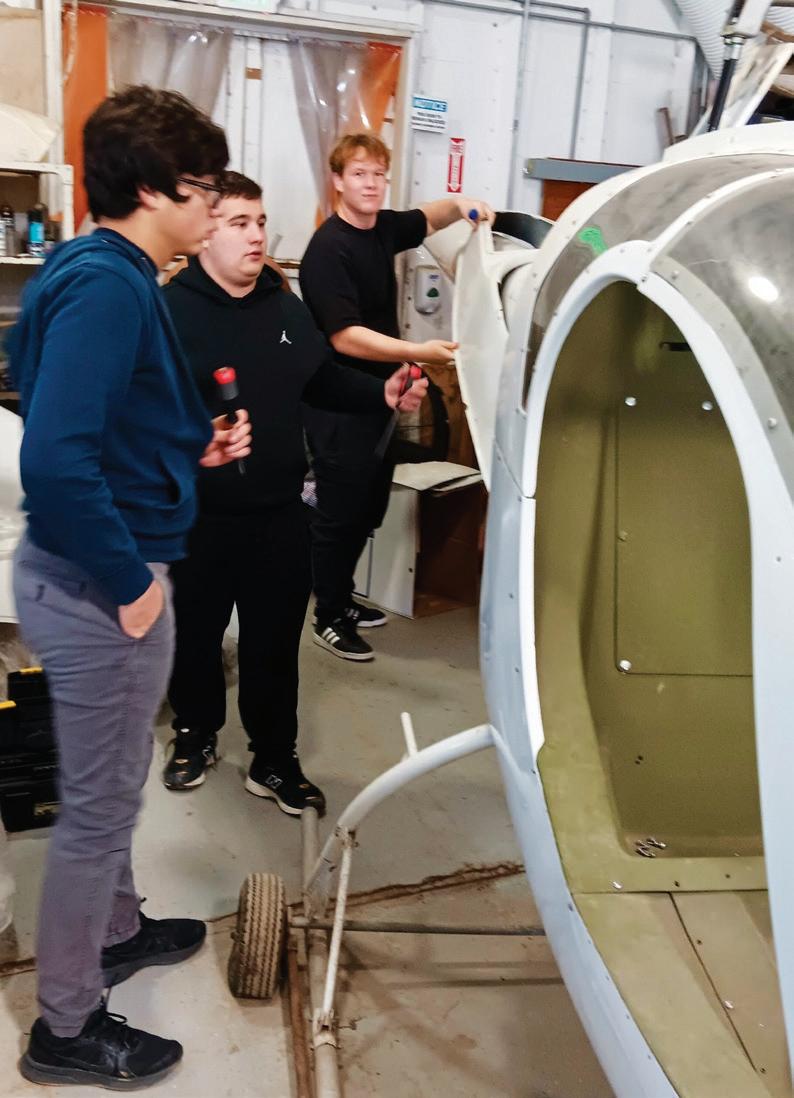
The charge can be found in 2 Corinthians 5:20, "We are therefore Christ's ambassadors, as though God were making his appeal through us" (NIV). We are emissaries for Christ while we remain on this earth, with the responsibility to share Christ with integrity and faithfulness, carrying His message to the world. Just as the ambassadors of our nation are commissioned to live on foreign soil and represent our country, so we as Christians are called to live in a world that is not our eternal home and represent Christ to a sick and hurting world. This is our goal for every student who attends Monterey Bay Academy.
By Jay Ketelsen and Kinzie Speyer

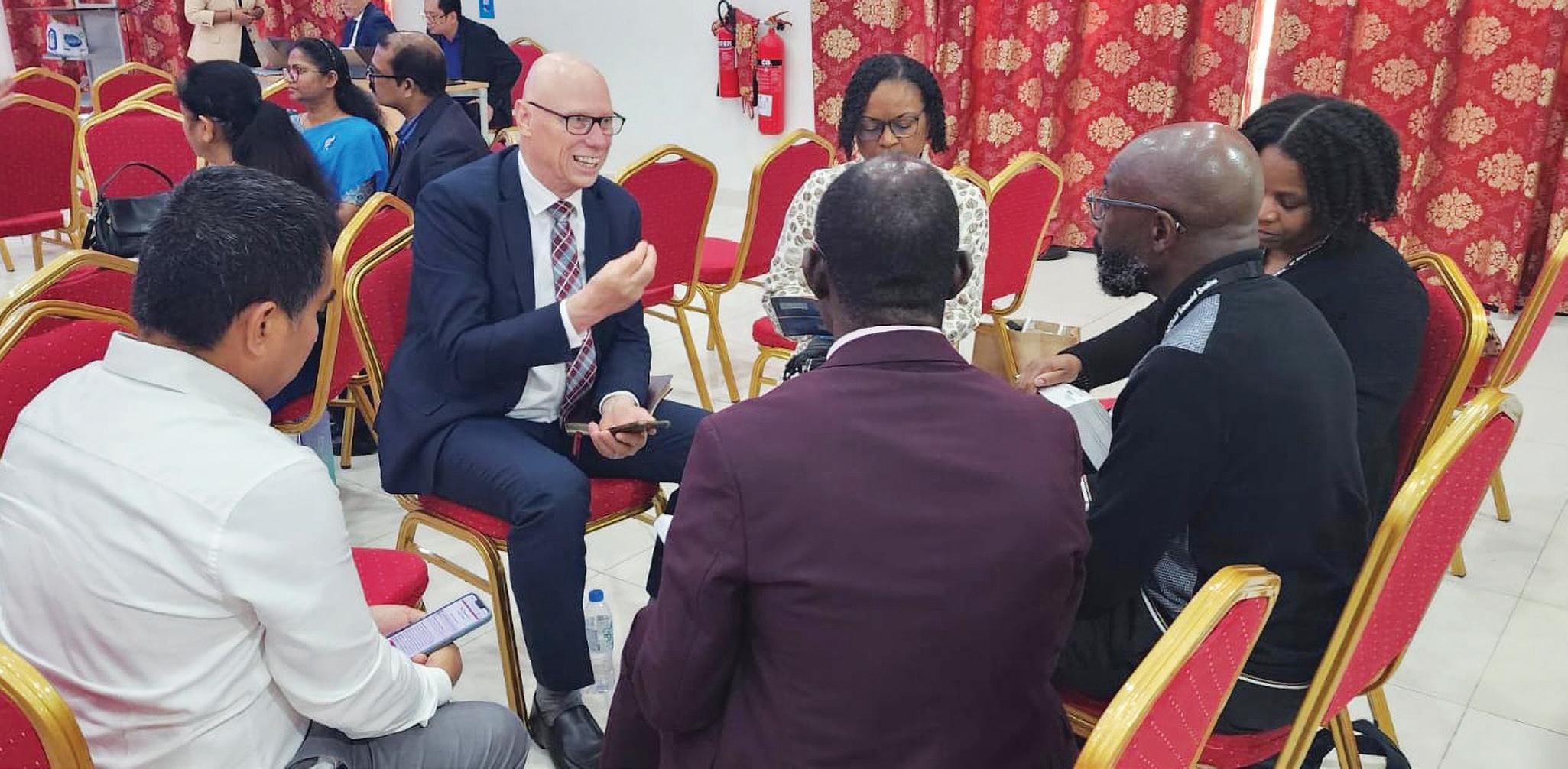
The Central California Conference is pleased to announce that, after prayerful consideration, the Executive Committee has called Michael Wixwat to serve as treasurer. Michael has nearly four decades of treasury experience in the Adventist Church, giving him a clear guiding principle: “Every financial plan should be mission driven rather than revenue driven.” His unwavering focus on ministry first— ensuring every budget reflects our commitment to sharing Jesus—is the hallmark of his leadership philosophy.
What led you to serve in church financial leadership?

My interest began as a teenager at the KitchenerWaterloo church in Ontario, Canada, when a visiting conference treasurer preached the sermon. I was intrigued by how preaching could blend with finance, especially since I already enjoyed my accounting classes at Kingsway College. My parents dedicated me as a child, hoping I would enter the ministry, so combining business and mission felt like a natural path.
After earning a business degree from Andrews
University, I discovered that profitdriven jobs didn’t motivate me. I wanted to use my skills for God’s work. When the Alberta Conference offered an internship, I jumped in my car and drove across Canada. That year of practical experience confirmed my passion: serving in treasury to advance the church’s mission and reach people for Christ.
You have nearly 40 years of experience in Adventist treasury. What key lessons have you learned?
Budgeting is one of a treasurer’s most significant responsibilities—it’s the annual roadmap for mission. However, a budget is only as strong as the assumptions made behind it. We’re not focused on profit but on expanding God’s kingdom. Every financial plan should be mission driven rather than revenue driven.
Windfalls (one-time major gifts) are another key point. They’re best used for special projects rather than staffing, because you can’t rely on them to repeat. In terms of building projects, I follow the biblical principle of “counting the cost” and involve expert committees from the start.
When conference leadership is transparent and
mission focused, members naturally have greater confidence. This trust leads to stronger tithe and overall giving.
How have your past roles—including in British Columbia, Ohio, Minnesota, and the Middle East and North Africa Union—shaped your leadership?
Serving in these varied regions exposed me to diverse conference cultures—some more lay driven, others more pastor driven, and still others more influenced by union-level decision-making. Working under different presidents taught me valuable lessons in stewardship, vision casting, and effective committee structures.
One standout principle I learned came from a president who defined a conference’s role in three ways:
1. Creating the climate—Fostering a culture of mission and growth across all churches and ministries; 2. Resourcing the field—Providing leadership, training, financial support, and practical tools to local congregations and schools;
3. Developing leaders—Equipping pastors, teachers, and lay leaders to carry out the gospel commission effectively.
I regularly refer back to these three core responsibilities. If a project doesn’t fit under climate, resourcing, or leadership development, it likely isn’t central to our mission.
What excites you most about serving as treasurer of the Central California Conference?
One of the first things that stood out to me was the incredible diversity of the membership—something I
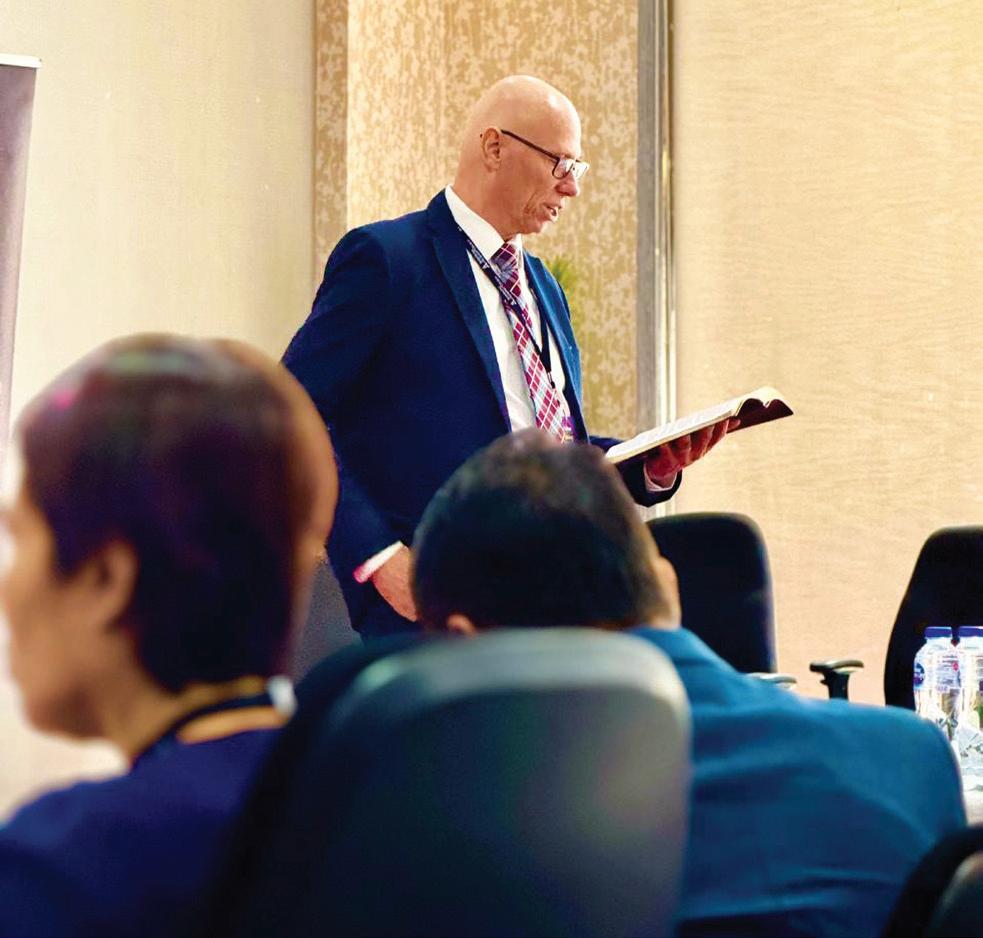

noticed when I reviewed your constituency report and visited the area. I love meeting new people, and I’m excited to connect with everyone across the conference.
I’ve also heard that Central California Conference members have a strong tradition of prayer—an emphasis I learned years ago before I served overseas. People in this conference are exceptionally generous, investing their time, resources, and energy into spreading the everlasting gospel within the framework of the three angels’ messages. I can’t wait to visit your churches, meet the members, and actively support these initiatives.
How can church members support and pray for you as you begin this new role?
I suggest two specific prayers:
1. A prayer for me—Based on Micah 6:8, please pray that I do justly, love mercy, and walk humbly with God. Stepping into a new conference and culture means constant learning. I want to remain teachable and humble.
2. A prayer for the conference—I love the Prayer of Jabez (1 Chronicles 4:10). I invite members to claim it for the Central California Conference: Oh, that You would bless us, enlarge our territory, and keep us from evil, that we may not cause pain.
May God bless our schools, churches, and members, expanding our impact for His kingdom. We look forward to welcoming Michael Wixwat to the Central California Conference on May 16, 2025. Please keep him, his family, and our entire conference in your prayers as we partner together to advance God’s work.
By Justin Kim
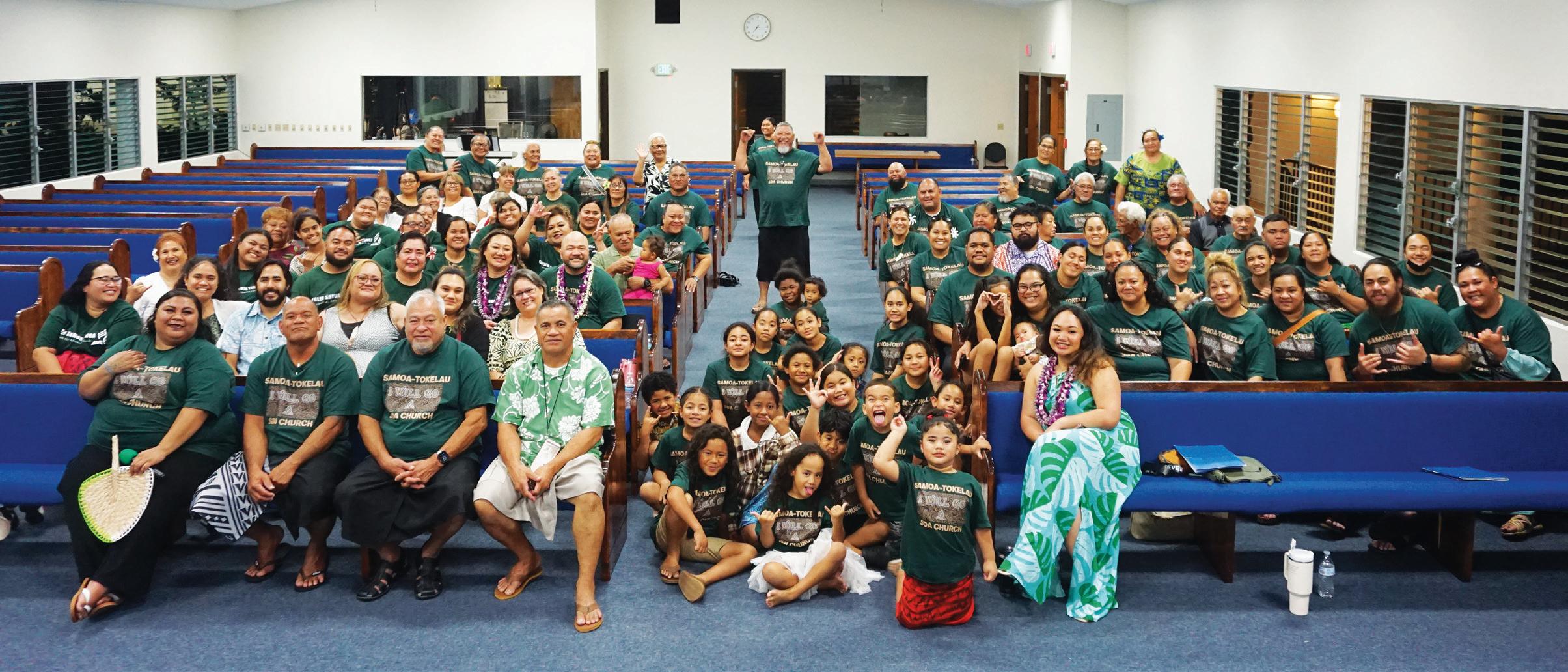

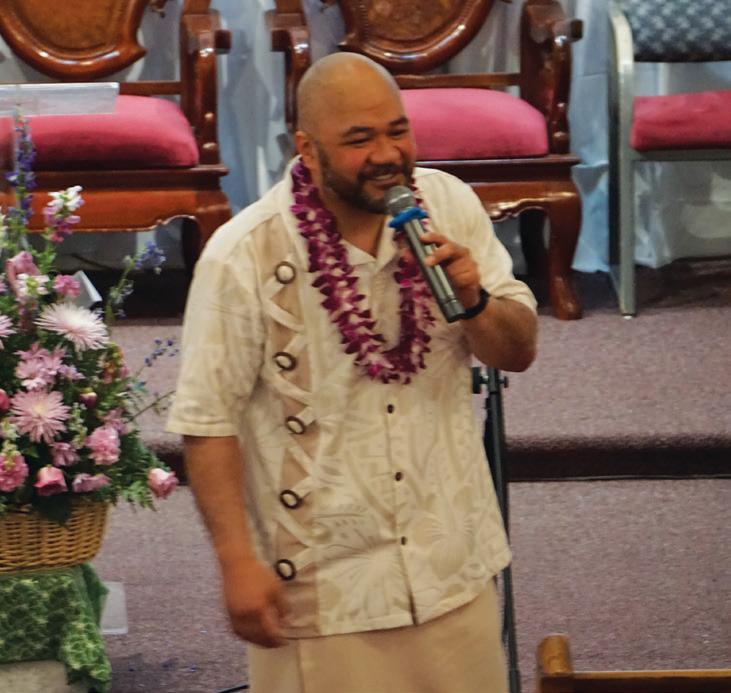
Kapolei Samoa-Tonga church had the honor of hosting Friday night vespers on March 14, which launched a powerful Global Youth Day weekend. Our guest speaker, Abishai Aiolupotea, brought a message of faith and purpose. As the director of human resources for the Washington Conference, CFO of The Two Percent Ministry, and music pastor at Auburn Adventist Academy church, he is a mighty servant of God who is busy in ministry! Beyond his titles, he is a devoted husband and father—and a “local boy” who grew up spiritually in Samoa Tokelau church and Waipahu Samoa church (which is now Kapolei Samoa-Tonga church).
Through his testimony, Abishai shared how God called him by name through family challenges, mental health battles, and his journey to becoming a warrior for Christ. His message reaffirmed that we are to step into our God-given purposes, uplift one another, and stand in the gap for our families and, further, our communities. We are deeply grateful to The Two Percent Ministry for loving on us in Hawaii by sending Abishai and allowing us to be blessed by his presence and powerful testimony.
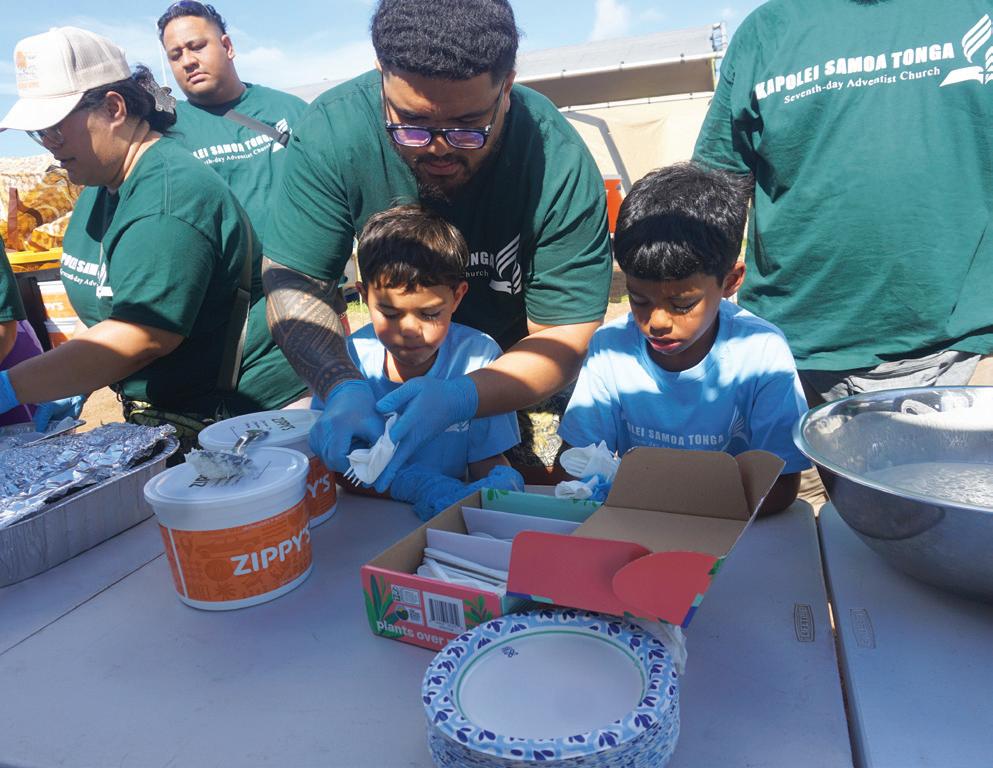
The next morning, both Kapolei Samoa-Tonga and Samoa-Tokelau churches gathered in their respective communities, eager to serve. We had the privilege of connecting with our friends at HONU (Homeless Outreach and Navigation for Unsheltered Persons), where we shared meals, music, and moments of joy with families and children. Mark 5:20 says that the man who had been healed by Jesus began to tell “how much Jesus had done for him. And all the people were amazed” (NIV). We witnessed how personal stories have the
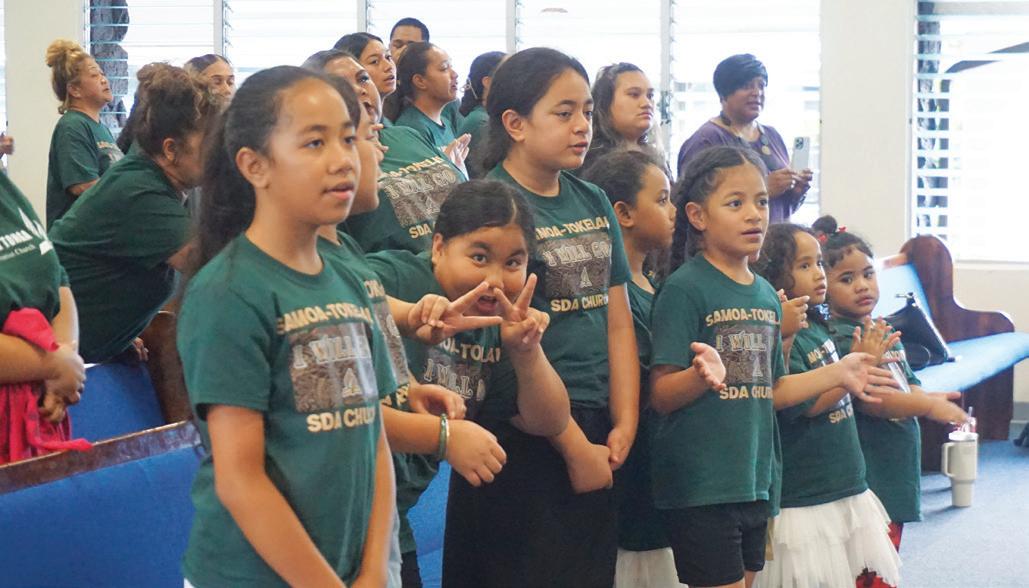
power to transform lives; we are commissioned to testify!
We also visited our kupuna (elderly people) at Ka Punawai Ola Nursing Home, where music, laughter, and conversation brought warmth into their hearts. These acts of service reminded us that showing up with love creates a lasting impact.
An unforgettable worship experience
The day continued with an AY Service hosted by Samoa Tokelau church, in which music and the Holy Spirit filled the sanctuary. Testimonies were shared, including from young children who encouraged those they had visited earlier in the day. It was especially moving to hear how Samoa Tokelau’s ministry reconnected with long-lost members, proving that no one is ever forgotten in God’s family.
This Global Youth Day was a testament to what it means to be a community transformed—through faith, service, and standing in the gap for one another.
By Amber-Salamasina T. Ierome Seui


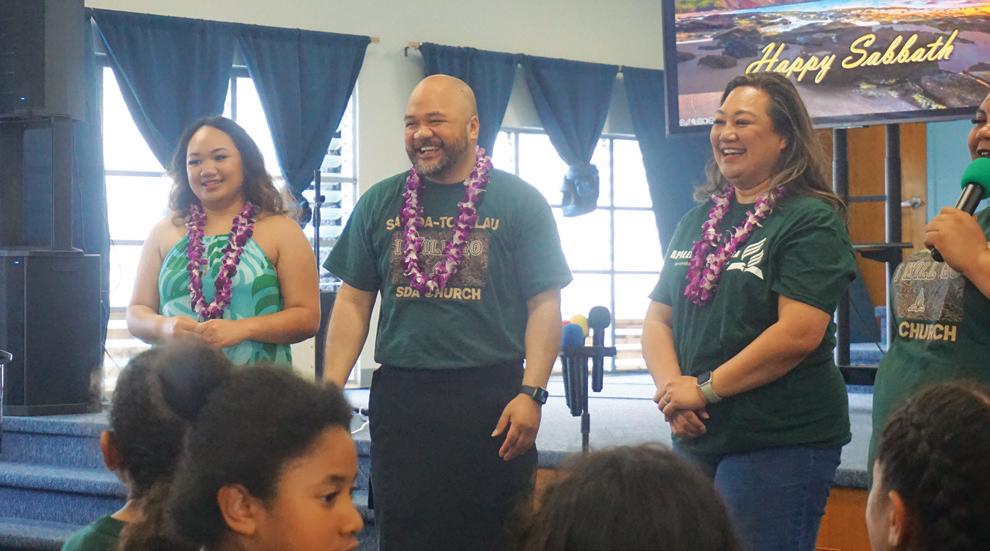
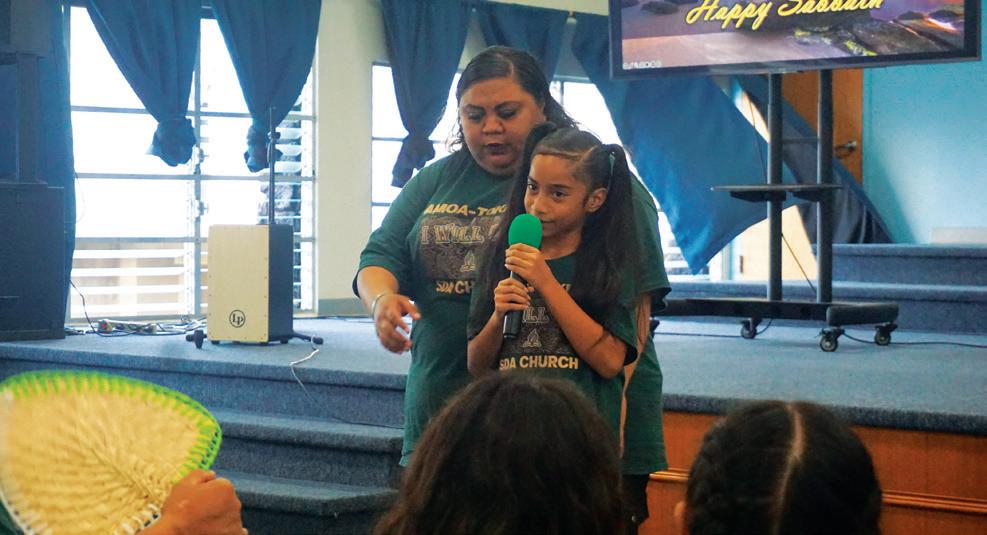

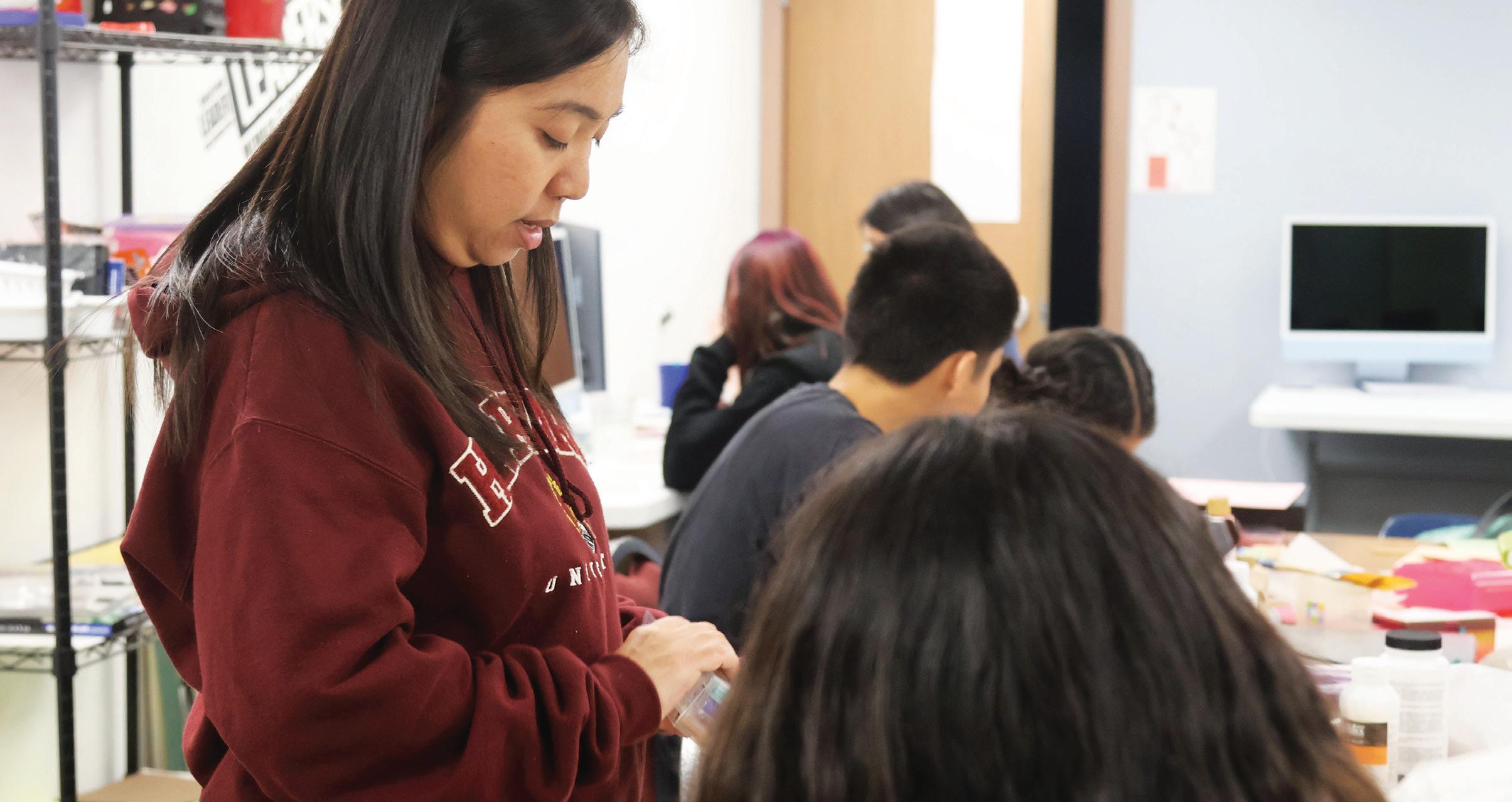

Iwant to take a moment to be honest with you all. There are times I ask myself, Am I in the right profession? Am I just someone who comes and goes each day, doing my job, or am I truly making a difference in my students' lives? I wonder if I’m truly making an impact or if I’m just another part of their daily routine. I think about the challenges—the long hours, the frustration whenever students don’t seem to get what I am teaching, or the heartaches when a student leaves

the school because of poor choices. And then there are the growing needs of my own family and the reality that teaching is not exactly a high-paying job. Sometimes I wonder, Should I stay?
Recently I received an email from one of our former students, Emmett. He asked for a second recommendation letter for his studies, but more than that, he shared his journey with me—his struggles, the moments when he almost drifted away from his goals, and his joy in getting back on track. He excitedly discussed his growing interest in quantum computers, but what really touched me was when he talked about what he had learned from my class. He even connected it to what he is studying now and shared how it adds to what I am currently teaching. He wrote:
I plan to advance further than a Computer Science degree by aiming toward Computer Hardware Engineering and Cyber Security, promising to do only good with it. Like software for financial health, built for anti-scam, securing innocent people’s data, securing innocent people’s non-consensual live activity, bring missing people home, prevent human trafficking, [and] catch traffickers.

Students like Emmett make my “teacher” heart beat again. They reignite my passion for teaching—not just to pass on knowledge but to spark curiosity, to encourage imagination, and to help them dream bigger. And it’s not just him, of course. There have been other reminders that what we do matters, even when we don’t see the results right away. Even if there is only one student we positively influence—it is all worth it. And when I say "teacher," I don’t just mean those of us teaching subjects in the classroom. Every one of us—whether we’re in the office, the cafeteria, or in any role here at Holbrook Indian School—are teachers. We are the second parents for the students, guiding them, supporting them, and teaching them valuable lessons whenever we have an encounter with them. It’s a shared responsibility, and it makes us all part of something bigger.
With that in mind, I want to share part of a letter with you. It’s a letter written from the perspective of students to their teachers, and I hope it encourages all of us today.
Dear Teacher,
You are important…. The hallways can be cruel; let your classroom be a safe haven for me. If I seem distracted or depressed, feel free to ask me if I am ok. You would be shocked to know some of the things your students are going through. You could be my greatest hero, a life-changer, the teacher I look forward to every day, that I work my hardest to please, and the one I give credit to when I am a big success; please keep that in mind when you come to work every day. Pray for me and I will pray for you. Let me know in some direct or small hint that you are
Holbrook Indian School (HIS) is a first- through twelfth-grade boarding academy operated by the Pacific Union Conference of the Seventh-day Adventist Church. HIS also manages a firstthrough eighth-grade day school on the Navajo reservation in Chinle, Arizona. Eighty-seven percent of funding comes from individuals who have a desire to support Native American ministries and Christian education. Your generosity makes a difference in the lives of our students, their families, and the communities they serve.
Thank you for your support.
P.O. Box 910 • Holbrook, Arizona 86025-0910 (928) 524-6845 (Ext. 109) • Development@hissda.org HolbrookIndianSchool.org
a Christian; that means a lot to me. Get to know me, or at least something about me; I might just change your life too.
Respectfully, Your Students (Present and Future).1
As I read this, I couldn’t help but reflect on the responsibility and privilege we have as educators. Some days we may feel exhausted or wonder if we are really making an impact, but our students see us, they remember us, and they look to us for guidance.
So, as we continue in this journey, let’s remind ourselves that what we do is not in vain. We may not always see the fruits of our labor immediately, but we are planting seeds that will grow in ways we may never fully realize.
By Aira Importante
1“Encouragement For Educators,” Bible.com, https://www.bible.com/ reading-plans/8825-encouragement-for-educators/day/4.

Kerry Heinrich, president and CEO for Adventist Health, was recently named to the Becker’s Hospital Review list of Great Leaders in Healthcare. Heinrich was also named to the Power 100 list of business leaders in the Sacramento region.
Becker’s noted Heinrich’s leadership of a mission-driven organization that provides faith-based care, as well as his unique perspective in enhancing clinical excellence, operational efficiency, and strategic expansion. Becker’s recognition of Heinrich stated, “Under his leadership, Adventist Health has successfully acquired five new hospitals, is currently transitioning to Epic as its exclusive EHR provider, and achieved record retention rates for employees and registered nurses.”

degree in history from Walla Walla University. His leadership balances systemwide consistency with a commitment to innovation, ensuring high-quality, compassionate care remains at the heart of Adventist Health. He believes in the power of strong teams and fosters a shared vision through direct engagement, regularly visiting hospital sites to connect with frontline caregivers.
Heinrich joined the Adventist Health Board of Directors in 2014 and was appointed System President and CEO effective Jan. 1, 2022. He has a juris doctor degree from the University of Oregon School of Law and a bachelor’s
Heinrich recently led the Adventist Health 2025 Engage Tour, visiting 26 of the 28 Adventist Health hospital locations. The Engage Tour’s final two stops will be Adventist Health Castle and Adventist Health Lodi Memorial later this spring. The tour marks a meaningful moment for Adventist Health, serving as a reminder that although the Adventist Health geographical footprint covers many miles, we are united in our mission of living God's love by inspiring health, wholeness, and hope for our patients and the communities we serve.
By Kim Strobel
Eric Stevens was named Chief Operating Officer for Adventist Health in addition to his current role as president of the Adventist Health Northern California Network, where he leads strategy and operations at Adventist Health facilities in Stockton, Lodi, Yuba City/Marysville, Feather River, Mendocino County, Clear Lake, St. Helena, and Vallejo.

“Eric brings with him more than 40 years of experience in healthcare and a proven track record, most recently delivering transformative operational efficiencies in our Northern California Network. His passion and strategic vision have driven remarkable progress, and I am excited to see him bring the same energy and expertise across our entire health system,” said Kerry Heinrich, president and CEO for Adventist Health.
Stevens began his healthcare career at Adventist Health Glendale and has held healthcare leadership positions in Oregon, Tennessee, Florida, and California. He has a master’s degree in health administration and a bachelor’s degree in nursing from Pacific Union College.
“Over the past four years, I have been part of an executive team focused on transforming our core while we grow,” said Stevens. “Throughout my time with Adventist Health, I’ve had the privilege of working alongside a remarkable group of leaders whose intellect, deep sense of ownership, and compassionate action inspire me every day. In this new role, I am eager to foster even greater clarity, connectivity, and a shared sense of urgency as we strive to achieve our performance goals.”
By Kim Strobel
It was oboist Afonso Bittencourt Brito’s first time back in his native Brazil since leaving 18 months earlier to study at La Sierra University. During spring break in March, he toured the South American nation and visited his hometown as a member of a La Sierra University Chamber Winds quintet that gave performances and master classes.
“I feel very good and very happy to [be] coming back to visit my house and my country,” Brito said prior to the trip. He noted afterward, “The entire tour was filled with meaningful moments and valuable interactions that deepened my appreciation for my heritage. Each city offered unique experiences—from cultural and spiritual engagements to personal reunions—and reinforced my commitment to my studies and future at La Sierra University.”
Brito is in the second year of a music performer’s certificate program in the music department. He aims for a career as a professional symphonic oboist. Together with the other ensemble members, he practiced and rehearsed for three months in preparation for the tour that would take them from the city of São Paulo, Brazil’s financial center, to the iconic seaside city of Rio de Janeiro, and lastly to Belém, Pará, gateway to the lower Amazon.
It was during the latter stop that Brito was able to visit family members and friends. “[I] even had the chance to give a masterclass, sharing the knowledge I acquired in the U.S.,” he said. “Also, I invited some friends to play with me, and it was really home.”
“Being away from Brazil for nearly a year and a half made this visit particularly special, as it allowed me to reconnect with my roots, my family, and my culture,” Brito said.
Other student musicians joining Brito on tour were Nathalia Boeira, flute, Wendell Palheta, horn, Jair Garcia, trumpet, and Abel Gonzalez, piano.
“The one thing that stands out to me is that some of us had the incredible opportunity to teach a masterclass in Belém,” said Boeira, who is also from Brazil. “I had five amazing students playing for me and a few more watching. I got to hear some incredible music being played by those students, and by teaching them I had the chance to learn a lot myself. She most enjoyed engaging with different audiences
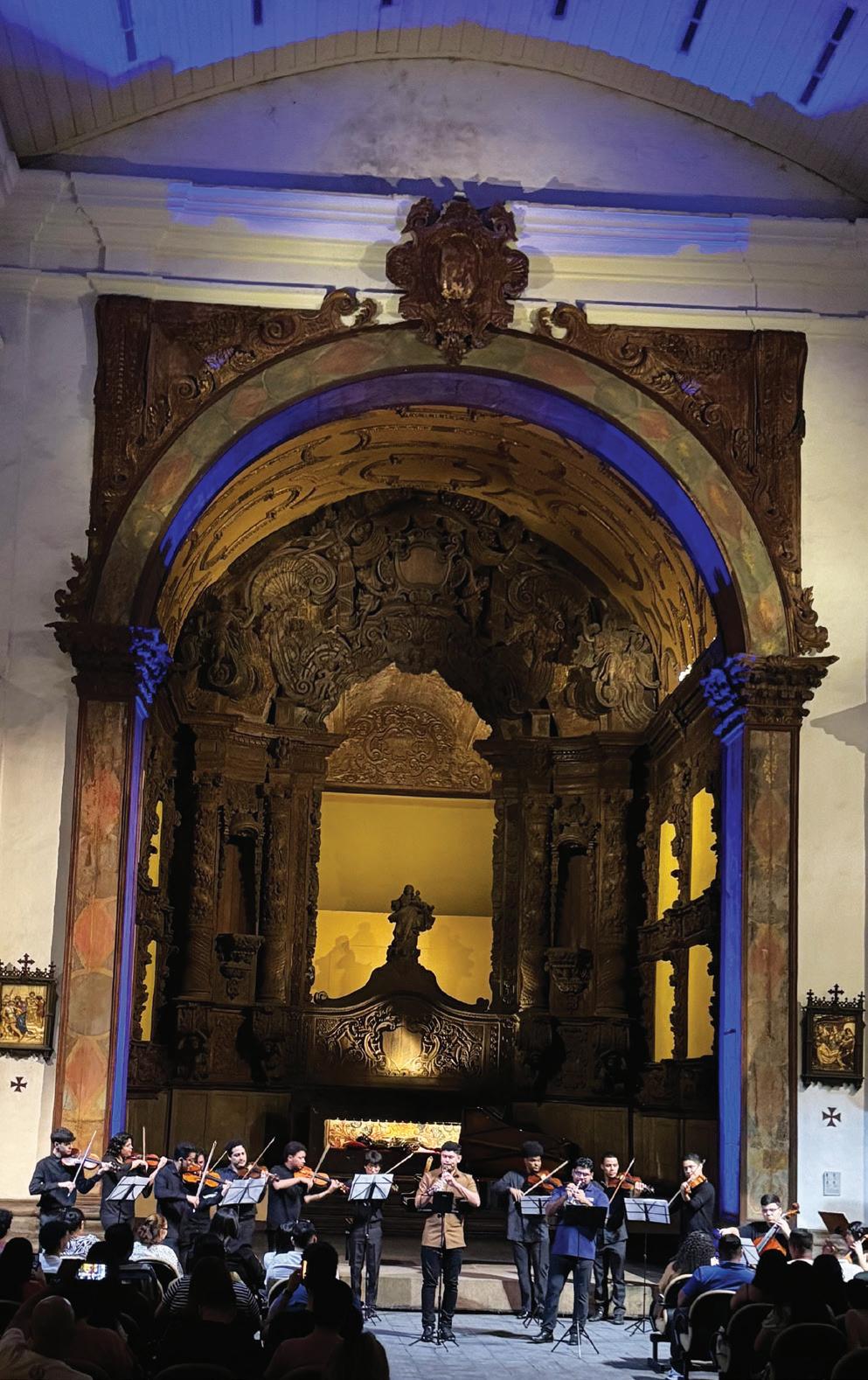
and students. “As musicians, the thing that brings us the most joy is seeing our music and our art reaching new places and new people,” she said.
“Tours allow us to explore the world and share the amazing things La Sierra University offers,” said La Sierra University Wind Ensemble Director Giovanni Santos, who led the Brazil tour. “We have the fabulous opportunity to interact with local musicians and educators, as well as collaborate musically. It gives us the opportunity to express ourselves musically to a wider audience and community, making new friends.”
By Darla Tucker
Loma Linda University School of Religion has launched two new certificate programs— one in spiritual care and another in bioethics. The school is accepting applications for the upcoming 2025-2026 academic year, and applications received before July 31 will be processed in time for the start of classes in fall quarter.
The Spiritual Care Certificate consists of coursework designed to build competence in the delivery of spiritual care to an increasingly diverse patient population. The certificate is offered in two forms that focus on either theoretical or practical applications of spiritual care and can be tailored to offer instruction in spirituality, religious diversity, and end-oflife care. Both tracks will require a core set of courses, ensuring all participants have a common foundation of spiritual care principles provided by faculty of the School of Religion.

The Bioethics Certificate focuses on the critical decision-making skills needed in the field of bioethics. The objective is to prepare qualified individuals to engage in the difficult conversations that arise at the intersection of healthcare, religion, policy, and law. The certificate program is ideal for professionals who wish to acquire specific knowledge and skills in a shorter and more narrowly focused certificate program to complement their existing careers as administrators, healthcare providers, policymakers, and chaplains. The certificate can also serve as a useful credential for those seeking to apply to professional graduate programs in healthcare and law.
The dynamic interdisciplinary health science setting of Loma Linda University brings together students from across the eight schools of LLU and San Manuel
See the latest news and Health & Wellness stories from Loma Linda University Health at news.llu.edu.
Gateway College with School of Religion faculty trained in the disciplines of ethical, theological, and relational studies. Faculty also have expertise in law, clinical medicine, public health, and social work. This creates a unique learning environment that fosters Christcentered, mission-focused learning through scholarship that expands knowledge and addresses the challenges healthcare professionals face in today’s complex world.
“These two certificate programs are in response to many requests for shorter, career-enhancing programs,” said Leo Ranzolin, ThD, dean of Loma Linda University School of Religion. “Adding a spiritual care or bioethics credential will open new doors for successful participants to share Christ’s teaching and healing ministry in fresh new ways.”
The School of Religion continues to offer master’s degrees in chaplaincy, bioethics, and religion and society. In addition to offering graduate degree and certificate programs, the primary mission of the School of Religion is to enrich programs in the other seven schools of the University with a faith-based, wholistic approach to the health sciences. To learn more about the certificates or graduate degrees at the School of Religion, call 909-558-7478 or email religion@llu.edu.
To learn more about programs, degrees, and certificates at Loma Linda University, visit llu.edu.
By Staff

uring winter break, two music ensembles from Pacific Union College (PUC) toured Phoenix, Arizona. From February 6-9, Mosaic String Ensemble and Vox Pro Musica performed at Thunderbird Adventist Academy and Elementary, Glenview Adventist Academy, Paradise Valley church, Adventist Worship Center, and Camelback church.
“We had wonderful performances,” said Ronnie Zanella, associate music professor. “Both our groups performed at a very high level of musicianship.”
The two groups, comprised of 15 students, showcased different performances at each academy and church, while some students also led out in praise at academies. Seven pieces were performed by the Mosaic String Ensemble, while Vox Pro Musica sang five songs. They held shorter performances at academies while performing a complete concert program over the weekend, with some pieces combining the groups.
Zanella shared that the men from Vox Pro Musica learned a quartet piece by the Heritage Singers hours before their concert at Camelback church and performed it well. “It was interesting to discover all of them have the same interest in this more traditional type of acapella male quartet music,” he said. “It’s also amazing to see how trips like these really bond our students—and bond us faculty to them as well— creating a safe and fun environment to be in.”
The ensembles were accompanied by PUC's music
department chair Rachelle Berthelsen Davis, Zanella, PUC President Ralph Trecartin and his wife, Virginia, and PUC Executive Assistant and Enrollment Counselor Andrianna Massena and her husband, Bryan.
PUC Enrollment Counselor Glanelle Ejurango, a member of the Mosaic Strings, shared that she and the students enjoyed the trip. "There were many laughs, inside jokes, car jamming and karaoke sessions, latenight conversations, and most of all, the togetherness of community," she said.
At the various places they visited, audiences gave incredibly kind remarks, sharing their interest in having PUC visit them again. Their performance at Paradise Valley not only attracted an in-person crowd but also hundreds who tuned in online to watch.
PUC's music department is already planning next year's tour. Although those plans include staying in the United States, Zanella dreams about having their music groups travel abroad to Europe or South America.
Zanella shared that students were very happy and proud of their performances. “It also looked like they had a great time and a lot of fun hanging out together,” he continued, praising “the great music we made together, the friendships that were created or strengthened, and the new connections we made in the Phoenix area.”
By Ally Romanes
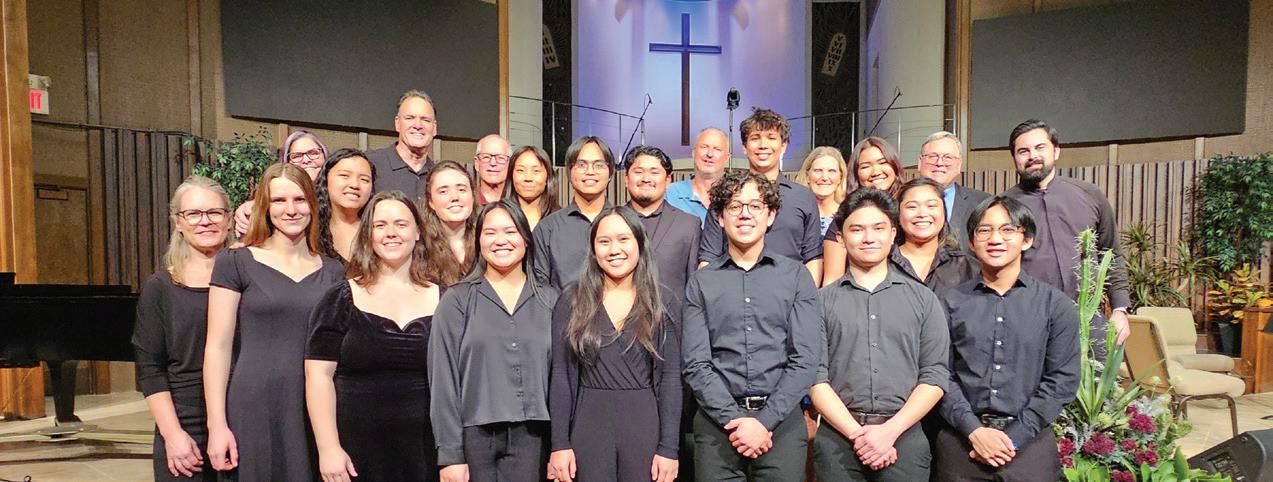

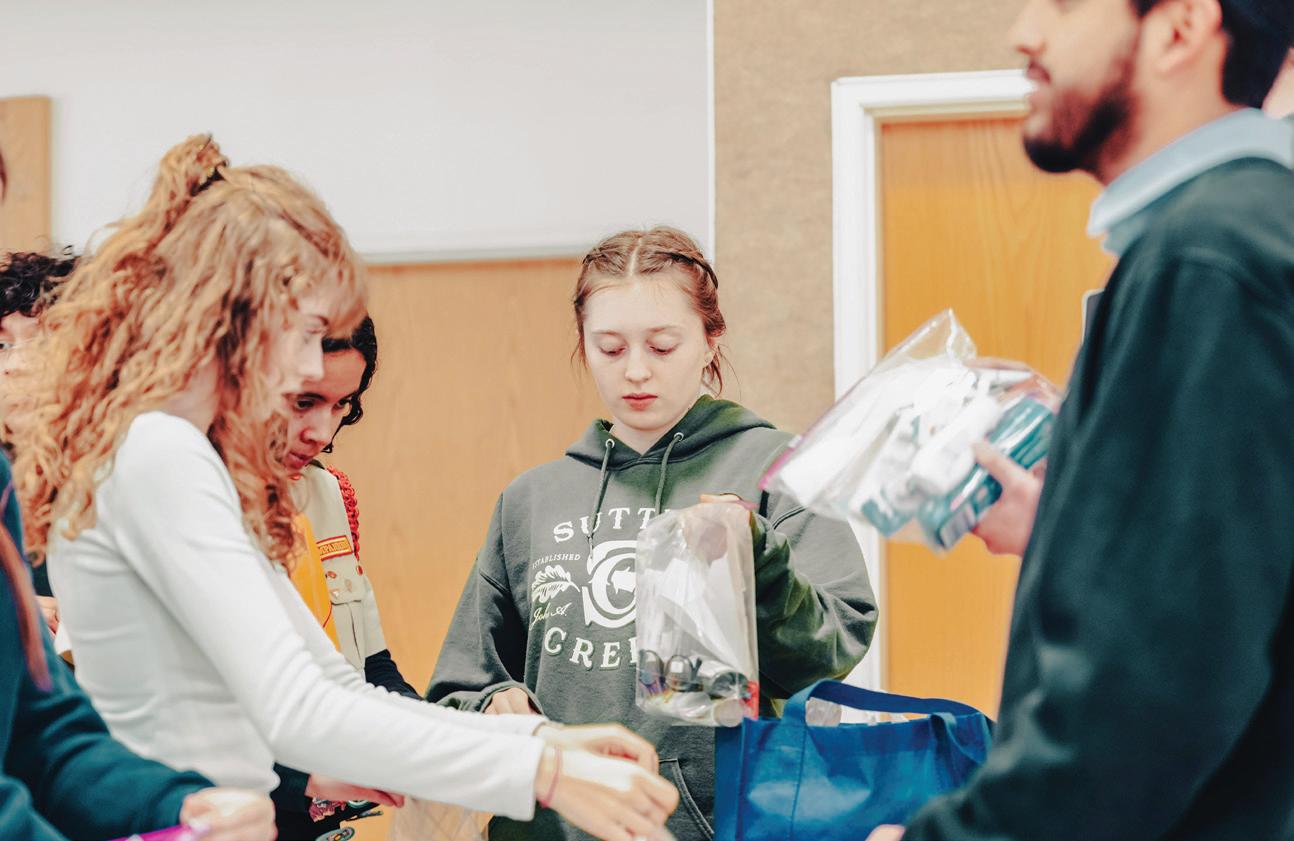
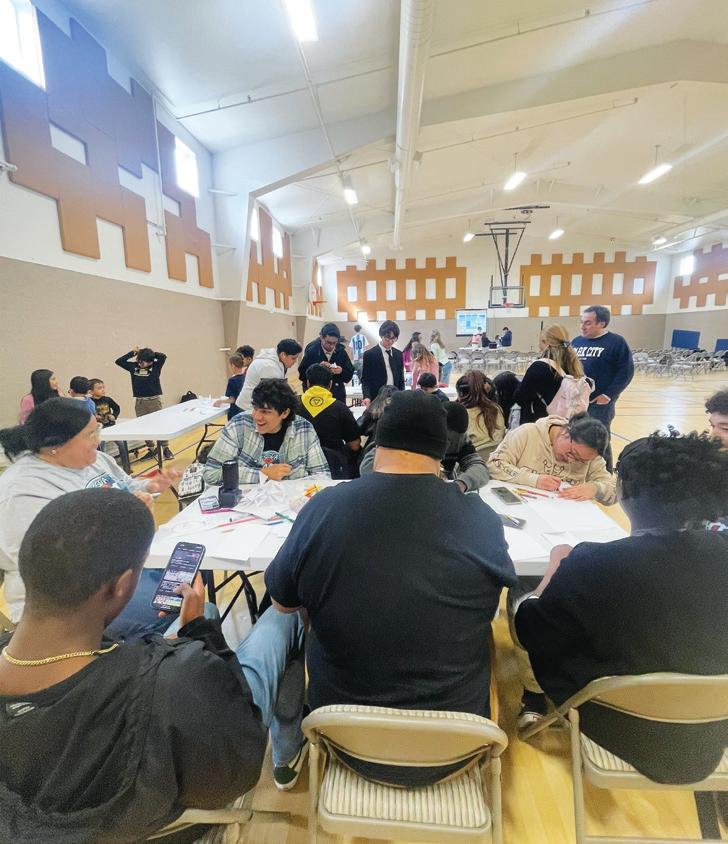
To celebrate this year’s Global Youth Day, young people across the Nevada-Utah Conference stepped up to be the hands and feet of Jesus, starting with a Week of Prayer


from March 10-14 and followed by a powerful day of community service, Bible games, and fellowship on Sabbath, March 15.
The Week of Prayer invited youth and adults to reflect on how God transforms individual hearts to bring meaningful change in their communities. In each area, the keynote speakers—Michael Jenkins Jr. (Utah), Neat Randriamialison (Reno), and Mario Navarro Jr. (Las Vegas)—brought this year’s theme, “A Community Transformed,” to life in different creative ways.
From painting sidewalks to preparing care packages, from smiles to hard work, young people embraced the mission of “being the sermon.” With the support of each area’s pastors, churches hosted outreach activities that addressed real needs in their local neighborhoods.
“I wish we did this every Sabbath,” one young participant shared with a smile.
Global Youth Day is a reminder that when young people are given the opportunity to make a difference, they can light up the entire church community. And maybe, just maybe, this spirit of service doesn’t have to be just once a year. It can be a way of life.
By Neat Randriamialison
TOP: Learning about teamwork with a fun and engaging game. BOTTOM: Taking a quick break from painting the fire hydrant to capture the moment.
Kayenta Mission is a Community Impact Center in Kayenta, Arizona. The church building was in desperate need of a roof. The old roof was a decade past its useful life. Monsoon season in the desert is no joke! Last year buckets collected water coming through the ceiling.
Do you have a picture of the need? If this was your church or your home, what would you do? Probably you would call five different roofers, get three quotes, and choose one to get the job done. That just isn’t possible when you live on a mission site. IF you can get an internet signal, Google says the nearest roofing business with laborers and materials is 300 miles away. The nearest roofing supply store is 150 miles away. The nearest Walmart is 100 miles away.
Not a single volunteer answered the call for help. What would you do? Ephesians 2:10 says we are God’s handiwork, created in Christ Jesus to do good works, which God prepared in advance for us to do. God prepared James Crosby, pastor of Kayenta Mission, for this and many other projects.
Pastor Crosby was a master builder in his former life. He measured twice, ordered the materials, and collected them from the supply store 150 miles away. Not only did God give Pastor Crosby the knowledge to repair the roof, but God also gave Pastor Crosby a Proverbs 31 wife. God used Nancy
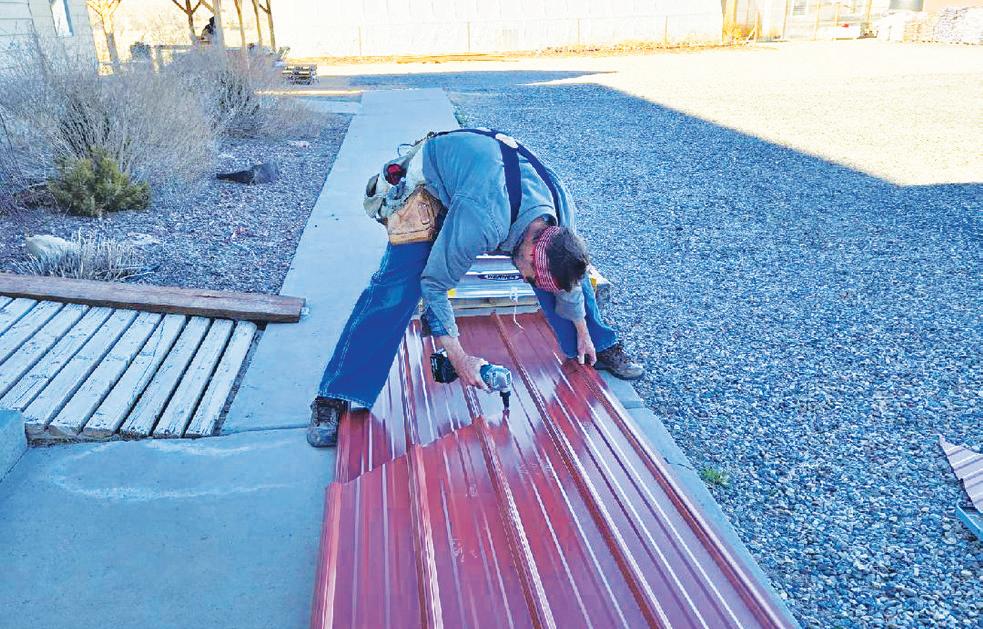
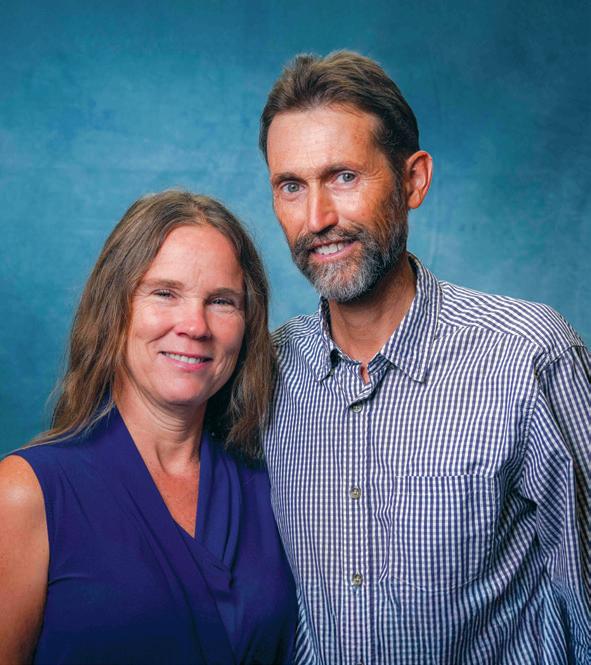
Crosby’s skills to raise the money needed to purchase the materials. God gave her strength to hand more than forty 26-foot-long sheets of 25-gauge corrugated metal onto the roof of the church. “Each of you should use whatever gift you have received to serve others, as faithful stewards of God’s grace in its various forms” (1 Peter 4:10, NIV).
This wasn’t just a roofing project, it is a testimony, a picture of faith in action, and an example of calling, commitment, and a willingness to serve with what’s already in your hands.
So, what’s your gift?
By Karen Schneider
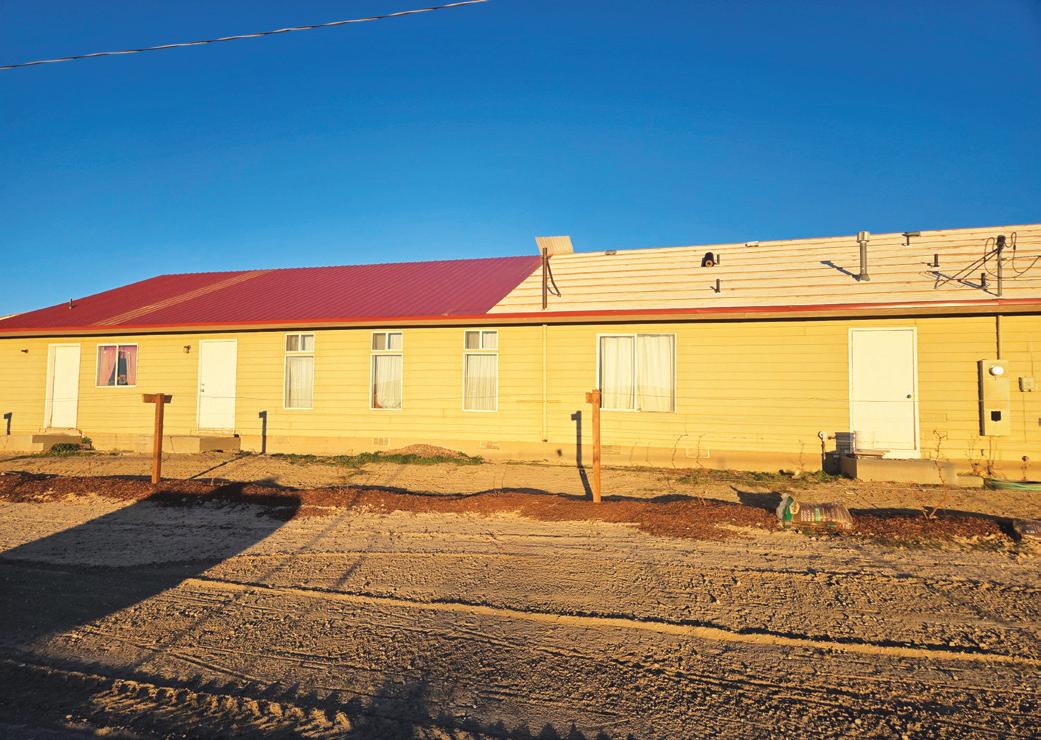

John Rasmussen retired on March 13, 2025, after 50 years of denominational service, including 31 years of dedicated leadership as the Northern California Conference (NCC) treasurer. Before joining NCC in 1994, Rasmussen served 17 years in the Montana, New Jersey, Potomac, and Washington conferences. During Rasmussen’s tenure as treasurer, he worked with five conference presidents, starting with Don Schneider, 1989-1994 (deceased).
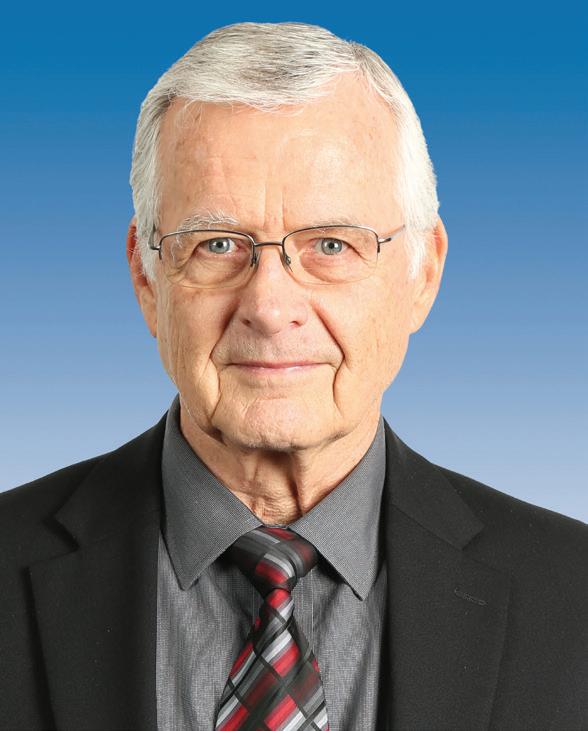
Four former presidents shared some of their memories about their time with Rasmussen: Darold Retzer, president 1994-2001: “When I arrived as president, NCC was experiencing some challenging financial times due to the economy. John was already the treasurer, and we struggled to get a balanced budget. He worked with our team to accomplish this within a couple of years. He quietly and efficiently did his work. I enjoyed working with him. Toward the end of my time there, I especially enjoyed the time we took off to go skiing with him and Ricardo Graham. We were a good team.” Ricardo Graham, president 2002-2006: “I had the privilege of serving beside Elder John Rasmussen for 11 years in the Northern California Conference administration. Elder Rasmussen was dedicated to assisting the schools, churches, and personnel by caring for their financial needs. John always respected others’ opinions and focused on protecting the financial strength

of NCC. His godly influence helped shape the work of God in NCC, the Pacific Union, and the North American Division. I pray for God’s continued blessing on him and Raylene as he enters this new phase of life.”
Jim Pederson, president 20062018: “What a joy it was to serve with John. There were very few dull moments and many interesting discussions through the years. He is a man of integrity with a great sense of humor. The treasurer’s job is to sometimes say no, with an eye on the bottom line. John did say no many times in our years but also found many ways to say yes. This wisdom and commitment to the mission of God and the NCC made it a pleasure to work with him.”
Marc K. Woodson, president 2018-present: “John and I have worked together for 17 years, and it has been a great time. John is a man of wit and wisdom and a great steward of God’s resources. I consider myself blessed for the time we have worked together. I often asked whether we could afford a ministry, and he would almost always find funding to make it happen. Our finances are in good order, a legacy of his core values and missional approach. His dedication and wisdom will be missed.”
John and Raylene, his wife of 54 years, plan to spend more quality time with their children and grandchildren. They reside in Paradise, California.
By Ken Miller

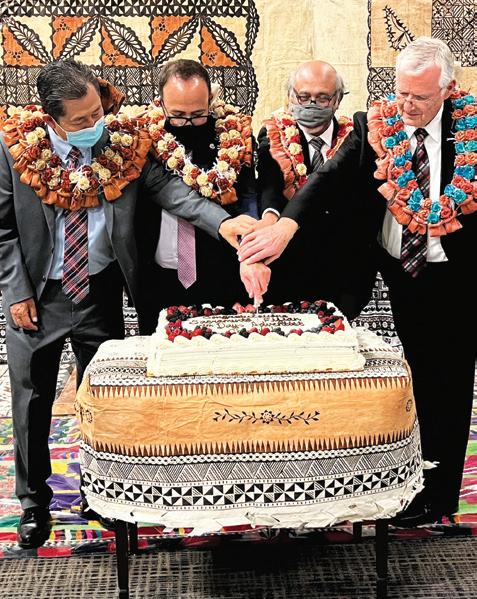

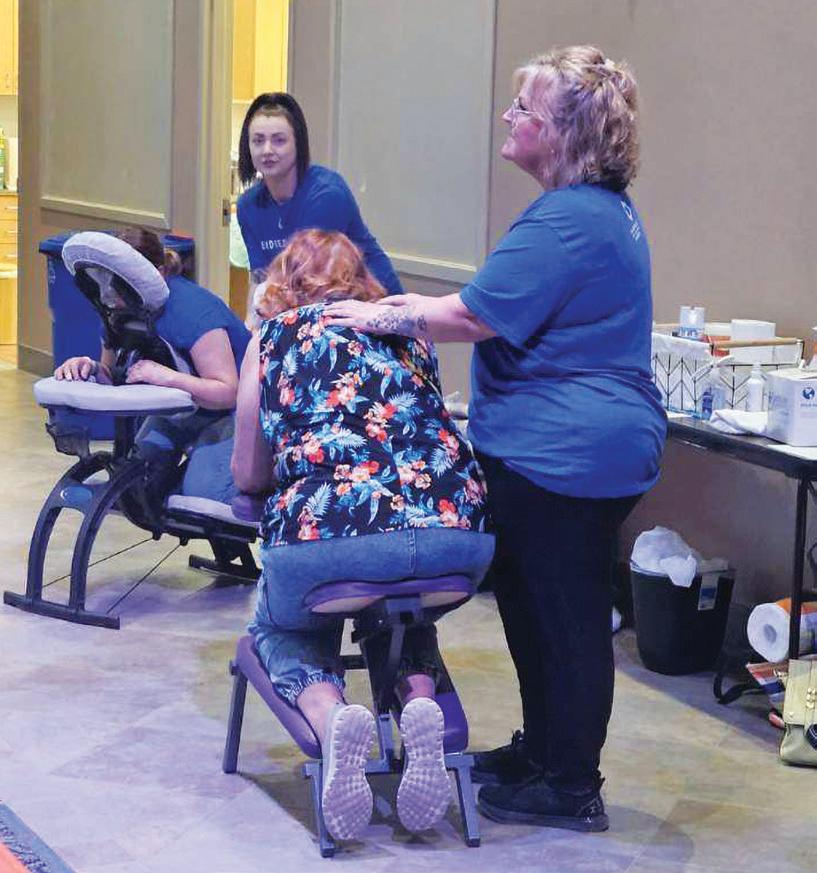
Placerville church is implementing a community engagement plan to create discipleship opportunities. Launched last year, the initiative has already led to transformative outreach efforts. During Christmas, the church converted its sanctuary into the town of Bethlehem, offering an immersive experience for the community. Then, in March, they transformed the Life Center—where the congregation currently meets—into a fully operational health clinic.
The clinic served 213 people, with 100 health professionals generously donating their time. Services included health screenings, dental work, eye exams with eyeglass fittings, skin examinations, well-being therapy, and a dedicated prayer room. Volunteers welcomed attendees with warm smiles, guiding them to the appropriate services with care and compassion.
One attendee, a woman who came in for an eye exam, expressed her astonishment at the quality of care she received. “When I saw the flyer at the town clinic, I was skeptical that any healthcare service would be free,” she said. “I thought it might just be a way to collect my information. But when I arrived, a real doctor examined me, and everything was so professional. After this, I’m scheduled to get my teeth cleaned and then a massage. I feel loved and cared for!”
The congregation wholeheartedly supports these outreach efforts, fostering a culture of generosity by giving their time and resources. The church’s food bank serves over 200 people weekly, and other ministries actively engage members and the broader community.
Additionally, the church maintains a strong partnership with its school, viewing it as a vital part of its evangelism ministry.
Pastor Andrew Uyeyama emphasizes the church’s mission: "Having worked as an evangelist, I know how crucial it is for the church to embrace and become relevant to the community. Through interactions like today’s clinic, we can draw people in and minister to them where they are. Seeing our members and community participants so engaged and enthusiastic is exciting!”
By Laurie Trujillo

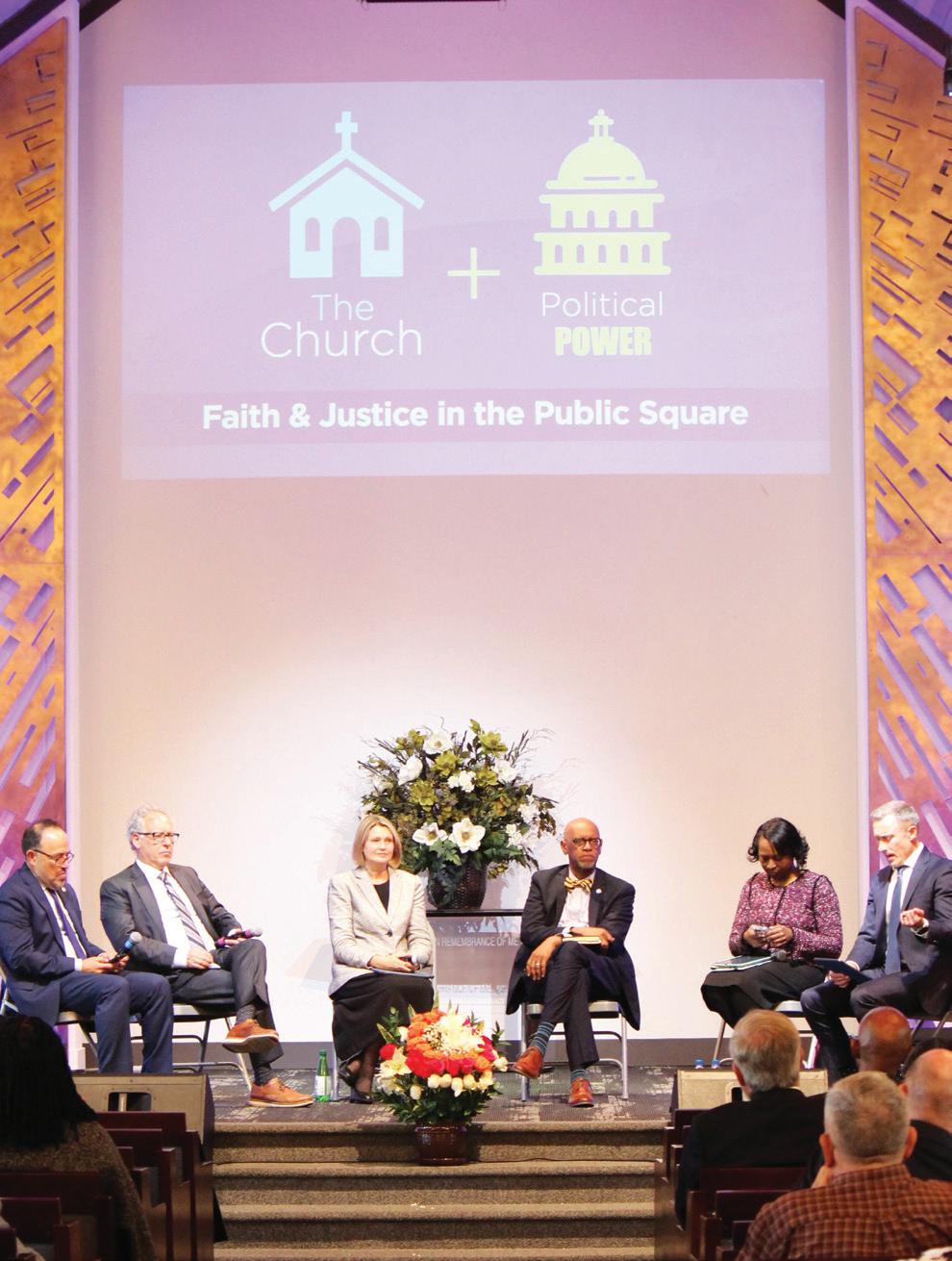


The Northern California Conference (NCC) and the Church State Council hosted the third annual Religious Liberty Summit at the Pleasant Hill church. The event attracted 330 attendees for a day filled with insightful discussions, expert panels, and interactive conversations about the importance of religious freedom.
Bettina Krause, editor of Liberty magazine, was the keynote speaker. Her topic was the trend among many Christians to believe that increasing secularism in society justifies the church uniting with the government to improve society's morals.
In the afternoon, an interactive panel discussion titled “Faith and Justice in the Public Square” featured Krause; Jeanice Warden-Washington, chief consultant at California State Assembly; Alan Reinach, president of the Church State Council; Jose Marin, NCC executive secretary; and Marc K. Woodson, NCC president.
The conversation, moderated by Steven Allred, NCC volunteer religious liberty coordinator, encouraged attendees to explore the intersection of faith and public policy. Allred noted, “The panelists discussed current church-state issues and took questions from the audience. Building on the success of this year’s event, the NCC and Church State Council look forward to expanding next year’s summit and continuing the conversation about faith's rights and responsibilities in an evolving society.”
By Ken Miller
Adventurers and their families gathered for the annual Adventurers Family Fun Day in the Marin Headlands. While the 2024-2025 theme is “Under the Sea,” this outing focused on exploring “next to the sea,” offering families a chance to enjoy the outdoors and strengthen their connections with one another.
The day included visits to the Marine Mammal Center, Battery Townsley, Rodeo Beach, and other
scenic spots. A family from the Lodi club shared photos of their children reaching the top of the hill to see the rare California newts at Battery Townsley. The strong winds made the hike a bit more challenging, but the stunning views of the ocean and the excitement of seeing the newts made the effort worthwhile. For many, this was their first visit to the Marin Headlands, offering a fresh and memorable experience.
At the Marine Mammal Center, Adventurers learned
about the rescue and rehabilitation of marine animals like seals and sea lions. They also discovered ways they could help protect wildlife by reporting injured animals and keeping the beaches safe for aquatic life. The event was a wonderful reminder of the value of the Adventurer program, which brings families together in a fun and meaningful way. It continues to provide a space for children and their families to grow spiritually, enjoy the outdoors, and make lasting memories.
By Barry van Iderstein



The third- and fourthgrade classes from Orangevale Adventist School (OAS), taught by Shelley Kramer, recently celebrated an incredible achievement at the 2025 Tang Math Presidents’ Day Tournament.
The Tang Math Tournament is for students in kindergarten through fifth grade. The math model uses a systematic and streamlined approach to instruction, using visual models, cleverly designed problems, games, and puzzles.

Competing against 6,000 students from 330 classrooms nationwide, OAS students excelled in the following categories:
• First place for the third- and fourth-grade level
• Second place overall for first, third, and fourth grades
• Individual competition—Levi, a fourth-grader, won for his grade level
• Individual competition—Oliver, a third-grader, won for his grade level
• Overall competition—First places for Levi and Oliver in their grade levels
Additionally, 15 OAS students ranked in the top 100 for the number of puzzles completed, solving over 3,000 puzzles each and over 15,500 math fluency puzzles.
Kramer praised her students, "We are extremely proud of the class for their dedication, perseverance, and outstanding performance in this tournament. We are committed to helping each student at Orangevale reach their full academic and personal potential. This achievement reflects the values of discipline, teamwork, and perseverance that we strive to instill in our students."
By Ken Miller
Many Azure Hills church members remember when the church campus was a country club, complete with an Olympic-sized pool and a snack bar. Azure Hills charter member Carolyn Marovitch remembers the journey to becoming a church. “I was with the group that walked through the country club before it was purchased.”
Founded on Jan. 1, 1965, by 288 charter members, the church has grown to over 2,300 members. On the weekend of Jan. 17-19, 2025, the church celebrated 60 years of rich history under the theme “All Belong,” reflecting the church’s commitment to embracing and uplifting people of all backgrounds and walks of life.
The anniversary weekend began on Friday, Jan. 17, with an evening of worship led by George Tuyu, youth pastor. Tara VinCross, senior pastor, preached on how everyone has a place at God’s table. During the first worship service on Saturday, Pastor Lee Venden presented a unique message that included memories of his late father, former Senior Pastor Morris Venden. During the second service, Southeastern California Conference President Jonathan Park congratulated the church for its 60-year history of gospel ministry. Grand Terrace Mayor Bill Hussey and Mayor Pro Tem Michelle Sabino then presented a plaque and proclamation
honoring Azure Hills' contributions to the community, including hosting community events, supporting safety during the pandemic, and creating the Elias Community Center.
John Brunt, former senior pastor, preached a message titled "Welcome," reminding the congregation to welcome others as Christ has welcomed us. The service concluded with five baptisms, including 92-year-old Florita Welborn, the oldest person ever baptized at Azure Hills, as well as Holly and Chris Negron and Anthony and Jankel Cadavid.
The weekend celebration continued with lunch and an evening concert by the Heritage Singers, and it concluded on Sunday with a pickleball tournament for players from ages 10 to 86 on the Azure Hills courts, organized by church member Ernie Medina Jr.
Throughout the weekend, Azure Hills celebrated God’s faithfulness, community impact, and commitment to welcoming all. “We are so grateful to Dr. Andy Sandiford and the anniversary planning committee, who did a fantastic job organizing this weekend,” said Pastor VinCross. “We are eager to see all that God will do in the years to come as we pursue Jesus, committed to loving our neighbors in Grand Terrace and beyond.”
By Keturah Reed


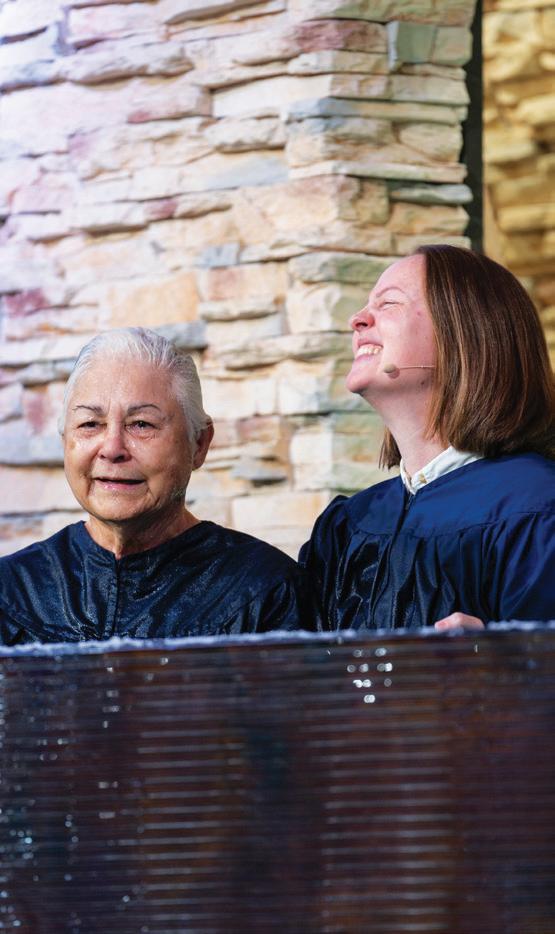

Growing up without a present father, I often questioned how a loving Heavenly Father could exist,” said Jonathan Navarro. “Church was always part of my life, yet I struggled with faith—attending only because I had no choice. Like many in my youth group, I felt disconnected.”
That all changed when Navarro ran into two friends returning from a summer with Youth Rush. They were happy and excited about God. He thought, “If God could do it for them, maybe He could do it for me.” Navarro, this year’s Youth Rush program head leader, joined the program the following summer, in 2019, and had a lifechanging experience. Through daily worship, he learned that even though he had no earthly father, he had a Heavenly Father who cared deeply.
That summer left a lasting impact, giving Navarro the desire to pursue a degree in pastoral ministry at Southern Adventist University. He shared, “I am driven by the hope of impacting other youth, just as Youth Rush did for me.”
Youth Rush is Southeastern California Conference’s student literature evangelism program, which empowers youth ages 16 to 25 to share the good news while earning funds for Adventist education. Formerly known as colporteuring, Youth Rush puts a new face on the long-standing ministry. Students distribute Bible-based literature in local communities on a donation basis, and the funds
support their Adventist education. In addition to the ministry benefits, it offers unforgettable experiences— camping weekends, beach trips, and even a retreat to Catalina Island to foster meaningful community.
However, the true purpose of Youth Rush goes beyond literature distribution. It develops social skills, builds confidence, and develops leadership qualities among young people. By engaging in mission, youth are equipped to become the future leaders of our churches and communities.
Over the last few years, Youth Rush has seen remarkable growth in participation, literature sales, and Adventist scholarships:
Each number represents a young person dedicated to mission, and each dollar represents a Christ-centered book in a community home. Every summer, many of our youth embrace the challenge to share the gospel and impact our communities. The personal experience of seeing God touch lives through literature is truly life changing.
If you are a young person seeking a mission opportunity or know someone who might benefit, visit seccyouthrush.com to learn more and apply for our 2025 summer program.
By Eric Isaia


Victorville church recently welcomed Pastor JJ Martinez Jr. as their new lead pastor. A California native, Martinez grew up attending La Sierra Academy and Rio Lindo Academy before beginning his journey into ministry. Outside of his pastoral work, he enjoys building LEGO sets as a stress reliever and exploring different cuisines, with Italian, Mexican, and Indian food among his favorites.
Since arriving at Victorville church, Martinez has been struck by the warmth and sense of community among its members. Through trust and partnership with the congregation, Martinez shared, “We can work together toward the church’s mission and vision of spreading the gospel of Jesus Christ."
Before stepping into pastoral ministry, Martinez initially envisioned a career in healthcare. "Initially, my plans were to serve people through the healthcare system," he shared. "I attended Union College [now Union Adventist University] and was in the nursing program. But while I was going through the program, I kept feeling God call me into pastoral ministry. After a while, I gave up running away from it and accepted that call. I felt so at peace and knew that God was leading, and I haven’t regretted that decision."

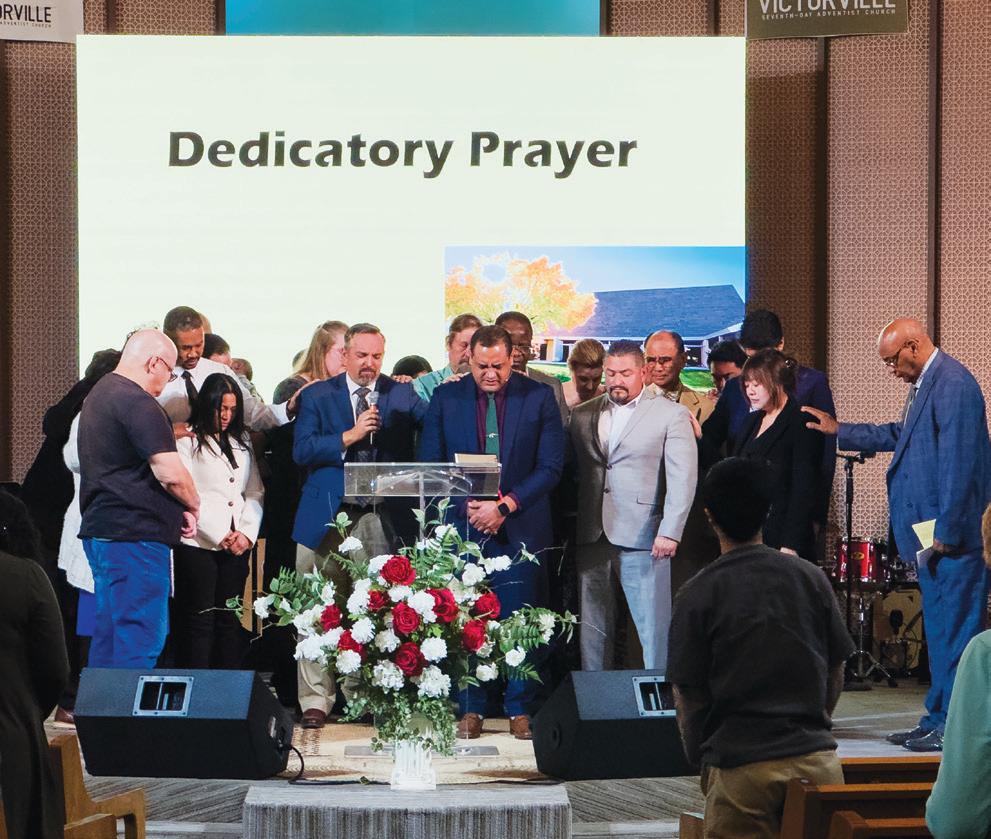
After completing his Master of Divinity at Andrews University, Martinez returned to the Rocky Mountain Conference, where he served multiple congregations, including the Lamar, Arkansas Valley, Pueblo, and Grand Junction churches.
For Martinez, ministry is about walking alongside people in their faith journey. “Many aspects of my ministry give me life and renew me,” he shared. “But the one that sticks out is seeing someone give their life to Jesus. Standing with someone in the baptismal waters is such a joy and honor. I love it when one person comes home to Jesus.”
As he settles into his first year at Victorville church, Martinez is focused on building relationships and supporting the church’s mission. Looking ahead, he hopes to continue strengthening connections within the congregation, mentoring those seeking to grow deeper in their faith, and celebrating moments of spiritual commitment, such as baptism and discipleship. “I want our church family to know that I am there for them through all that life has given.”
With a heart for discipleship and a passion for seeing lives transformed, Martinez looks forward to the journey ahead—one step at a time, walking in faith together.
By Neto da Silva



Applause and cheers of gratitude erupted in the worship center on the morning of Feb. 1, 2025. The Crosswalk Redlands community and members who are part of its Global Network filled the worship center to standing-room capacity. After 10 years of dedicated ministry, Tim Gillespie, former lead and teaching pastor of Crosswalk church, preached his final message as lead pastor. Iconically, he ended the service by reminding each member to “remember to Lovewell.”
Gillespie, who accepted a call to serve as vice president for mission and ministry for the Rocky Mountain region of AdventHealth, leaves a community deeply influenced by his leadership. Over the culmination of his 10 years with Crosswalk Redlands and the church’s intentional mission expansion, Crosswalk has grown into a worldwide movement.
Rather than upgrading local facilities to accommodate growth, Crosswalk chose to plant churches—a move that shaped the next six years of Gillespie’s ministry and continues to define the Crosswalk Global Network today. He noted, “By expanding the mission of Crosswalk outside of the four walls of Redlands, we began to meet more people who were committed to the gospel, to expand the kingdom of God, and who are willing to put in the work in order to attend the churches that they were willing to build.” He clarified that the
goal was never to simply broadcast a preacher from Redlands to multiple locations but to empower local leaders to serve their communities.
Crosswalk’s worship experience was intentionally structured around three key values: belonging, momentum, and experience. From hospitality teams to children’s ministries, every aspect of the church was designed to create an inclusive and dynamic environment where people felt connected and engaged.
While some may assume that a church with a modern worship style might lack biblical depth, Gillespie emphasized that the opposite was true. Crosswalk, he explained, has a strong Christology that informs its mission and church structure, offering extensive discipleship opportunities through small groups, podcasts, and structured trainings. Gillespie reflected with pride for the growing community seen through the church, Lovewell groups, and their home-based watch parties.
As he steps away from pastoral ministry, Gillespie shared advice for the next generation of church leaders: “The church is a living organism that allows for new growth, new ideas, and new opportunities. As you gain the trust of the organization and the people you minister to, you will be able to do so much more than you can imagine today.”
By Taji Saleem
At the heart of San Gabriel Academy (SGA) are three goals: to serve others, grow in Christ, and aspire to excellence, inspired by Christ’s words in Matthew 5:14, “You are the light of the world—like a city on a hilltop that cannot be hidden” (NLT). At SGA, Christ is not confined to a Bible classroom or a mission trip or a Week of Prayer. He’s also on the basketball court, which was evident during this year’s CIF Division III Boys Basketball playoffs.
With 155 students in grades 9-12, SGA is a small school compared to many teams they faced from 1,000-student schools. Their journey to the trophy wasn’t always easy, but the boys knew every battle served a greater purpose, and they never lost the awareness that they were representing God’s school, on and off the court. The collective prayer of SGA’s school family was this: “Whether we win or lose, let our examples bring glory and honor to God.”
In January, the devastating Eaton Fires that ravaged Pasadena and Altadena brought the season to a halt, shaking the community and forcing game cancellations. During those moments of uncertainty, the team’s head coach, Danny Piepoli, reminded his players what it meant to fight not simply for a game but for something greater. The championship run was about more than just basketball—it was the realization that they carried the hope and pride of the Adventist community that had supported them without wavering.
After losing to Sage Hill School in the Division 3AA Southern Section semifinals, the SGA administration received an email from a Sage Hill School senior guard. “Even in defeat, your players and coaches conducted


themselves with dignity and respect,” the email read. “Your state championship couldn’t have happened to a more deserving group who exemplified class in both victory and defeat.”
The historic postseason run saw the SGA team claim not one but two monumental titles, both for the first time in their school history: the Regional Southern Section CIF Championship and the Division III State Championship. The team was also the first Seventh-day Adventist school to ever win a state title in California. “We felt your energy,” Piepoli said of the Adventist community. “This championship belongs to all of us.”
This season will be remembered not only for the titles won but also for the spirit of a team that refused to give up, no matter the odds. SGA’s victory is a testament to what can happen when people come together with a shared goal and an unshakable belief in one another and in God. Serving others, growing in Christ, and aspiring to excellence happens on the basketball court, too.
By Danny Piepoli and Bonnie Iversen with Lauren Lacson

Camato leads the elementary Bible studies for about 20 students.

When a parent in Kevin Camato’s daughter’s fourth grade class at Glendale Adventist Academy (GAA) expressed interest in Bible studies for her child, she asked if Camato would be willing to give them, and an idea sparked. He first shared the idea with GAA religion teacher Jonny Moor and interim principal Nancy Garcilazo. Once he got the OK from them, he contacted fellow pastors to see who would be willing to help lead the studies.
Ellis Flores, pastor of Pasadena Spanish and Ebenezer Spanish churches; Christian Botello, associate pastor of Eagle Rock church; and Zac De Leon, associate pastor of Eagle Rock church, answered the call. When Camato, who pastors the Upper Room Fellowship company, reached out to parents, around 20 expressed interest.
“Pastor Camato and the other pastors have taken the time to interact with students in classrooms and on the playground, developing bonds of trust, camaraderie, and mentorship with students since the beginning of the school year,” Garcilazo said. “When it came time for Bible studies, of course many students wanted to attend— their trusted buddies were leading out!”
Studies began in January and concluded in April. The 10-week after-school program followed the baptismal study guide It’s My Choice , provided by the Southern California Conference Children’s & Family Ministries Department.
These studies are close to Camato’s heart—as a pastor leading people to Christ, as a parent wanting His children to grow in relationship with Jesus, and as a GAA alumnus who wants to see his alma mater be “one of the benchmarks of Christian Adventist education in the Glendale area.”
“The purpose is teaching our kids about God,” Camato said, “and giving them the opportunity to make a decision for baptism. I want our kids to just be excited about God and wanting to learn about the Bible and just having that basic knowledge and love for God.”
Excitement for the studies has grown. When some of the junior high students saw that the elementary students were engaged in these studies, they shared interest in beginning Bible studies of their own. Around the same time the elementary studies finished, junior high studies began. With support from the original team of pastors, a new group of four pastors are leading those studies.
“It is beautiful to know that students are learning about God’s love and grace here at school,” Garcilazo added. “I think it is impossible to underestimate the value of a pastor taking regular time to interact both formally and informally on campus.”
By Araya Moss
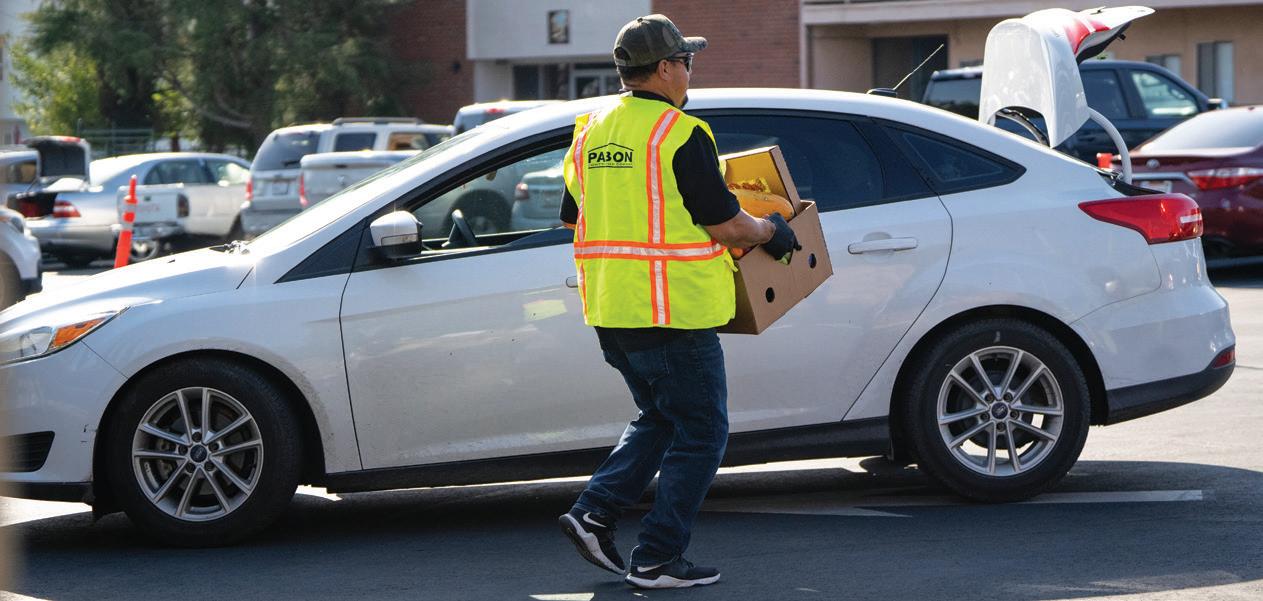

Each week, hundreds of people visit the La Voz Sylmar Spanish church in San Fernando Valley to receive free food. For 10 years, the church has hosted this weekly food bank ministry that does much more than distribute food to people in need. There have been many baptized as a result of the ministry.
“This wouldn’t happen without the volunteers,” said Enoc Calderon, La Voz Sylmar Spanish church pastor. Not all volunteers are members of the church, but all share a common commitment to the importance of the ministry. Dora Canales, member of La Voz Sylmar Spanish church, is the food bank director. Each week, the food comes from Rescue Mission Alliance Valley Food Bank and Los Angeles Regional Food Bank, while Dora and others visit Vons, Trader Joe’s, and other stores to collect items on Tuesdays and Wednesdays.
Every Thursday afternoon, cars start lining up around 1:30 p.m. The gate opens between 3:30 and 4 p.m., followed by a short devotional and prayer time when guests hear an uplifting message and have an opportunity to share their prayer requests that the church will pray over on Sabbath.
After this, it’s time for the food distribution to begin. The walk-ins are always served first, then the cars

Volunteers—some who have been helping out for the whole day—gather for a photo after the food bank closes and tear-down is complete.

The space has evolved over the years to support the ministry—collapsible canopies borrowed from Pathfinders have been replaced with a built-in awning on the storage building that serves to cover the preparation and service area.
come through. Each family receives two boxes of food, including bread, fruit, and more.
There aren’t many things that can interrupt this ministry. “Last week, it was pouring,” one volunteer said. “Rain or shine, we’re here.” Even in 100-degree weather or high winds, they remain faithful and committed to the mission of the ministry. Even around the holidays, the food bank won’t close its doors; instead of closing, it may open on a different day of the week.
The efficiency of the operation makes for a quick service that continues until food runs out. As cars continue to trickle in during tear-down, additional food boxes are assembled from whatever is left—the team tries to avoid letting anyone leave empty-handed. “People from different backgrounds, they come here with different cases and situations, and we always give something to them,” said Calderon. “Always, always.”
By Lauren Lacson
Teens4Christ, a ministry at Vallejo Drive church where teenagers can safely hang out, have fun, and make connections in a Christian environment, has become an integral part of the church since beginning in 2018.
The ministry met the need for an Earliteen Sabbath School class at the time. Initially there was hesitancy; members saw the need but didn’t know how to engage with this age group. Audrey Zorek, who had just taken over as the lower division Sabbath School superintendent, rose to the challenge.
“This is a group that’s easily forgotten in the church,” Audrey said. “This is the time when they start making decisions, start questioning God, and asking why.”
He quickly went to task creating a space that would be welcoming. Aesthetic changes to the designated room, such as bringing in comfortable furniture and updating the decor, brought new energy into the space. He also broke away from the traditional “Earliteen” nomenclature, opting for the catchy Teens4Christ. At that time, the group grew from four to 15 kids.
Then the kids started to outgrow the Teens4Christ age group. Concurrently, a new need emerged: children’s ministry. Zorek switched gears, and for the next several years, he focused on Kids Connection, Vallejo Drive’s program for children ages three to 10. The cycle continued, and those children were growing up.
“My daughter,” Audrey remembered, “who was 12 at the time, said to me, ‘So, Dad, you know how you did that great thing with the teens? When are you going to start that back now that I’m a teen?’”
Since Zorek was still helping with Kids Connection on Sabbath, he revamped Teens4Christ to create a space for teens to hang out on Friday afternoons after school with games and activities, dinner, and vespers. Word quickly spread.
“Kids started inviting their friends from school, their neighborhood—all over,” Audrey said. “They were just pouring in on Friday because there’s this cool place where kids get to hang out with their friends. In one year, we were able to bring that program from five kids to 35 kids.”
“When we get together and show them the importance of church family—how we support each other and can trust each other—feeling that they’re a part of a church is helping them to see Jesus as a friend and someone they can trust,” Audrey said. “My goal is to help them get a little closer to Jesus.”
The group is currently growing from inreach to outreach. As Zorek helps them to see how Jesus was service-oriented, he sees the next step as helping the kids get involved in community service. “That’s what Jesus did,” Audrey said. “That’s what we’ll do.”
By Araya Moss
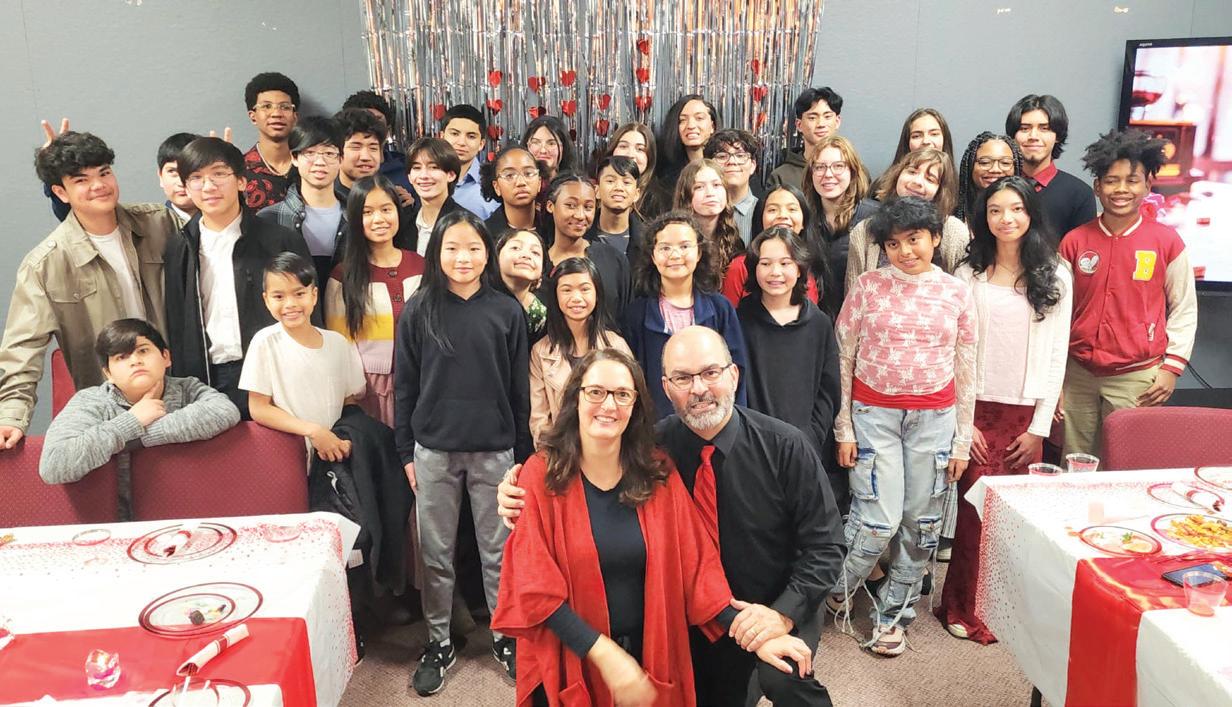

Advertising is accepted as a service to Seventh-day Adventist church members in the Pacific Union. The Recorder management reserves the right to refuse any advertisement, especially ads not related to the needs and practices of the church membership. Acceptance of any advertising shall be considered a matter of accommodation and not a matter of right, nor shall it be construed to constitute approval of the product or service advertised.
Payment in advance must accompany all classified advertisements or they will not be published. Display ads for known advertisers will be billed.
Classified ads must be sent with payment to the Recorder office. Display ads should be arranged with the editor (recorder@adventistfaith.com).
Classified Rates
$70 for 50 words; 75 cents each additional word. Display rates (full color only): back cover, $4,200; full page, $3,800; 1/2-pg., $2,200; 1/4-pg., $1,200; 1/8-pg., $700; $160 per column inch.
Information
The Pacific Union Recorder is published 12 times per year with a circulation of approximately 75,000. For more information about advertising, please email to recorder@adventistfaith.com.
These are the advertising deadlines for the Recorder. Your local conference news deadlines will be earlier. June: May 1 • July: May 29
Contributions
The Recorder pages are assigned to the local conferences, colleges, and healthcare institutions, and all content comes through the communication departments in those organizations. If you have a news story/idea, calendar announcement, etc., please contact your local communication department. See the masthead for contact information. Want tips for writing for us? See www.dailywritingtips.com/the-artof-writing-news.
The Pacific Union Recorder is provided as a free service to members of the conferences that are part of the Pacific Union Conference (Arizona, Hawaii, Northern California, Central California, Southern California, Southeastern California, and Nevada-Utah). Each conference maintains the list of members, based on the reports from their churches. If you would like to make a change to your subscription (name, address, cancellation), please contact your local conference. The staff of the Recorder does not have access to the circulation lists, other than the paid subscriptions.
Presidential Inauguration. La Sierra University will celebrate the inauguration of its sixth president, Dr. Christon Arthur, on Tuesday, May 20, at 11 a.m. at the La Sierra University church. For information, contact tspedden@lasierra.edu or 951-785-2020. The church is at 4937 Sierra Vista Ave, Riverside.
Graduation Weekend. La Sierra University will celebrate the Class of 2025 with commencement weekend June 13-15. For further information, visit https://lasierra.edu/graduation/.
Roméo et Juliette. La Sierra University’s Department of Music will present Charles Gounod’s rendition of the classic tragic tale of star-crossed lovers Romeo and Juliet. Directed by Dr. Raejin Lee, this event will be performed in Hole Memorial Auditorium Sat., May 31, 8-11 p.m., and Sun., June 1, 3-6 p.m. Tickets: $10-$23, https://music-events.lasierra.edu.
Pacific Union College
Orchestra Concert, June 1. All are invited to attend PUC Orchestra’s final performance of the year on Sunday, June 1, at 7 p.m. in Paulin Recital Hall. Admission is free. Questions: 707-965-6201 or music@puc.edu.
Paulin Center for the Arts End-of-Year Recital, June 8. Hear what PUC’s PCA students have learned this year as they present pieces on a variety of instruments in a variety of styles: guitar, voice, piano, cello, percussion, violin, horn, trumpet. Two opportunities to enjoy their performances: Sunday, June 8, at 12 p.m. and 2 p.m. Both recitals take place in Paulin Recital Hall on the campus of Pacific Union College. Admission is free and open to all.
PUC Graduation Weekend, June 13-15. Pacific Union College is pleased to invite family and friends to Graduation Weekend for the class of 2025. Consecration, baccalaureate, and other events will happen throughout the weekend. The Commencement ceremony will take place on Sunday, June 15, at 9 a.m. at the Maxwell Commons. Guests should arrive at least an hour early to find parking and seats before the procession.
Connect Ministries is a group of Pacific Union College students passionate about Jesus and sharing through music and worship. The bilingual team leads the worship services, retreats, youth events, and any programs where they can inspire other young people to become worship leaders. Any school or church interested in having them visit, please email connectministries@puc.edu
Add PUC News in your Church Bulletin. With many updates to share at Pacific Union College, we designed a printable bulletin insert for churches to use. Just print the PDF double sided and cut in half, then include as a bulletin insert. Download at puc.edu/bulletin.
Subscribe to the PUC Now Newsletter. Stay up-todate with Pacific Union College by subscribing to their monthly newsletter at puc.edu/subscribe. From campus stories and alumni features to student interviews, you’ll be in the now with PUC.
Holbrook Indian School is currently in need of an English/social studies teacher, an industrial/vocational arts teacher, a director of maintenance, and a maintenance associate. These are paid positions. If you or someone you know are mission-minded and would like to serve American Indian children, please see or share our jobs page at HolbrookIndianSchool.org/jobs.
The Miranda Seventh-day Adventist Church is looking for a missionary-minded couple to care for its church. The couple will rent the church trailer
home and be responsible for maintaining the church grounds. For more information, please call Mike Michelli at 707-296-5518.
Wanted: Live-in housekeeper, some cooking, errands, dog care for senior widow in gorgeous estate in Henderson, NV. Private quarters, great lifestyle, guard gated community in Lake Las Vegas. Flex hours, days, must have a car. Send info to curtismyrna@verizon.net or call Myrna at 310-613-9549.
Manage estate home in Henderson, NV, part time. Perfect for semi-retired person to help with housekeeping, some cooking, dog care, and errands for widow who travels. Flex hours, gorgeous new Casita home with garage. Fantastic upscale living in guard gate community. Must have car. Call Myrna at 310-613-9549.
Adventist World Radio is seeking to hire someone to visit donors full time. Must be committed SDA, superior work ethic, available to travel 7 to 10 nights per month throughout the West Coast. AWR is the most exciting Adventist ministry today!
You Can Change Lives! Canvasback Missions is seeking a dedicated couple of strong faith to be co-directors of our Wellness Center, Majuro Atoll, Marshall Islands in
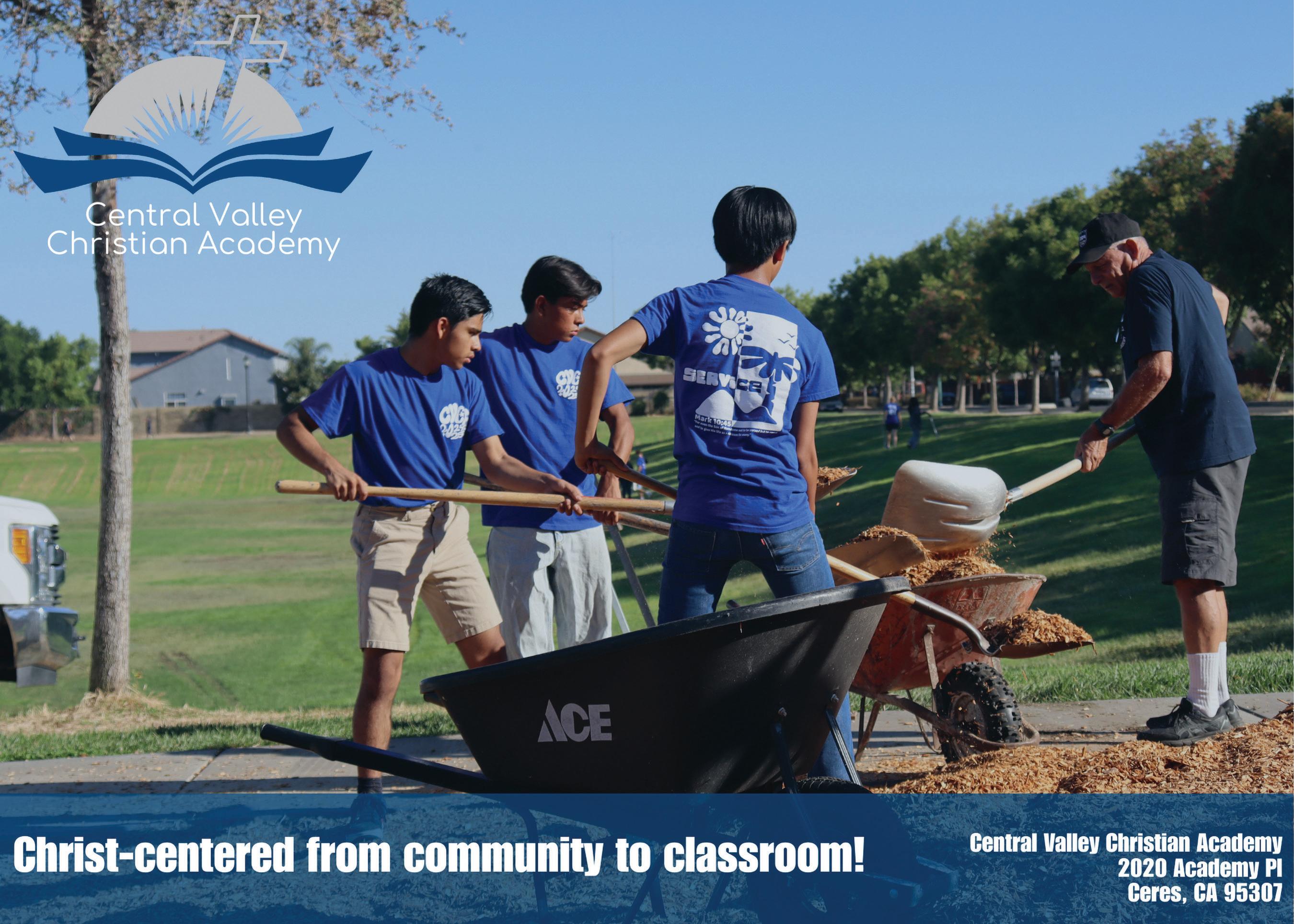
the tropical North Pacific. More information: https://canvasback.org/career/ or call 707-746-7828.
PUC Commercial Space for Rent. Pacific Union College has commercial real estate space available for lease. The spaces are in various sizes and functionality and are available for inquiries. For additional information, please email Sam Heier at sheier@puc.edu.
Cottage for Rent. Are you looking for serenity and peace? Then this rental is the perfect place for you. A small and private cottage, complete with picket fences and gardens. 1 bedroom, 1.5 bathrooms, skylights, and unique shower. Located in foothills by Collins Lake, CA. Contact John at Mountains. skyz@gmail.com.
For Rent to One Person: Small, rough cabin on 10 acres. $750 monthly. Owner will barter $500 monthly in labor. Needs finish work, deck built, plumbing, and solar system. You need 4WD, experience, and tools. Five miles to hardware, grocery. Calaveras County, CA Credit report required. donnadeblauw9@gmail.com.
Summit Ridge Retirement Villages, an Adventist community in a rural setting, offers affordable homes or apartments and caring neighbors, with fellowship you will enjoy. Onsite church, planned activities, and transportation as needed. Onsite Wolfe Living Center offers independent living and nursing homes. Visit SummitRidgeVillage.org or call Bill Norman 405-208-1289.
Outpatient Physical Therapy and Aquatic Therapy in the foothills above Sacramento, CA. Turnkey practice, in business for over 30 years. Great referral base and solid practice. Lots of potential for growth. Great opportunity for someone wanting to establish a medical mission outpost or wellness center as well. 5400-sq-ft facility. $450,000. Flexible options to the right party. Contact levi2000@sbcglobal.net or leave message at 209304-7455.

office building with 8 exam rooms, excellent support staff, completely furnished, 10 years of patients in electronic medical records. Transition assistance available. Please contact William H. Taylor II, CPA, MBA at whtayloriitn@gmail.com indicating level of interest.
Country Living in Northern California: 3 bedroom, 2 bath, newly renovated home for sale on one acre, quiet street 15 minutes from Redding, mature fruit trees, grapevines, 50x80 fenced garden area with small greenhouse, irrigation system, landscaping, 3-car garage, gym, and large 18x30 shop with RV hookups. Call, text 909-735-2745.

Well-established medical practice for sale in beautiful East Tennessee, one hour from Southern Adventist University. Low capital investment, 4000-sq-ft
Biblical study tour of Greece. Footsteps of Apostles Paul and John in Greece. Sept. 3-15, 2025. A biblical journey through Philippi, Amphipolis, Thessalonica, Berea, Athens, Corinth, Vergina, Meteora, and Delphi. Enjoy a cruise to Patmos, Crete, Santorini, Mykonos, and Ephesus. Experience the Greek culture and food. Info: www.biblicaltouring.com, George Dialectakis, 860-402-2247.
Biblical study tour of Turkey. Discover the Seven Churches of Revelation in Turkey. Sept. 14-21, 2025. Start at Istanbul, old Constantinople, and visit St. Sophia. Travel to the historic cities of Ephesus, Smyrna, Pergamum, Thyatira, Sardis, Philadelphia, Pamukkale, Laodicea, and Kusadasi. Info: www.biblicaltouring.com, George Dialectakis, 860-402-2247.
Travel on a faith-based biblical tour to Malta and Sicily (Sept. 2025), Egypt (Dec. 2025), or Israel (March 2026) with Dr. Carl Cosaert, Dean of the School of Theology at Walla Walla University. To learn more, visit www.adventtours.org or email info@adventtours.org.

Free Digital Cards. LifeTalk Radio has many beautiful FREE digital sharing cards for all occasions. Let others know: “God Loves You.” Encourage friends and neighbors by sending a hopeful message or Bible promise via email or text. Just visit: LifeTalk.net/ eCards.
Hello SDA bikers in Southern California! Come ride with us, the Loma Linda chapter of Sabbath Keeper’s Motorcycle Ministry (SKMM), in the West Coast Thunder Memorial Day ride, 5/26, in Riverside, CA. See what a Christian bike ministry is about! Fellowship with us at our booth at end of ride. Contact Russ for more info at bikerruss@icloud.com or to chat about starting your own chapter.
Partner with ASAP Ministries in serving the marginalized and reaching the unreached in Southeast Asia with the wholistic gospel. What you do today can change a life for eternity! To learn more visit asapministries.org. Subscribe to our weekly Mission Matters videos. Follow us on Facebook, Instagram, and YouTube: asapministries.
Canvasback Missions: Help the Lord’s ministry of healing in Micronesia by donating your car, boat, bike, RV, or truck. All proceeds help provide free medical services to the island peoples of Micronesia. Canvasback Missions, a 501 (c) (3) charitable
organization, has been serving since 1986. For more info: www.canvasback.org, 707-746-7828.
Shop for new/used Adventist books: TEACH Services offers used Adventist books at www.LNFBOOKS. com or new book releases at your local ABC or www. TEACHServices.com. Authors, let us help publish your book with editing, design, marketing, and worldwide distribution. Call 706-504-9192 for a free evaluation.
Alipoon, Alan – b. Jan. 20, 1955, Manila, Philippines; d. March 14, 2025, Loma Linda, CA. Survivors: wife, Laura; children, Tawny, Cabana; siblings, Ruel, Senia, Darlene; two grandchildren. Alan was director of the postprofessional respiratory care program and instructor in multiple programs at Loma Linda University.
Anobile, Elvira – b. Aug. 6, 1937, Argentina; d. March 26, 2025, Riverside, CA. Survivors: daughter, Grace; son, Tony; siblings, Atilio Dupertuis, Ines Hang; five grandchildren; two great-grandchildren.
Balan, Vasile – b. Sept. 8, 1940, Baraganu, Romania; d. Feb. 26, 2025, Redlands, CA. Survivors: wife, Lidia; children, Sam, Cornel, Aurora, Marius, Anina Elizondo, Danut, Sorinel; three grandchildren; three greatgrandchildren.
Barceló, Judy – b. Feb. 14, 1951, Oceanside, CA; d. Feb. 28, 2025, Redlands, CA. Survivors: husband, Harold; daughter, Rebecca; siblings, Tim Strand, Susan Brown.
Brooks, Carol Jeanne – b. Oct. 26, 1948, Takoma Park, MD; d. Feb. 15, 2025, Loma Linda, CA. Survivors: husband, Maurice; children, David, Donald, Debra; siblings, Patricia Slattery, James Pedersen; four grandchildren.
Caldwell, Janet – b. Jan. 17, 1953, Detroit, MI; d. March 17, 2025, Palm Springs, CA. Survivors: husband, Bob; sister, Sandra Sellers.
Carlisle, Nash III – b. July 11, 1975, Rancho Cordova, CA; d. Jan. 8, 2025, Carmichael, CA. Survivor: wife, Emily Sime. Nash graduated from Sacramento Adventist Academy in 1993. He spent 20+ years volunteering in the media department at Sacramento Central church. He also taught in the Junior Sabbath School class.
Carpenter, Colleen Robson – b. Feb. 8, 1957, Burnaby, British Columbia, Canada; d. Jan. 8, 2025, Sonora, CA. Survivors: husband, Kevin; sons, Curtis, Kerry, Kristoffer; five grandchildren. Colleen dedicated 35 years of service to Adventist Health, working as both a nursing assistant and a patient accounts biller.
Christensen, Martin – b. May 25, 1936, Leavenworth, WA; d. Oct. 21, 2024, Fair Oaks, CA. Survivors: daughter, Cheryl Wood; two grandchildren; one greatgrandchild; brother, Ed Christensen.
Cudney, Charlotte – b. Aug. 22, 1930, Eureka, CA; d. Feb. 13, 2025. Survivors: numerous nieces, nephews, and other family members.
Donesky, Martha (Kerbs) – b. May 6, 1936, Saskatchewan, Canada; d. Jan. 8, 2025, Vallejo, CA. Survivors: sons, Doug, Orville; daughter, DorAnne; daughter-in-law, Susan; eight grandchildren; three great-grandchildren. Martha and her husband, Bob, worked in Adventist education for decades, serving Fortuna Jr. Academy, Monterey Bay Academy, and schools in Michigan.
Effenberg, John – b. March 27, 1934; d. Jan. 9, 2025. Survivors: wife, Janis Kelley-Effenberg; daughters, Joanna Henderson, Janee Anderson; five grandchildren; one great-grandson.
Evans, Robert – b. Oct. 14, 1932, Santa Barbara, CA; d. Oct. 16, 2024, Sonora, CA. Survivors: daughter, Teri Deacon; two grandchildren, three greatgrandchildren. Bob served as a teacher and principal in the Central, Southern, and Southeastern California conferences.
Fernandez, Dolores – b. Dec. 12, 1941, Albay, Philippines; d. Jan. 10, 2025, Lucerne Valley, CA. Survivors: children, Valerie Enright, Rigoberto Fernandez.
Gardner, Philip – b. March 22, 1929, National City, SD; d. Nov. 24, 2024, Yuba City, CA. Survivors: son, Duane; two granddaughters.
Greenwood, Bill – b. May 18, 1929, Los Angeles, CA; d. Jan. 30, 2025, Lodi, CA. Survivors: wife, Shirley; sons, Dennis, Jack; daughters, Colleen Wang, Carolyn Bailey; stepsons, Steve and Scott Huggins; stepdaughter, Machelle Bartlett; many grandchildren and great-grandchildren. Bill taught 5th-8th grade at Galt SDA Elementary School. He was a teacher, veteran, and decades-long volunteer with multiple ministries.
Grohar, Albin – b. Sept. 12, 1943, Graz, Austria; d. March 7, 2025, Highland, CA. Survivors: wife, Irene; children, Al, Brian, Carmen; six grandchildren.
Grosshans, Jonnie – b. Aug. 15, 1945, Mandan, ND; d. Dec. 29, 2024, Herald, CA. Survivors: husband, Herman; son, Chauncey; daughters, Kristi, Elizabeth.
Hull, Jacqueline – b. March 12, 1927, Buchanan, MI; d. Nov. 25, 2024, Banning, CA. Survivors: son, Randy; daughter, Marilyn Prior; five grandchildren; two greatgrandchildren.
Hull, William – b. May 29, 1932, Spearman, TX; d. Feb. 15, 2025, Hemet, CA. Survivors: children, Cherie Hull-Foster, Randall Hull; two grandchildren; three great-grandchildren.
Janzen, Lloyd – b. Feb. 3, 1938, Roland, Manitoba, Canada; d. Feb. 2, 2025, Redlands, CA. Survivors: sons, Bruce, Brad, Byron; brother, Bob; two grandchildren.
Kindrick, Deanna – b. Oct. 28, 1929; d. Feb. 14, 2025, Auburn, CA. Survivors: husband, Milton; son, Joel. Deanna worked for nearly 30 years at Adventist Health in Roseville, CA.
Kindrick, Milton – b. Dec. 9, 1939, Denver, CO; d. March 23, 2025, Auburn, CA. Survivor: son, Joel. Milton touched the lives of countless students during his teaching career at Sacramento Union/Adventist Academy, Pine Hills Junior Academy, and Pleasant Hill Junior Academy. For many years he led mission trips to Mexico, Dominican Republic, Peru and other places in Latin America.
Lau, Francis Y.K. – b. Jan. 5, 1924, Honolulu, HI; d. Feb. 25, 2025, Loma Linda, CA. Survivors: children, Gerald Lau, Ronald Lau, Kathy Peverini, Herb Ruckle; nine grandchildren; five great-grandchildren.
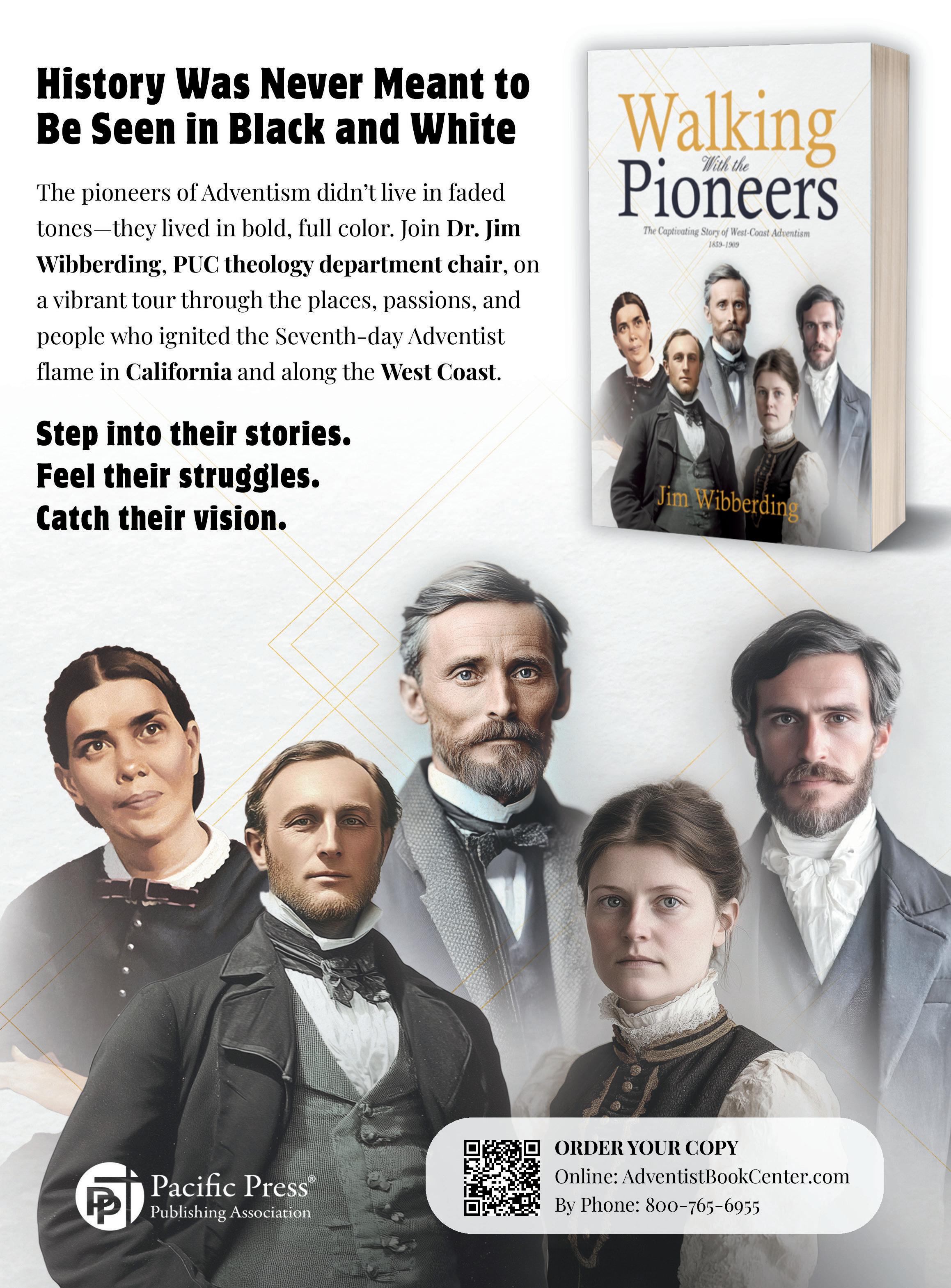
Lombard, David – b. Aug. 15, 1950, Big Springs, TX; d. Feb. 3, 2025, Ivanhoe, CA. Survivors: wife, Carolyn; children, Jason, Erin Foll, Cecilia, Matthew; five grandchildren; siblings, Pauline Kelly, Kenneth Lombard, Tanya Shetler. David served faithfully as a deacon and elder for many years. He was an assistant director and counselor for Pathfinders, as well as an assistant for CCC Life Hope Centers. Known as the all-around “go-to guy,” he took care of many behind-the-scenes tasks with dedication and skill.
McCarthy, Peggy A. – b. Nov. 19, 1947, Alturas, CA; d. Nov. 30, 2024, Sacramento, CA. Survivors: husband, Jim; sons, Rocky, Jon, Richard; eight grandchildren.
Miller, Duane – b. July 13, 1931; d. Jan. 30, 2025, Lodi, CA. Survivors: one brother; three children.
Neff, Juanita Joy – b. Oct. 23, 1956, Lowell, MA; d. Feb. 27, 2025, Redlands, CA. Survivors: children, Joshua Allen, Jennifer Allen.
Obst, Priscilla – b. July 4, 1926, San Bernardino, CA;
City/Location MAY 2 MAY 9 MAY 16 MAY 23 MAY 30
Alturas 7:56 8:02 8:09 8:14 8:20
Angwin 8:03 8:09 8:15 8:21 8:27
Bakersfield 7:43 7:49 7:54 7:59 8:04
Calexico 7:24 7:29 7:34 7:39 7:43
Chico 8:02 8:09 8:16 8:22 8:28
Death Valley 7:36 7:42 7:48 7:54 7:59
Eureka 8:14 8:21 8:28 8:35 8:40
Four Corners [E] 8:06 8:12 8:18 8:24 8:29
Fresno 7:48 7:55 8:00 8:06 8:11
Grand Canyon (South Rim) 7:17 7:22 7:28 7:34 7:39
Half Dome 7:49 7:56 8:20 8:08 8:13
Hilo 6:44 6:46 6:49 6:52 6:55
Holbrook (Sun City) 7:13 7:18 7:23 7:28 7:33
Honolulu 6:57 7:00 7:03 7:06 7:09
Joshua Tree 7:30 7:35 7:41 7:46 7:50
Lake Tahoe 7:53 8:00 8:07 8:13 8:18
Las Vegas 7:29 7:35 7:41 7:46 7:51
Lodi-Stockton 7:57 8:03 8:10 8:16 8:21
Loma Linda 7:34 7:39 7:44 7:49 7:54
Los Angeles 7:37 7:43 7:48 7:53 7:58
McDermitt [N] 7:51 7:58 8:06 8:12 8:18
Moab 8:11 8:18 8:24 8:30 8:36
Monterey Bay 7:57 8:03 8:09 8:14 8:19
Mt. Whitney 7:31 7:37 7:42 7:47 7:51
Napa 8:01 8:08 8:14 8:20 8:25
Nogales 7:04 7:09 7:14 7:18 7:22
Oakland 8:00 8:07 8:13 8:19 8:24
Paradise, CA 8:02 8:09 8:14 8:21 8:27
Phoenix 7:12 7:17 7:22 7:27 7:32
Pu‘uwaiau, Ni’ihau [W] 6:45 6:48 6:51 6:54 6:56
Reno 7:54 8:01 8:07 8:13 8:19
Riverside 7:34 7:39 7:45 7:50 7:54
Sacramento 7:59 8:05 8:12 8:18 8:23
Salt Lake City 8:25 8:32 8:39 8:45 8:51
San Diego 7:31 7:36 7:41 7:46 7:50
San Francisco 8:01 8:07 8:13 8:19 8:24
San Jose 7:58 8:04 8:10 8:16 8:21
Santa Rosa 8:03 8:10 8:16 8:22 8:27
Sunset Beach 7:57 8:03 8:09 8:15 8:20
Thousand Oaks 7:40 7:45 7:51 7:56 8:00
Tucson 7:05 7:10 7:15 7:20 7:24
[N]=Northernmost [S]=Southernmost [E]=Easternmost [W]=Westernmost point in the Pacific Union
“So there remains a Sabbath rest for the people of God.” Hebrews 4:9
d. Feb. 25, 2025, Loma Linda, CA. Survivors: daughters, Bonnie Meyer, Barbara Ninan; numerous grandchildren and great-grandchildren.
Pasamba, Evelyn – b. Feb. 2, 1952, Mandaluyong, Philippines; d. Feb. 8, 2025, Riverside, CA. Survivors: husband, Ireneo; daughters, Sherrie Mendoza, Lorraine Mae Decano; one granddaughter.
Penick, Gerald – b. Oct. 1, 1944, Topeka, KS; d. March 7, 2025, Alvarado, TX. Survivors: wife, Linda; children, Gerald Penick Jr., Eric, Anthony; seven grandchildren; numerous relatives. Elder Penick lived a life dedicated to ministry, service, and inclusion. His extensive tenure included pastoring within the South Central, Central States, Allegheny West, and Southeastern California conferences before serving as vice president, executive secretary, and then president for SECC from 2005-2012 before retirement in 2019.
Perez, David – b. May 2, 1936, Huancayo, Peru; d. Jan. 27, 2025, Riverside, CA. Survivors: wife, Elizabeth; children, Sam, Areli, Aurora Sanchez; four grandchildren. He pastored in Peru and within the Southeastern California Conference.
“So
Rose, Richard – Feb. 5, 1928, Sacramento, CA; d. Feb. 13, 2025, Placerville, CA. Richard spent many years in the recording business, recording his own music and helping other artists record their CDs. For a time, he worked at Amazing Facts as an audio room operator.
Rue, Walter – b. Oct. 26, 1937; d. March 2, 2025. Survivors: wife, Janice; daughter, Noelani Sunderland; one grandson; brother, Tony Rue.
Shells, Helen – b. April 3, 1943, Texarkana, AR; d. Jan. 31, 2025. Survivors: children, Lorenzo Shells, Lana Nazario; five grandchildren; one great-grandchild.
Skoretz, Frank – b. Nov. 19, 1933; d. Feb. 19, 2025. Survivors: wife, Kalyna Birmele; son, Bradley; daughters, Sherylle, Patricia, Judy; stepchildren, Ricardo, Mark, Heidi; six grandchildren; eight step-grandchildren; one greatgrandson; eight step-great-grandchildren. Frank served the church from 1957-2006. His roles included pastor to 13 churches, president of British Honduras Mission, head of education in the Costa Rica Mission, education superintendent in British Columbia Conference, Bible teacher and counselor at Modesto Union Academy and Glendale Adventist Academy as well as vice principal and principal.
Stilson, Mildred A.R. – b. Jan. 16, 1921, Lucknow, India; d. Jan. 29, 2025, Loma Linda, CA. Survivors: son, Eric; three grandchildren; three great-grandchildren.
Swanlund, Wanda – b. May 9, 1938; d. Oct. 23, 2024. Survivors: children, Brenda, Sandy, Darren, Richard, Scott; numerous grandchildren and great-grandchildren.

Sweat, Maureen – b. Jan. 6, 1931, Modesto, CA.; d. Dec. 13, 2024, Lodi, CA. Survivors: son, Eric; daughter, Valerie Stump; brothers, Merwin and Alvin Beam; sister, Alice Graves; four grandchildren; five great-grandchildren. Maureen was a longtime member of the Galt church, where she often shared her musical talents by singing.
Taylor, Bernard – b. Feb. 25, 1944, Perth, Australia; d. Feb. 15, 2025, Loma Linda, CA. Survivors: wife, Alyna; son, Clynton; daughter, Danelle Johnston; sister, Noelene; brothers, Barry, Kelvin; two grandchildren.
Valenzuela, Severiano – b. May 11, 1940, La Argentina, Colombia; d. March 4, 2025, Rancho Mirage, CA. Survivors: wife, Christina; children, Christy Seals, Lara Martin, Stephanie Valenzuela; four grandchildren.
Vanderberg, Kathleen – b. Aug. 3, 1929, Jamaica; d. Feb. 20, 2025, Redlands, CA. Survivor: husband, Albert Vanderberg.
Williams, Marylyn Joan – b. July 15, 1932; d. March 18, 2025. Survivors: daughters, Joni Hollie, Sandy Silvestri; sons, Roger, Jim; 10 grandchildren; 12 greatgrandchildren; brother, Jim Young; many nieces and nephews.
Zeigner, Kenneth – b. Sept. 23, 1938, Scottsbluff, NE; d. Feb. 5, 2025. Survivors: sons, daughters, grandchildren, brother, and sister. Kenneth helped found Cedar City church in Enoch, Utah, and served in any capacity when he was called upon. He especially enjoyed leading song service and giving special music.

OCTOBER 9-12, 2025
The Co-Mission Conference is designed to inspire, empower, equip, and train multigenerational laity and pastors to be disciples of Jesus Christ, engaged in disciple-making through the power of the Holy Spirit.
3 Inspirational speakers and lectures
3 Equipping tools and resources
3 Small group interactions
3 Workshops and seminars
3 Digital presentations
3 Modeling practical, real-life examples of discipleship in practice
3 Evangelism Shark Tank event (Prize for winners)
By Ray Tetz
Jesus ate. The Gospels are filled with stories of a very human in dividual seeking nourishment—sharing a meal, a feast, a cup of cold water, or even a quick snack of fresh corn plucked right from the stalk on a Sabbath afternoon. With His disciples, complete strangers, persons of questionable character, a massive crowd of 5,000 people—there doesn’t seem to be anyone who Jesus won’t sit down with for a bite or a banquet.
What’s your favorite food story in the Gospels? Turning water into wine at a wedding?
The miracle of the little boy’s lunch? The banquet for the prodigal son who returns to his father’s house? Breakfast on the beach after the resurrection? One writer observes that in the Gospel of Luke, “Jesus is either going to a meal, at a meal, or coming from a meal.”1
Our Savior shared life with those He came to save. With bread in hand, He offered up wisdom, recognition, fellowship, and belonging. Jesus didn’t just say it—He embodied grace and hospitality. He overturned tables in the temple just once—but He sat down at the table for something to eat and drink again and again.
There is at least one story where He invited himself to dinner—and compelled His host to pick up the check. The story is in the 19th chapter of Luke. Seeing Zacchaeus perched on a leafy branch over the crowd surrounding Him one busy day in Jericho, He called him out for a face-to-face conversation. He then proceeded to surprise and shock everyone by announcing that He was cancelling the rest of His appointments for the day and was going to go home with a man that everyone knew to be a thoroughly crooked—and much hated— tax collector.
Zacchaeus was wealthy, powerful, and corrupt—he was way outside of the circles in which Jesus traveled, clearly on the margins of honest society. And yet Jesus did not hesitate to invite Himself into Zacchaeus’ home. He moved decisively past every boundary of status, suspicion, and social order so that He could sit down with a sinner.
the Son of Man came to seek and to save the lost” (Luke 19:9-10).
That’s the miracle of the table—to notice and have noticed the presence of tender hearts, including our own.
One of our earliest memory verses is Psalm 23. Verse five says, “You prepare a table before me in the presence of my enemies.” It was an early promise of safety, but perhaps it was also a calling. The table is where our most basic human needs are the priority. Ask the blessing, say grace. Holiness and hospitality are served up together with second helpings for everyone! “As the word of Christ came to Zacchaeus, ‘Today I must abide at thy house’ (Luke 19:5), so the word will come to [others]; and those who were supposed to be hardened sinners will be found to have hearts as tender as a child's because Christ has deigned to notice them”(Ellen G. White, Christ’s Object Lessons, p. 236; emphasis supplied).
That’s the miracle of the table—to notice and have noticed the presence of tender hearts, including our own.
There was grumbling from the crowd: “He has gone to be the guest of a sinner” (Luke 19:7).2 But this did not deter Jesus from His mission (or His meal). The response from Zacchaeus to this act of courage and kindness was nothing less than a total transformation, “Look, Lord! Here and now I give half of my possessions to the poor, and if I have cheated anybody out of anything, I will pay back four times the amount” (Luke 19:8). Zacchaeus not only picked up the tab, but he put his fortune, his career, and his life on the table. He left that meal a new man.
This dramatic change came not because of theological argument, proof texts, condemnation, or confrontation. It happened because Jesus called Zacchaeus into His presence at a table of fellowship and grace. The Lord’s assessment of the meeting? “Today salvation has come to this house, because this man, too, is a son of Abraham. For
Perhaps now more than ever, the church is called to reclaim the ministry of the table—to pick up the check for sitting down together. Not just the communion table, but the kitchen table, the lunch table, the cafeteria table, the food court table, the table in a break room—tables large and small, noisy and quiet. Tables for Zacchaeus and the woman at the well and the prodigal son and Mary and Martha and everyone who is hungry and thirsty. Tables of grace, where waiting to be discovered there just may be people of tender heart.
Ray Tetz is the director of communication and community engagement for the Pacific Union Conference and the publisher of the Pacific Union Recorder
1Robert J. Karris, Eating Your Way Through Luke's Gospel (Collegeville, MN: Liturgical Press, 2024), Kindle edition, p. 121.
2Unless otherwise indicated, all Scripture quotations are from the New International Version.
